Tourism in Japan Report (Assessment)
- To find inspiration for your paper and overcome writer’s block
- As a source of information (ensure proper referencing)
- As a template for you assignment

Tourism in Japan
Tourist attractions in japan, tsunami in japan, how tsunami affected tourism demand in japan, list of references.
Tourism involves movement of people for leisure, business or recreational facilities within or outside their country but away from the areas they usually reside. Tourism is a recognized leisure activity in the whole world. It is important as it boosts the economy of a country (Alison 2005, p.9). Visitors pay for goods and services provided to them during their stay.
International tourism earns a country foreign income as tourists travel inside the country from other countries. Tourism creates job opportunities for people who work in tourist industries. For instance, there are people who work in service industries such as cruise ships and airlines in provision of transportation services.
Others work in hotels where they provide tourists with food and accommodation. Finally, people working in casinos, music venues and theatres provide entertainment and recreational facilities to tourists. The tourism sector is very important in the growth and development of a country (Elliot 1997, p. 20).
According to Berger (2010, p. 3), tourism plays a major role in the economy of Japan as a country and the society in general. Japan benefits from both domestic and international tourists.
For instance, schoolchildren like paying visits to Tokyo tower while those in high schools like visiting Hokkaido or Okinawa. Japan has modified flights that carry passengers within the country in order to be efficient and faster in covering short distances. In addition to domestic tourism, Japan attracts tourists from all over the world (Guichard-Anguis 2009, p.103).
Many things attract tourists in Japan. The attractions range from cultural and historical treasures, beautiful mountains, forests, and the seacoast. Japans’ famous castles, shrines, temples and hot springs are tourist attraction centers. Visitors get comfortable accommodation in Japan.
The unique style of Japanese accommodation in addition to their hotels and mansions designed in the western style attract visitors. An example is Ryokan used to refer to Japan’s restaurants and Minshuku, which refers to bed and breakfast (Nishiyama 1996, p.52).
According to Hunsman and Jackson (2003, p. 430), the transportation system in Japan is well developed with the Japanese bullet train (Shinkansen) joining the major cities. Air transport provides a means of travelling to and from the country. The means of transport within the country are planes, trains and buses.
Crossing from one island to another is through the use of water transport modes such as ferries. Rental cars and taxis are available for visitors to travel from one place to another. Finally, one of the greatest attractions in Japan is their cuisine. Japan has a variety of dishes. They also offer foodstuffs from all over the world. These and other factors attract tourists to Japan.
Tsunami is a Japanese term that means “harbor wave”. A tsunami is caused by earthquakes occurring in water bodies, sub-marine rockslides, volcanic eruptions or even meteorites and asteroids falling into water bodies from the atmosphere. The main cause of a tsunami is underwater earthquake.
However, not all earthquakes are strong enough to cause a tsunami. In order to cause a tsunami, the earthquake should have a magnitude above 6.75. Most tsunamis take place in the Pacific Ocean. Tsunamis occur after displacement of large volumes of water. According to Bryant (2008, p.15), when earthquakes occur in water bodies, the floor of the sea moves up quickly.
Displaced water has to find its way out, which results in long waves that run across the sea in all directions. The water can flow over long distances causing floods in such areas. Tsunamis cause great damage to properties as well as loss of human life. It is advisable to run towards high ground levels or inland places whenever people see signs or suspect that a tsunami is about to occur (Pinedo 2004, p.27).
A 9.0 magnitude earthquake hit Japan on 11 March 2011. The tsunami covered a distance of about 23 feet from the coast of the country in the northern part of the country causing thousands of deaths and destruction of properties. Large waves destroyed buildings in large cities, washed away homes, vehicles and people while causing huge damages.
This was the largest earthquake in the history of Japan covering around 230 miles on the north side of Tokyo, Japan’s capital city. Other countries like Australia, Mexico, Papua New Guinea, Taiwan and other areas were given a warning by the Pacific Tsunami Warning Centre to be careful (Nanto 2011, p. 11).
Johnson (2011, p.10) argues that statistics showed that the 2011 tsunami left 15,839 people dead, 5893 injured while 3,647 people went missing. Extensive and severe structural damages occurred as a result of the tsunami. Roads and railways were destroyed, dams collapsed and many places were burned. Naoto Kan, the current prime minister in Japan reported that the incident was the toughest and most challenging in the country after the Second World War, which took place sixty five years ago.
The areas on the north eastern side suffered from shortage of water and electricity after the tsunami. It is estimated that the effects of the earthquake alone resulted in a total loss of over $30 billion. According to the World Bank, the tsunami was the most expensive natural disaster ever in the world whose estimated economic cost was $235 billion.
The tsunami greatly affected the tourism industry in Japan and other countries in the world. The number of people travelling in and outside the country went down. The economy of Japan went down because its main source of income is from the tourism sector. The incidence affected tourism, trade and other financial activities in Japan.
Many people who were to travel from their own countries to Japan canceled their plans to visit the country. For instance, the U.S. government warned its citizens to avoid travelling to Japan unless it was unavoidable. The issue of cancelling and changing destinations reduced the number of tourists who would have traveled to the country. This in turn means that Japan is going to lose a lot of foreign exchange earnings and therefore the economy is pulled down (Prothero 2011, p.60).
According to Prothero (2011, p.62), the number of Japanese travelling outside their country also went down. This is because the effects of the tsunami were felt by the whole nation, an aspect that created a sense of responsibility towards their country. For practical and cultural reasons, most of them chose to remain within their country for some time.
This reduced tourism around the world temporarily. For instance, most of the tourists in the United States of America come from Japan. About 20% of the total number of tourists visiting Hawaii comes from Japan. Based on the fact that the tsunami greatly reduced the number of Japanese visiting Hawaii, it is estimated that Hawaii will lose in average two billion dollars in the year 2011. Hawaii Convention and Visitors Bureau (HVCB) argue that the number of Japanese visitors has increased at a high rate since 2010.
Being a developed country, Japan has many engineering and automobile industries. Many Indians travelled into the country for business purposes. Just before the incident, Japan had introduced multiple entry visas for those Indians who had visas from the United States of America.
These and other tourism promotions were mainly designed by Japan in order to gain from business activities with Indians who came in to buy goods in large quantities. Many Indians now feared visiting the country and business operations went down. New Zealand and other trading partners suffered from the tsunami (Hudman & Jackson 2003, p.29).
New Zealand’s Fourth largest trading partner is Japan. Transporting these products became a problem because the ports were damaged. The Japanese could not get those products while New Zealand lacked a market for their products (Prothero 2011, p. 64).
After the tsunami, people from other countries lost confidence in Japan and feared visiting the country. Bearing in mind that some of the victims of the incident were tourists in the country touring beaches and other recreational centers within the coast, others feared that the same would happen to them once they pay a visit to Japan.
Being a difficult task to predict when a tsunami is going to occur, many visitors could not risk visiting the country. Instead, many would choose to remain in their home areas rather than risk their life. Visitors were not secure anymore to visit Japan (Travis, 2001, p.76).
Travis (2001, p.78) argues that the damage that the tsunami left in Japan affected tourist industry. It became difficult to access some of the places because the roads were damaged.Crossing from one island to another was difficult because ports were also damaged and needed to be constructed again.
Tourists feared visiting the country because of transportation difficulties. In addition to the poor means of transportation, some of the tourist attraction centers were located in areas where the effects of the tsunami were felt most. The country therefore lost some of the things that attracted tourists. Many tourists enjoy touring the coasts because of the favorable climate around the sea. The feeling of insecurity around the seacoast discouraged many visitors.
The population of Japan reduced greatly because of the large numbers of people who died in the incident. The country lost people who worked in tourist industries and as tour guides. Because of this, they lacked enough manpower to run these industries. Japanese citizens also feared working in some tourist industries because they mainly operate within the coast. The above factors caused by the tsunami led to decline in the tourism industry in the country (Travis, 2001, p. 79).
A tsunami is a natural disaster which leads to the deaths of many people and destruction of properties. Since it is a natural disaster, it cannot be controlled. However, people should escape whenever its signs show by running away from the coast. A tsunami affects tourist industry because it creates fear among visitors. Trade between countries is also affected. The famous 2011 tsunami in Japan was a global issue, which affected trade and tourism in the whole world.
Alison, P 2005, Tourism and intercultural exchange: why tourism matters , Channel View Publications, New York.
Berger, A 2010, Tourism in Japan: an ethno-semiotic analysis , Channel View Publications, London.
Bryant, E 2008, Tsunami: the underrated hazard, Springer, New Jersey.
Elliot, J 1997, Tourism: politics and public sector manageme nt, Routledge, New York.
Guichard-Anguis, S 2009, Japanese tourism and travel culture , Taylor & Francis, New York.
Hudman, L & Jackson, R 2003, Geography of travel and tourism , Cengage Learning, London.
Johnson, R 2011, Japan’s 2011 Earthquake and Tsunami: Food and agriculture implications, DIANE Publishing, Washington.
Nanto, D 2011, Japanżs 2011 Earthquake and Tsunami: Economic effects and implications for the United States, DIANE Publishing, Washington.
Nishiyama, K 1996, Welcoming the Japanese visitor: insights, tips, tactics , University of Hawaii Press, New York.
Pinedo, V 2004, Tsunami: Building organizations capable of prospering in tidal waves , iUniverse, New York.
Prothero, D 2011, Catastrophes! Earthquakes, Tsunamis, Tornadoes, and other earth-shattering disasters, JHU Press, New York.
Travis, A 2001, Planning for tourism, leisure and sustainability: International case studies, CABI, New York.
- Tourism Destination Competitiveness
- The tourism sector in the Australia Capital Territory
- Effect of the 2004 Tsunami on Indonesia
- The Causes and Consequences of the 2004 Tsunami in Sri Lanka
- Causes and Effect of the Tsunami in Indonesia
- Disney Cruise Lines and Industry
- How the cruise industry has become more competitive with land-based resort
- Cruise Tourism Business in Belize
- Addressing Issues at the Allure Cruise Line
- Stakeholders of Tourism in Thailand
- Chicago (A-D)
- Chicago (N-B)
IvyPanda. (2019, March 29). Tourism in Japan. https://ivypanda.com/essays/tourism-in-japan/
"Tourism in Japan." IvyPanda , 29 Mar. 2019, ivypanda.com/essays/tourism-in-japan/.
IvyPanda . (2019) 'Tourism in Japan'. 29 March.
IvyPanda . 2019. "Tourism in Japan." March 29, 2019. https://ivypanda.com/essays/tourism-in-japan/.
1. IvyPanda . "Tourism in Japan." March 29, 2019. https://ivypanda.com/essays/tourism-in-japan/.
Bibliography
IvyPanda . "Tourism in Japan." March 29, 2019. https://ivypanda.com/essays/tourism-in-japan/.
Essays About Japan: Top 5 Examples and 5 Prompts
Japan is a beautiful country famous for its lush landscape, delicious food, and well-mannered people. Here are some examples of essays about Japan.
A developed country in Asia known as the “land of the rising sun,” Japan has become a hot commodity for tourism and business. Japan is truly a sight to behold, from its beautiful cherry blossoms, efficient public transportation system, and delicious food.
Japan’s rich history has allowed it to develop into one of the most advanced nations in the world, and its technology is renowned worldwide. Moreover, its people are known for their discipline, hard work, and resilience, even in the face of severe natural disasters. Japan is, without a doubt, a country worth visiting.
If you want to write essays about Japan, here are our best essay examples and writing prompts to help you begin.
1. What Japan Taught Me About Life by Beth Louise
2. japan experience: reflection on japanese culture by rayan elhafiz abdalla, 3. what i learned about design from travel in japan by teo yu siang.
- 4. The best time to visit Japan by Pat Kay
5. A Day Trip To Kobe by David Swanson
5 prompts for essays about japan, 1. what does japan mean to you , 2. misogyny in japanese society, 3. why visit japan, 4. japan’s history, 5. living in japan: what’s it like.
| IMAGE | PRODUCT | |
|---|---|---|
| Grammarly | ||
| ProWritingAid |
“In fact, there’s so much to see and do that it feels like a lifetime of exploring would never uncover all that’s on offer. It’s also a bright, buzzing lesson in living fast; just wandering around in the crowds is a massive adrenaline rush, and Monday nights are as mental as Fridays. But despite the intensity of a city so large, people are calm and quiet. It’s the most magical juxtaposition. Everything is moving at light-speed, but with such efficiency and thoughtfulness, that it feels like a well-oiled, intuitive machine, powering a ride that you never want to get off.”
In her essay, Louise writes about her experience traveling to Tokyo, Japan. She compares it to a machine, with all the people in the city playing their part. She is amazed by the people’s focus, discipline, manners, and sense of purpose, and she can better appreciate life’s simplicity. She is mesmerized by Japan and recommends booking a trip to Tokyo as soon as possible.
You might also like these essays about being yourself and essays about college .
“People were very friendly, they will greet you even if they don’t know you. One shocking incident that I will not forgot, is when the cashier was trying to help me put all my coin money in my wallet with me. In America I am not used to having someone put my money inside my wallet, that is really invading personal space. However, I learned that in Japan it seems normal to just drop off someone’s coins in their wallet.”
Similar to Louise, Abdalla reflects on new things he discovered about Japan and its people during his time there. These range from trivial things such as the “Pokemon Go” rollout in the country to the Japanese’ sense of honor and discipline. He recounts an experience in which the cashier was helping him put his change into his wallet, something he is not used to back home. He provides excellent, although short, insight into Japan, its culture, and its people.
“Everything around us is designed: from the smartphones we use every day to the tactile paving on a walkway. But it’s often hard to examine the designed environment around us with eyes as fresh as a tourist’s. So if you’ve made it to the end of this post, I’ve got a challenge for you: The next time you take a walk outside, try to become aware of the thousands of design decisions around you. What works, and what can be improved?”
Siang writes about the edge that Japanese cities and society in general have because they are well-designed. He cites innovations such as fast, automated cash register machines and aid for the visually impaired and recalls lessons such as the importance of accessibility when designing something.
4. The best time to visit Japan by Pat Kay
“When people ask me “When is the best time to visit Japan?”, I usually reply with “anytime”. Japan is always a good idea, at any time of year. It’s truly an all-year-round destination that provides vastly varied experiences throughout its distinct 4 seasons. Whether you’re a traveller who loves snow, or one who thrives in humidity; a traveller who wants to see beautiful nature changes, or wants to be thrown into crowds; whatever your style of travel, there’s a season and a time for that.”
Kay describes the weather and activities during the different seasons in Japan, giving readers an idea of when they would prefer to visit. Japan ranges from the ethereal but chaotic cherry blossom season to the calm, frigid snow season; however, each year’s season has its own charm. Kay’s essay gives good insight into the best times to visit Japan.
“When planning a visit to Kobe, consider the fact that the city has been completely rebuilt since 1995, following the great Hanshin earthquake that leveled much of the city. Except for a few memorials, you likely won’t be aware of the destruction at all. Instead, what you will discover is a cosmopolitan port city where foreign influences intermingle, museums are dedicated to sake, and a conveniently compact and walkable quarter showcases a robust nightlife scene that has featured jazz on the menu for nearly a century. Oh, and, of course, there is the beef.”
In this short write-up, Swanson lists the best things to do in Kobe, Japan, a place best known for its top-quality beef. However, there are many things to do in the city besides eating beef, such as viewing historical buildings, going to the hot springs, and visiting the botanical gardens. However, Swanson notes that eating is an integral part of a trip to Kobe, and one should not miss out on trying the beef.
In your essay, you can write about the country’s significance to you. For example, are you from there, or do you have Japanese ancestry? Have you visited? Write about your connection to the country and why this connection exists in the first place. If Japan has a special place in your heart, this essay topic is for you.
When editing for grammar, we also recommend taking the time to improve the readability score of a piece of writing before publishing or submitting
With all its glory and excellence, Japan is less evolved in gender equality. So how are women treated in Japan? First, delve into research about the treatment of women in Japanese society, and show how the culture differs from modern western gender equality ideologies. Then, discuss why Japan is behind in encouraging women’s equal rights. Make sure to cite research, statistics, and interviews to support your point.
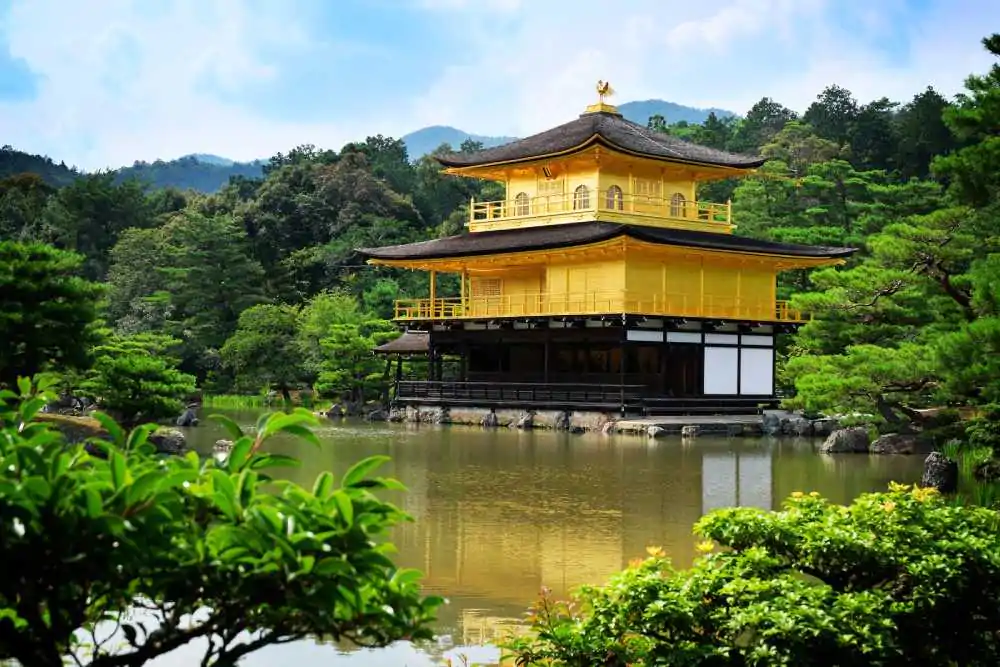
This topic is straightforward; whether you have been or not, try to persuade others to visit the country. Include highlights that others should visit and suggestions for places others can visit. If Japan was a bad experience for you, go the other way: why should you not visit Japan?
Japan has a dark history surrounding its role in World War II. In your essay, briefly explain these events and research their effects on Japan after the war. How did the war change Japan- for better or for worse? Elaborate on the impact and, as always, include references to strengthen your arguments. This is quite a broad topic, so you can focus on one element of Japanese society: values, city planning, relationships with tourists, race, inequality, and gender equality.
Based on reading articles and sample essays as well as any experiences in Japan, list the advantages and disadvantages of living in Japan and conclude whether it would be ideal for moving to Japan or not. Use anecdotes from travel writers or people who live in Japan to show why living in japan is enjoyable or not so enjoyable. Pick a stance for a compelling argumentative essay.
If you are interested in learning more, check out our essay writing tips !
If you’re stuck picking your next essay topic, check out our guide on how to write an essay about diversity .
Essay Service Examples Geography Japan
Essay on Why I Want to Visit Japan
- Proper editing and formatting
- Free revision, title page, and bibliography
- Flexible prices and money-back guarantee

Our writers will provide you with an essay sample written from scratch: any topic, any deadline, any instructions.
Cite this paper
Related essay topics.
Get your paper done in as fast as 3 hours, 24/7.
Related articles
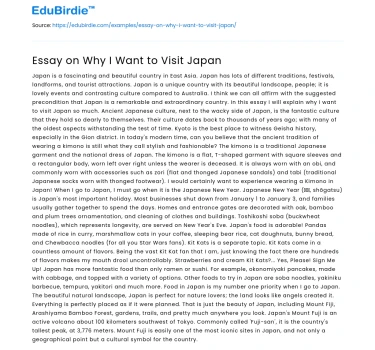
Most popular essays
- Personal Experience
It was just one of the ordinary days I was sitting on the gentle sofa drinking my cup of freshly...
- World War 2
World War II was a war fought between the Axis Powers and the Allies. Japan, part of the Axis...
- American History
- Pearl Harbor
Would the U.S. have entered World War II without Pearl Harbor? It's a very serious question that...
- Minimum Wage
Along with the general elements of wage formation in developed countries, there are national...
Released in 1970, ‘Tora! Tora! Tora!’ depicts the Japanese attack on Pearl Harbor on December 7th,...
Resilience and adaptation are terms that can certainly be applied a ship that started an eventful...
America tried to stop Japan’s expansion, Clues in ads came out to warn America. A large number of...
The siege of Leningrad (now St. Petersburg) lasted from 8 September 1941 to January 27 1944,...
- Atomic Bomb
The United States detonated two nuclear weapons over the Japanese cities of Hiroshima and Nagasaki...
Join our 150k of happy users
- Get original paper written according to your instructions
- Save time for what matters most
Fair Use Policy
EduBirdie considers academic integrity to be the essential part of the learning process and does not support any violation of the academic standards. Should you have any questions regarding our Fair Use Policy or become aware of any violations, please do not hesitate to contact us via [email protected].
We are here 24/7 to write your paper in as fast as 3 hours.
Provide your email, and we'll send you this sample!
By providing your email, you agree to our Terms & Conditions and Privacy Policy .
Say goodbye to copy-pasting!
Get custom-crafted papers for you.
Enter your email, and we'll promptly send you the full essay. No need to copy piece by piece. It's in your inbox!
The 10 most wonderful places to visit in Japan

Mar 28, 2024 • 6 min read

From buzzing cities to serene forest walks, these are our favorite places to visit in Japan © Taiyou Nomachi / Getty Images
Japan offers up a real feast for travelers, with mountainside onsen (hot spring) villages, beach-lined islands and buzzing megacities all on the menu.
You could arguably spend a lifetime sampling the country’s delights, but some towns and sights are staples – core ingredients to any great Japan trip. Here’s our pick of the 10 best places to visit in Japan .
Best for contemporary culture
Tokyo is a city forever reaching into the future, pushing the boundaries of what's possible on densely populated, earthquake-prone land, and building ever taller, sleeker structures.
It's Japan's top spot for contemporary art and architecture, pop culture, shopping, drinking and entertainment (and a tie with Kyoto for dining). But more than any other sight, it's the city itself that enchants visitors.
It's a sprawling, organic thing, stretching as far as the eye can see. Constantly changing with a diverse collection of neighborhoods , no two experiences of Tokyo are ever the same.
Planning tip: Tickets for sumo, kabuki and Giants baseball games usually go on sale one to two months in advance. The Imperial Palace and Ghibli Museum are other popular attractions that require prior planning.

Best for traditional experiences
Kyoto , Japan's imperial capital for a thousand years, is home to more than a thousand temples. Among them are the monumental, like Kinkaku-ji (an exquisite pavilion sheathed entirely in gold leaf), and the meditative, like Ryōan-ji , with its stark Zen rock garden.
And temples are only the beginning. There's the culture of tea, which you can appreciate at one of the city's many elegant teahouses; the art of the geisha, those iconic performers of traditional music and dance; and also a rich food culture, including kaiseki (Japanese haute cuisine).
3. Naoshima
Best for architecture
Naoshima is one of Japan's great success stories: once a rural island on the verge of becoming a ghost town, it's now a world-class center for contemporary art.
Many of Japan's most lauded architects have contributed structures, including museums, a boutique hotel and even a bathhouse – all designed to enhance the island's natural beauty and complement its existing settlements.
The resulting blend of avant-garde and rural Japan is captivating. It has also inspired some Japanese to pursue a slower life outside the big cities, relocating to Naoshima to open cafes and inns.
Planning tip: Try to plan your visit during one of the three exhibitions of the Setouchi Triennale festival, which happens during the spring, summer and fall every three years – the most recent was in 2022. Naoshima hosts various art, drama, music and dance events that make this festival really special.

Best for views and pilgrimages
Even from a distance, Mt Fuji will take your breath away. Close up, the perfectly symmetrical cone of Japan's highest peak is nothing short of incredible. Dawn from the summit? Pure magic.
Fuji-san is among Japan's most revered and timeless attractions. Hundreds of thousands of people climb it every year, continuing a centuries-old tradition of pilgrimages up the sacred volcano.
Those who'd rather search for picture-perfect views from the less-daunting peaks nearby will be following in the steps of Japan's most famous painters and poets.
Planning tip: The best time to climb Mt Fuji is during its official season, from July 1 through mid-September, which avoids the rainy season and snowfall. Always check for typhoon warnings before hiking in Japan.
5. Hiroshima
Best for introspection
Hiroshima today is a forward-thinking city with attractive, leafy boulevards. It's not until you visit the Peace Memorial Museum that the true extent of human tragedy wreaked by the atomic bomb becomes vividly clear.
A visit here is a heartbreaking, important history lesson. The park around the museum , much of which was designed by Japan's great modernist architect Tange Kenzō, offers many opportunities for reflection.
But the city's spirit of determination – as well as its food – will ensure that you'll have good memories to take with you when you leave.

6. Yakushima
Best for forest bathing
Yakushima, a small island off the coast of southern Kyūshū , is often described as magical and enchanting – otherworldly even. It's a place where words fail and clichés step in.
Home to some of Japan's last primeval forests, you'll find the yakusugi , an ancient cedar native to the island whose giant roots seem to form alien tentacles.
Hiking trails underneath them cover craggy terrain, often fuzzy with moss. The landscape here is believed to have inspired the iconic Studio Ghibli animated film, Princess Mononoke .
Detour: When you're not hiking, stop by the Yakusugi Museum to learn more about the importance of yakusugi to the islanders of Yakushima. An English audio guide is available.
7. Koya-san
Best for exploring temples
Riding the funicular up to the sacred Buddhist monastic complex of Kōya-san feels, appropriately, like ascending to another world.
There are over a hundred temples here, the highlight of which is Oku-no-in , where paths weave their way among towering cryptomeria trees and time-worn stone stupas covered in moss and lichen.
Other temples offer a different experience: the chance to spend the night, dine on traditional vegetarian Buddhist cuisine and wake up early for morning meditation with the resident monks.
Planning tip: Though Japanese temples and shrines do not have established dress codes, visitors are expected to stay relatively quiet in these sacred spaces.
8. Okinawa and the Southwest Islands
Best for beaches
Okinawa and the Southwest Islands offer a totally different experience from the rest of Japan. This semi-tropical archipelago forms an arch between Kyūshū and Taiwan .
Until the islands were annexed by Japan in the 19th century, they formed their own kingdom – the Ryūkyū Empire – and the cultural differences are apparent in everything from the architecture to the food.
This is where you'll find Japan's best beaches, like those on the Yaeyama Islands and the Kerama Islands, with sugar-white sand fringed with palms and turquoise waters. Bask in the sun, or snorkel and scuba dive.

Best for street food and nightlife
Tokyo doesn't nab all the superlatives when it comes to urban experiences. Osaka , Japan's third-largest city, is tops for street food: don't miss its signature dish, takoyaki (grilled octopus dumplings).
It also has the most dramatic of nightscapes: a dazzling display of LED lights, animated signage and flashing video screens along the canalside strip Dōtombori .
The city, Japan's oldest merchant center, has a pace, spirit and zest for life all of its own; its unofficial slogan is kuidaore (eat until you drop).
Planning tip: In addition to nightly accommodation fees, Osaka hotels will typically charge an accommodation tax that varies depending on the standard nightly rate.

10. Kamikōchi
Best for mountain hikes
One of Japan's most stunning natural vistas, Kamikōchi is a highland river valley enveloped by the soaring peaks of the Northern Japan Alps .
Easy day hikes are possible along the Azusa-gawa, following the pristine river through tranquil forests of willow, larch and elm.
The birthplace of Japanese alpinism, Kamikōchi is also the gateway for more challenging treks up some of the country's tallest mountains, such as Yari-ga-take (3180m/10,433ft). Private cars are banned from Kamikōchi, which lessens the impact of the crowds.
This article was first published Apr 29, 2021 and updated Mar 28, 2024.
Explore related stories

Tips & Advice
Aug 8, 2024 • 13 min read
The stunning beaches of Seychelles are in close reach when you use points and miles. Here's how to get started.

Aug 5, 2024 • 6 min read

Jul 12, 2024 • 6 min read

Jun 12, 2024 • 8 min read

May 3, 2024 • 14 min read

May 1, 2024 • 9 min read

Apr 14, 2024 • 6 min read

Apr 3, 2024 • 17 min read

Mar 31, 2024 • 7 min read

20 Reasons Why You Should Visit Japan
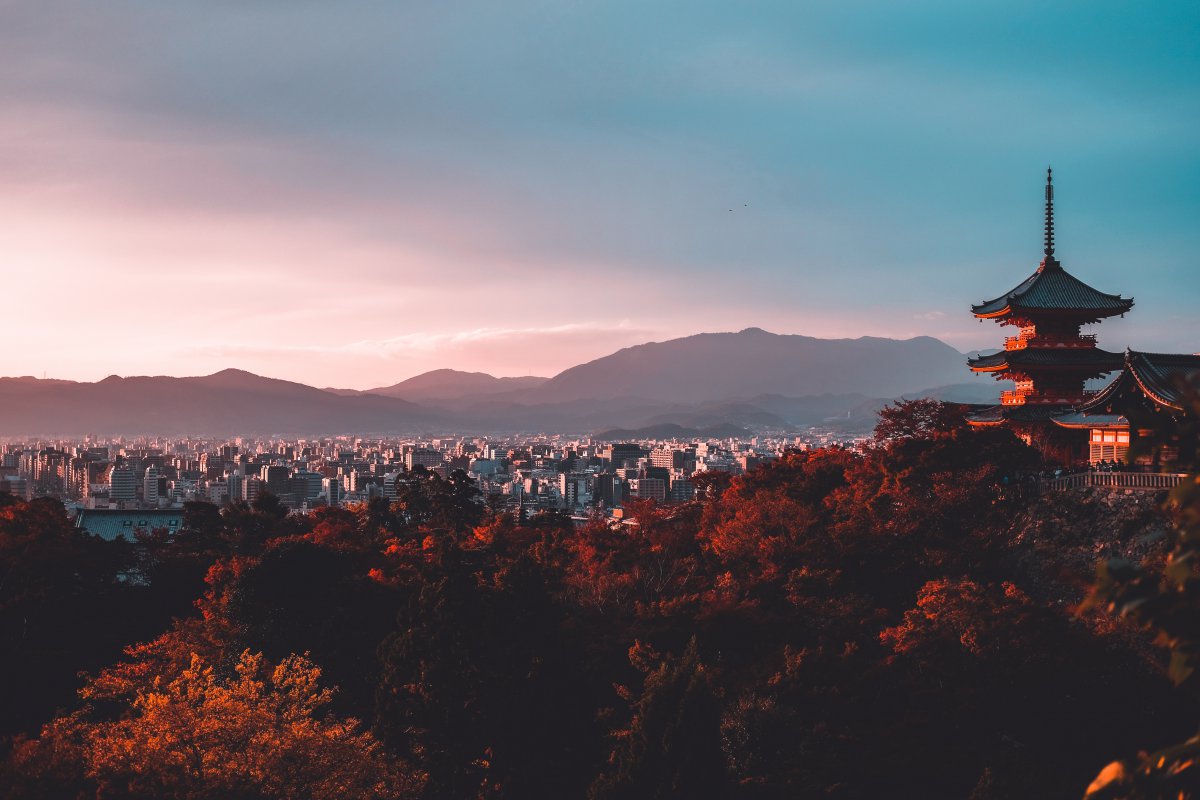
Japan is the most amazing tourist destination and it offers many unique experiences that you cannot find in any other part of the world. The culture of this country is an interesting blend of Eastern traditions and Western modernity that can be seen everywhere. Japan is one of the oldest civilizations and has a beautiful and diverse history. The stunning, diverse scenery with mountains and breathtaking views, which are much appreciated by the Japanese, offers so many different experiences that attract tourists from all corners of the world. In this article, we give you our best reasons why you should make a trip to this amazing country at least once in your lifetime.

1. Pristine natural scenery
2. mount fuji , 4. incredible food, 5. beautiful temples, shrines, and zen gardens, 6. friendly people, 7. efficient public transportation, 8. thrilling experiences , 9. festivals/matsuri, 10. clean country, 11. shopper’s paradise, 12. weird stuff, 13. sakura (cherry blossoms), 15. onsen & sento , 16. unesco world heritage sites, 17. japanese castles , 18. sumo & sport events, 19. traditional arts and crafts, 20. unique accommodation, japan wonder travel tours , other articles you might like.
The first reason to visit is obviously the natural beauty of the country. Even though many people think of Japan as a highly modern country with flashy neon lights and advanced technology, shopping malls and high-end stores, there are many ways in which Japan is a nature lover’s paradise as well!
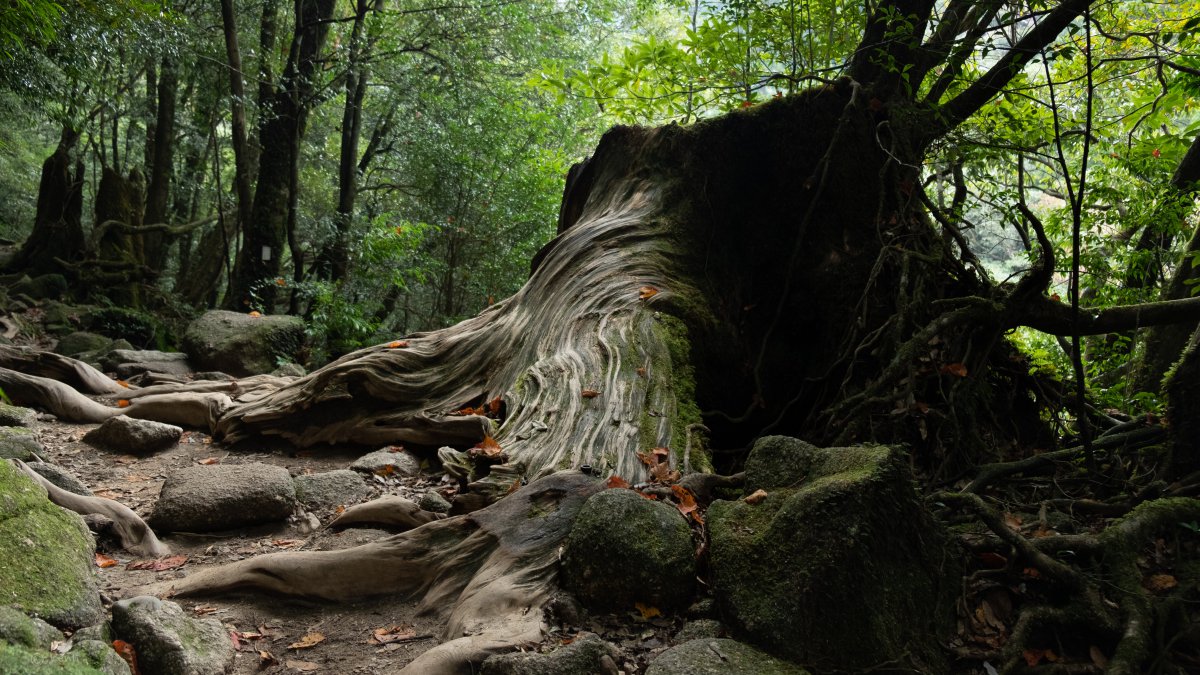
As soon as you travel outside of the big and modern cities you will discover that the country is home to some of the best natural scenery in the world . From the wilderness in Hokkaido to the white pristine beaches of Okinawa , Japan’s nature is incredibly diverse. The rugged mountains, rocky coastlines, pristine white beaches, bamboo forests and some of the world’s most beautiful waterfalls are just some of the natural beauty to be enjoyed all year round.

Mount Fuji is famous all over the world as a place to visit during any season of the year. But the majestic Fujisan is not ‘just a mountain’ as it takes a very special, sacred place in the Japanese culture. Since the 7th century it has been a sacred site for Shintoism, the indigenous religion of Japan . Japanese people have always held Mount Fuji close to their heart and Mount Fuji is displayed in many artistic outings, including (ancient) pottery, calligraphy, ukiyo-e paintings and woodblock prints.
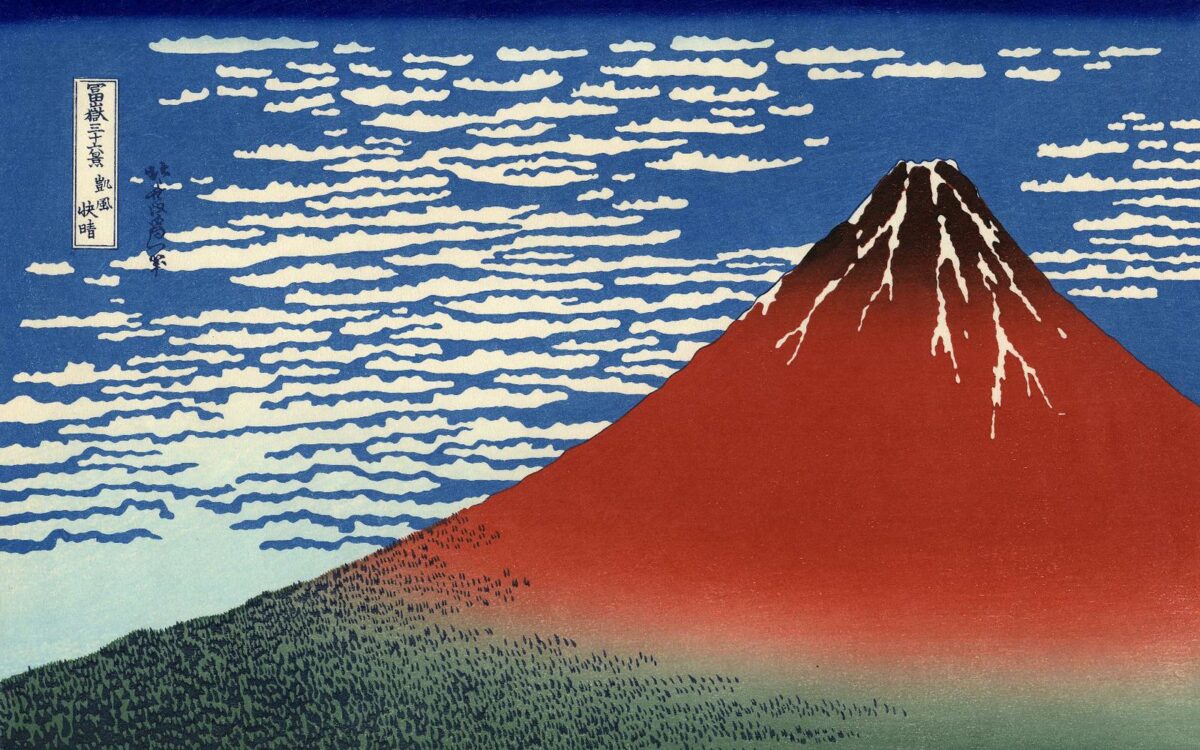
Climbing Mount Fuji is at the top of many people’s bucket list and an estimated 400,000 people climb the volcano each year. The climbing season of the highest peak (3,776 m) in Japan lasts from early July to early September. Though, even if you are not keen on making your way to the summit, Mount Fuji is a sight to behold .
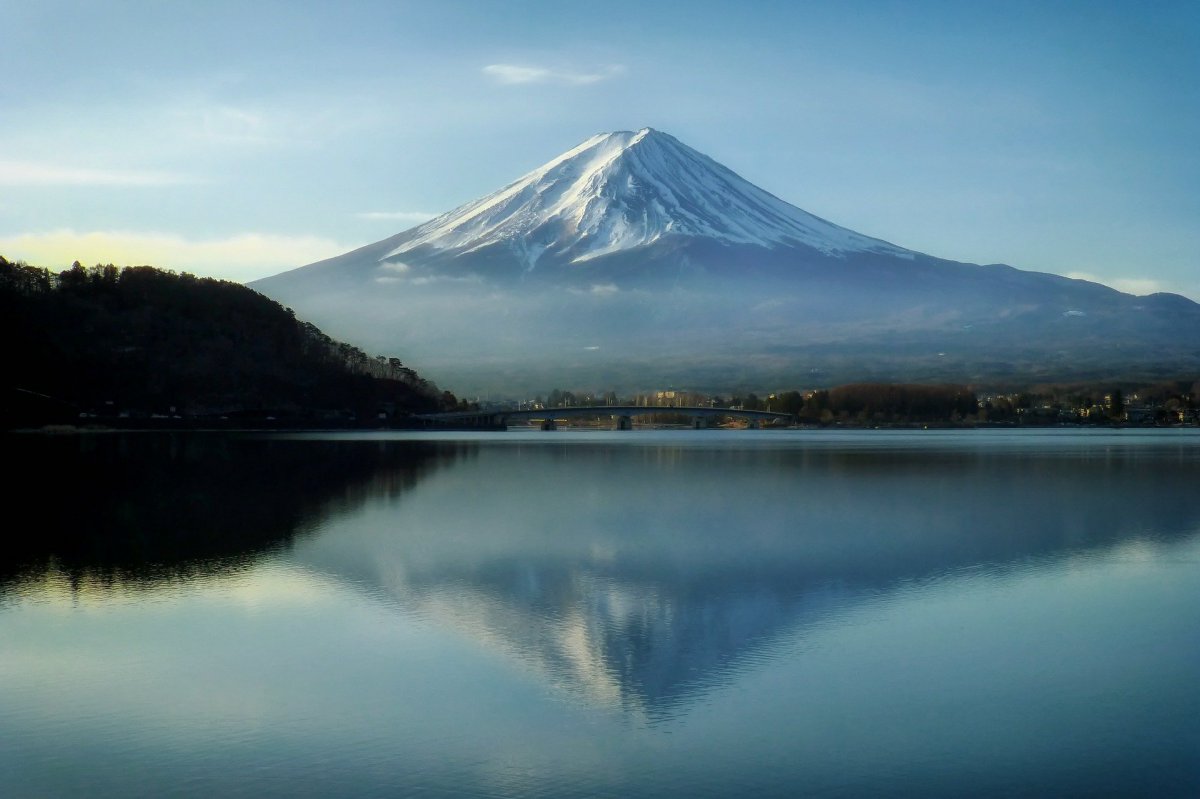
▼Book our tour to the 5th station of Mt. Fuji!
Japan is amongst the safest countries in the world , with an extremely low crime rate. This is something the Japanese are, understandably, quite proud of. Japanese people often leave their doors unlocked, children are perfectly safe traveling on the subway by themselves, and visitors are able to walk around the cities at night without having to worry. Japan’s low crime rate is partly due to the cultural belief in Japan where they always prioritize the common good above their own needs. You will likely come across some situations that you might think of as dangerous or stupid behaviour, but are perfectly normal in Japan. Japan is so safe, you can fall asleep on the train in Tokyo, the world’s biggest city, and wake up with your wallet and phone still in your possession. Or even on the street, you might see some salaryman passed out after 1 or 2 drinks too many but they won’t be robbed of their valuables. When you do forget something in a restaurant or on the train, always try to go back, it is highly likely that someone kept it for you or brought it to the police!
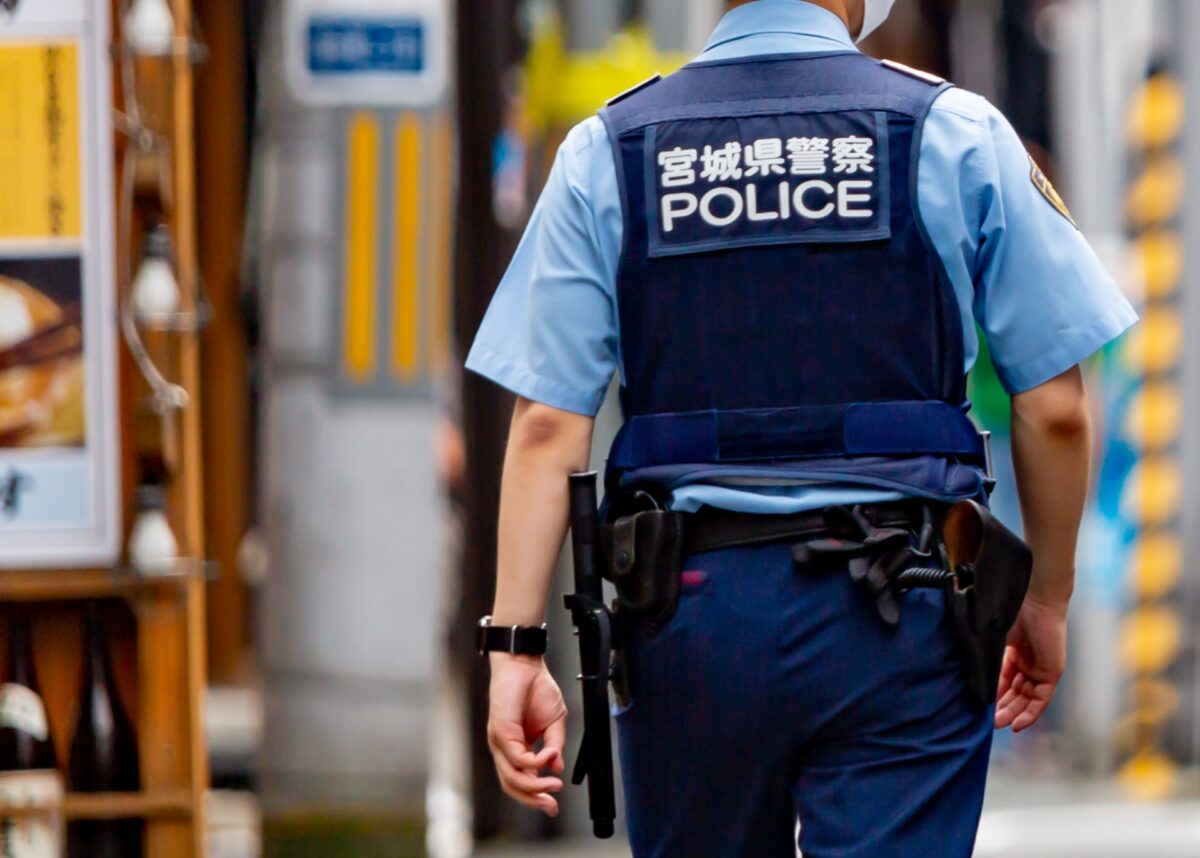
Even though Japanese cuisine is available around the world, the country attracts millions of tourists every year just to experience authentic Japanese food . Some of the usual experiences are the sushi conveyor belt and sake bars and don’t forget to try some fresh sushi at Tsukiji Fish Market or the delicious street food like takoyaki in Osaka.
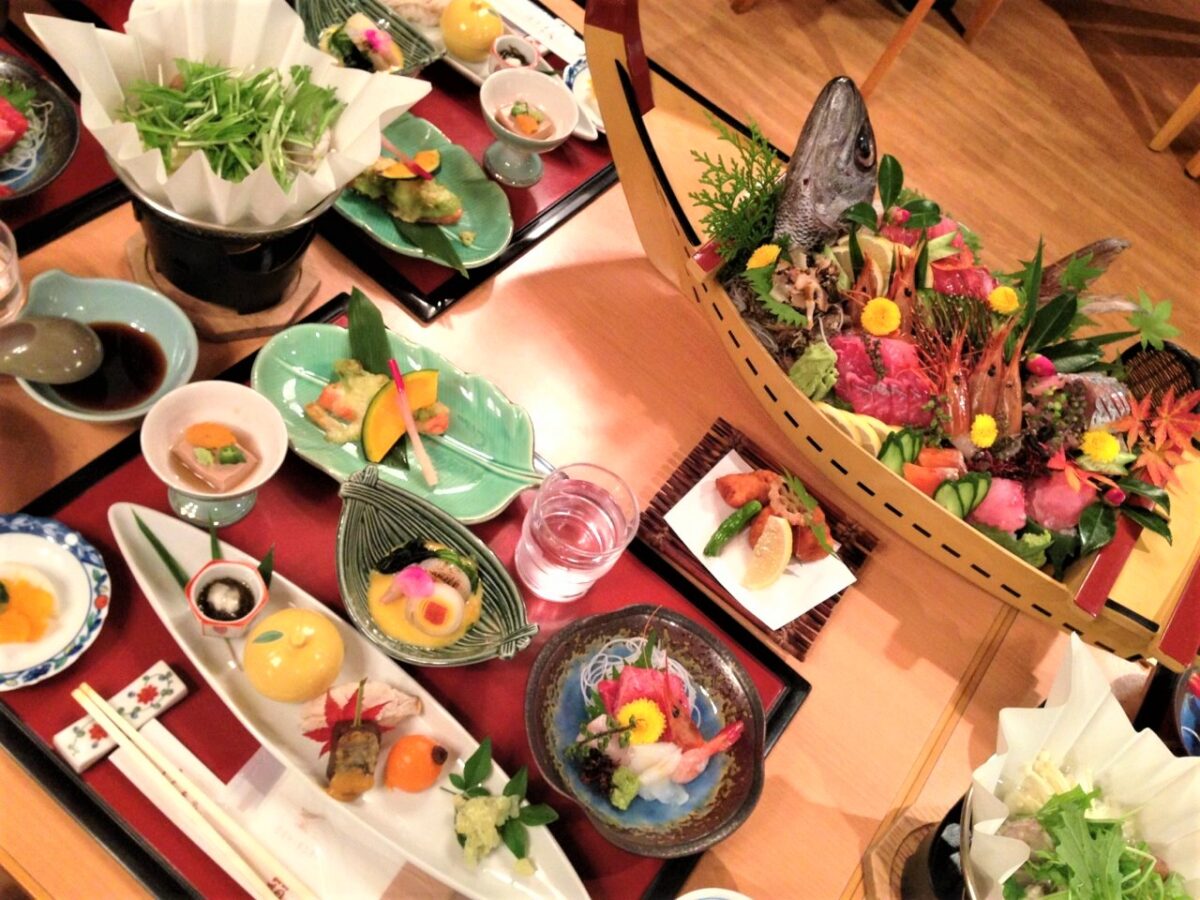
For many visitors, a trip to Japan provides the opportunity to indulge in some authentic Kaiseki food. Kaiseki is a traditional form of cuisine that has evolved over a period of thousands of years, using ingredients that are hardly found in any other part of the world. Any random, shady looking place makes the best sushi, ramen or tempura. Even the konbini food is tasty and freshly prepared on a daily basis. Tokyo has more Michelin stars than any other city in the world , with also the most three-star restaurants (12) in the world! Add to it a variety of traditional Japanese drinks and you have an experience of a lifetime waiting for you!
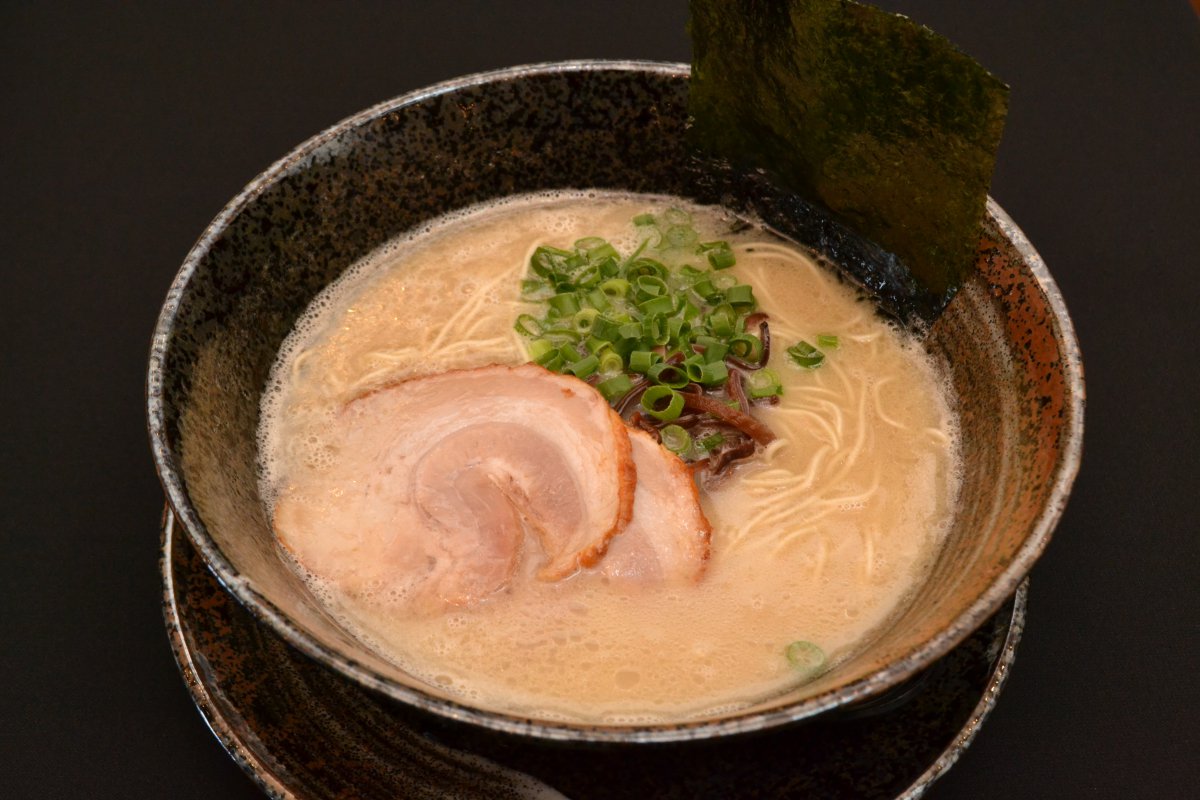
Are you hoping to try all the best food in Japan but don’t know where to start? Don’t worry, you can book a fun and delicious food and drink tour with us! We will assure that you will hit all the best spots that you would never normally stumble upon.
There are an estimated 80,000 temples and shrines in Japan of all sizes and some are over 1,000 years old! The Buddhist temples and zen gardens are incredibly beautiful and if you enter them you really can experience how peaceful and magical these places actually are.
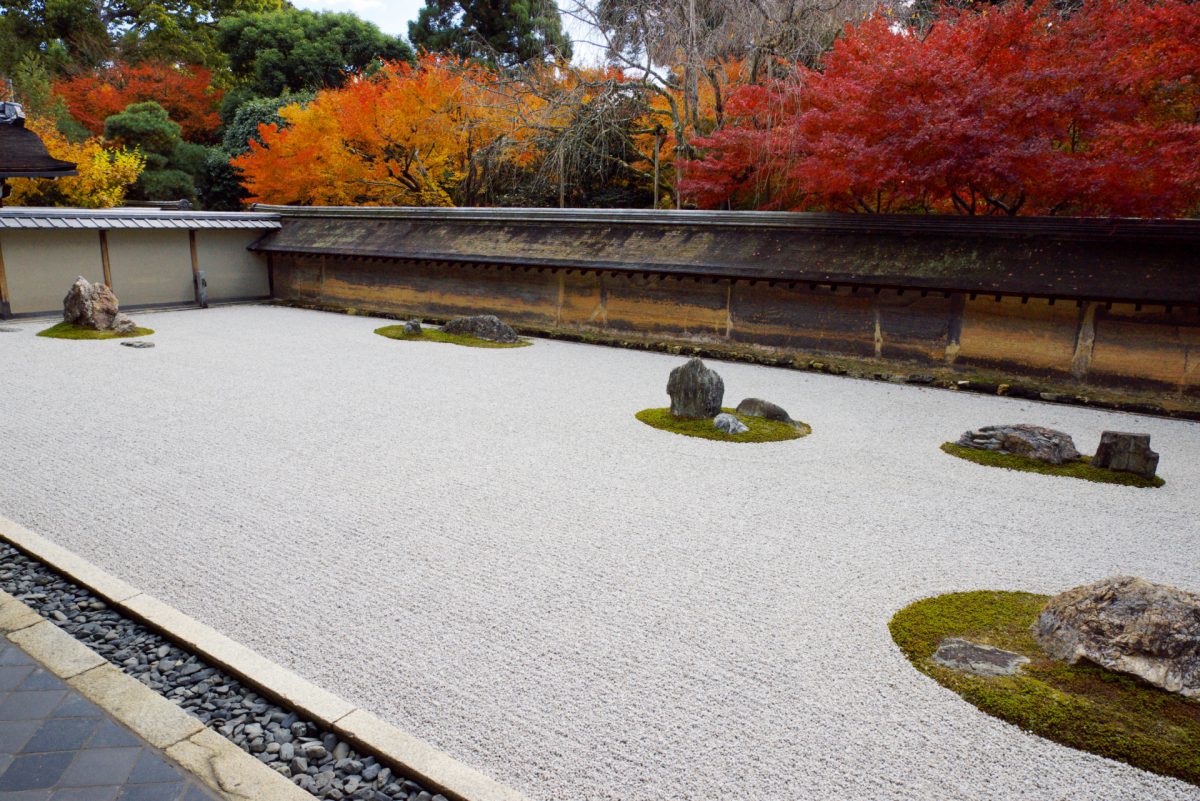
Inari Shrines are the most familiar Shinto shrines to Japanese people and they are also known as “o-inari-san”. Thousands of them are spread all over the country. One of the most important Inari Shrine is Fushimi Inari in Kyoto, which is dedicated to Inari, the Shinto god of rice. It is famous for its thousands of vermilion Torii gates and definitely something you have to see with your own eyes.
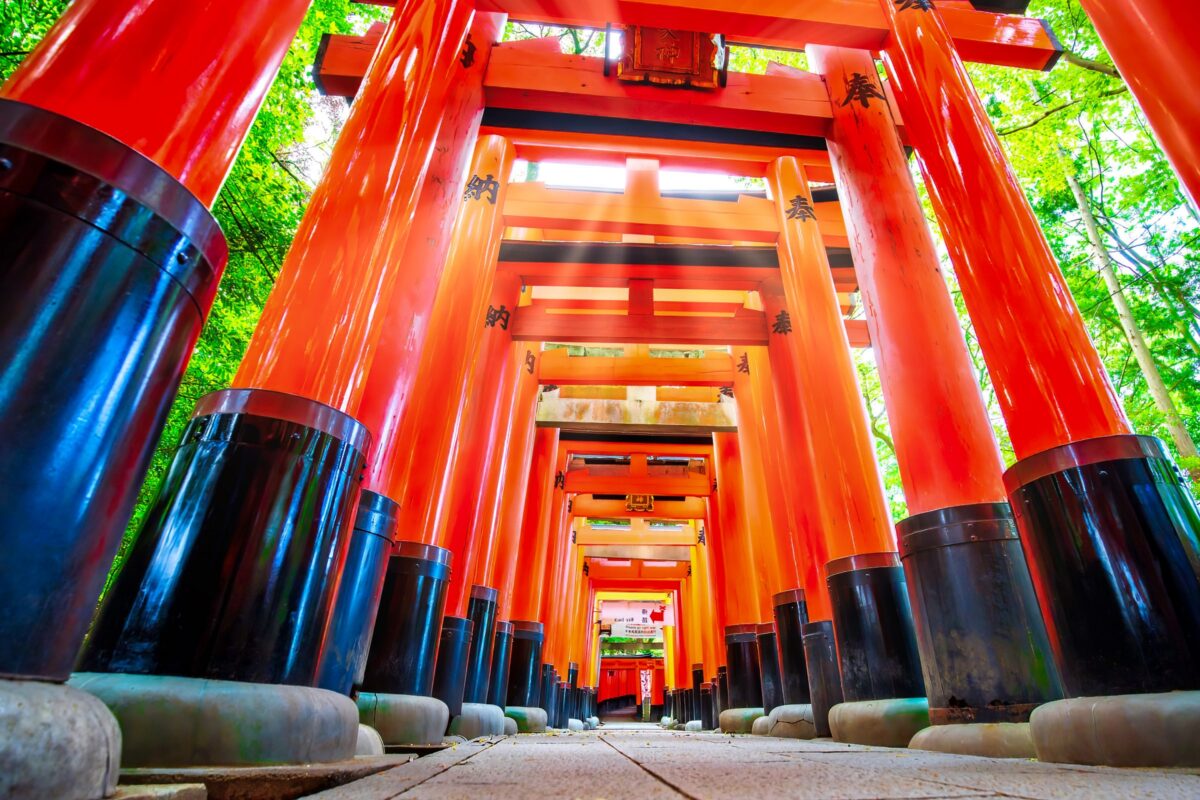
Even if you are not visiting Kyoto, you will have the opportunity to visit shrines with rows of torii gates throughout the country , even in the centre of Tokyo!
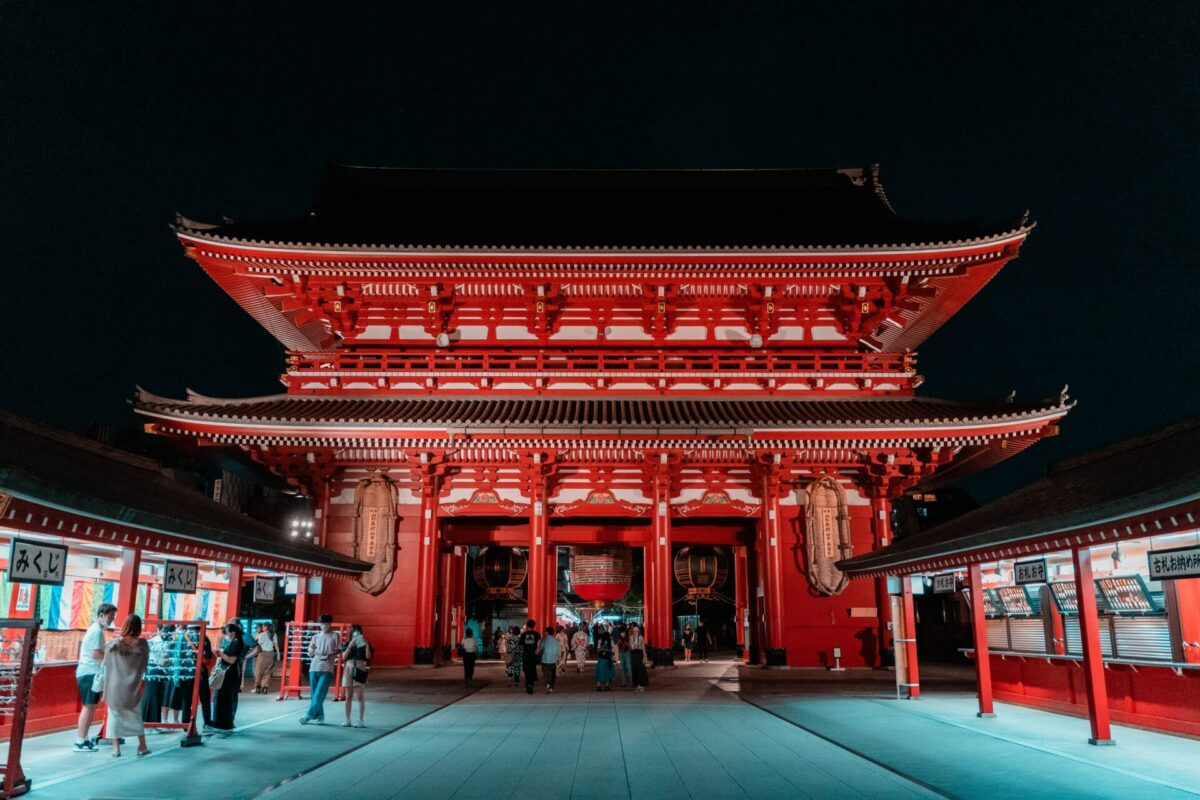
When you’re visiting Japan you will quickly find out that Japanese behavior is completely different to how people behave in Western countries. People in japan have the attitude to bother the people in their environment as little as possible. You will notice it as soon as you enter the train because it is amazing how silent it is in the train! Everyone is as respectful as possible and also incredibly helpful. If you have a question or seem to be confused about something you will always find someone who can help you! The language barrier is difficult at times, but Japanese people will always try to help you. It is difficult to describe a feeling like this with words so you should definitely experience on your own.
Recommended article: Why You Should Learn Japanese

The public transportation network in Japan is simply amazing . Especially when you are in the bigger cities, the system is just incredible. With trains or metro’s departing every few minutes (during the day) it is amazing how fast you can commute from one part of the city to another part within a short period of time.

The famous shinkansen, also known as the bullet train, takes you to all parts of the country. The extensive high-speed train network in Japan, connecting Hokkaido, Honshu and Kyushu, is extremely reliable with frequent departures throughout the day. The Tokaido Shinkansen line, connecting Tokyo, Osaka and Kyoto, is Japan’s busiest and most popular line with 370 departures each day! As a tourist it is definitely the most convenient, reliable, fastest way of discovering Japan . The best part for international tourists is that they can purchase a Japan Rail Pass that will give them unlimited travel for a designated period of time throughout the country!
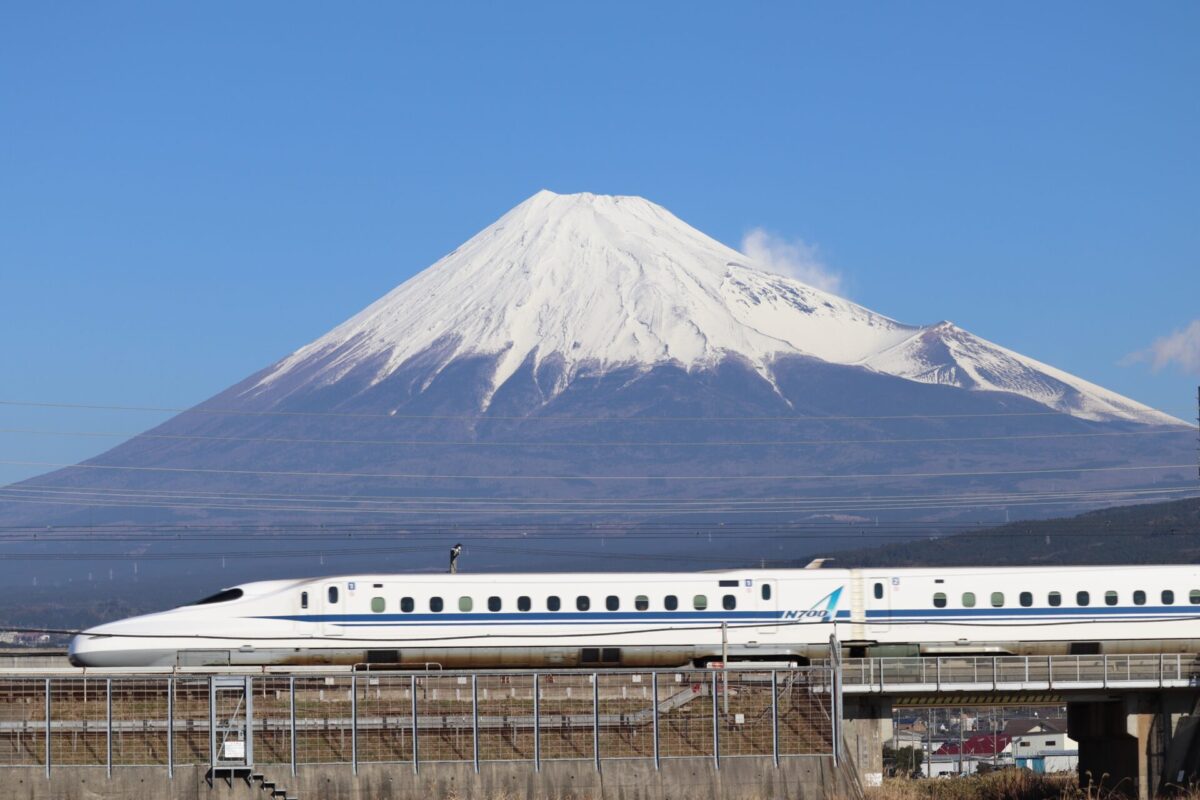
Adventure tourism is not something that one would associate with Japan, but the truth is that you can find many exciting experiences in this country. Whether it is snowboarding or skiing in Hokkaido or Nagano , or cycling along the Seto Inland Sea , catching a glimpse of Mount Fuji from the rollercoasters of FujiQ Highlands or sand-boarding in Japan’s desert of Tottori , the options for thrill-seekers are endless.
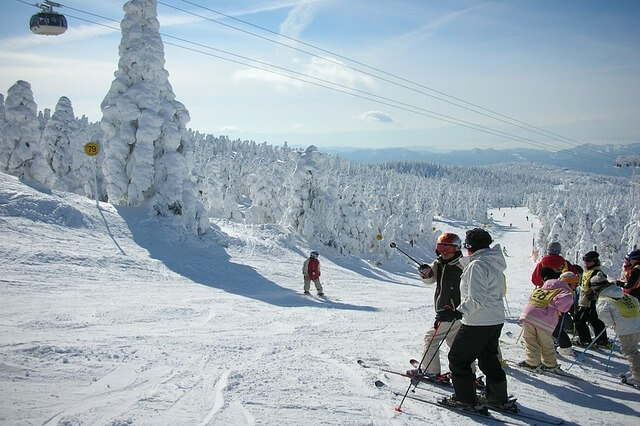
With about 75% of Japan covered in mountainous landscape you can embark on some amazing multi-day hikes or walk the steps of ancient pilgrimage routes like the Kumano Kodo Trail or the Shikoku 88 Temples Pilgrimage and witness the perfect mixture of nature and culture. At many tourist spots like Arashiyama or Asakusa you can also actively explore the area while riding a traditional Japanese rickshaw.

At any time of the year, Japan hosts a number of events and matsuri for anyone to enjoy . Matsuri are traditional Japanese events where often floats, called mikoshi, are carried around between temples and shrines. They often take place in the summer and attract thousands or even millions of visitors with their energetic atmosphere, and amazing street food activities for everyone to enjoy.
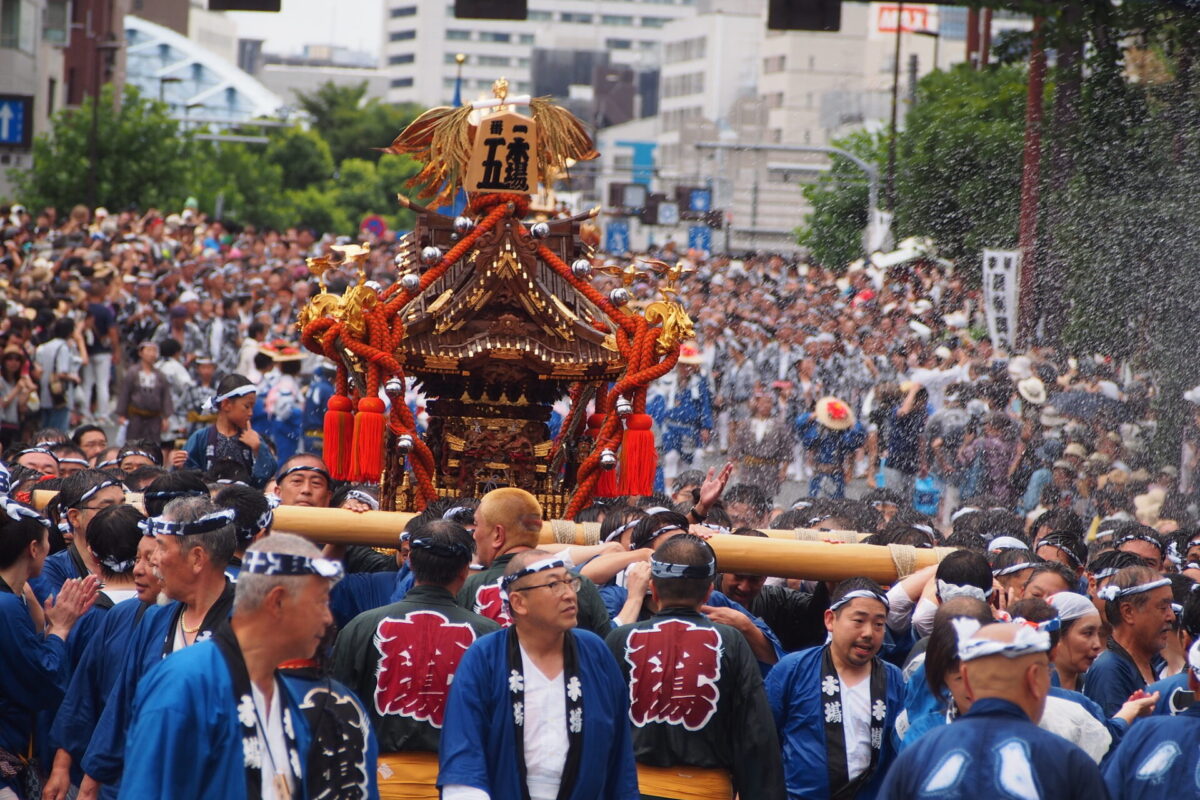
In wintertime you will find some unique and great festivals too, like the Kamakura snow hut festivals that are held around the country. There are also several illumination festivals with spectacular light shows and decorations, some only over the Christmas period where others last well into spring. Another world famous festival is Sapporo’s Snow Festival that attracts millions of visitors each year with spectacular ice sculptures and cozy winter scenes.

Something that you will soon notice after your arrival; Japan is extremely clean ! Even in the metropole of Tokyo you will not often see trash laying around, no cigarette butts on the curbs and streets smell nice. The lack of garbage bins available in the cities might make you wonder how is this even possible? The answer is simple, Japanese people respect their surroundings, clean up after themselves and take their trash home. A cultural principle that is highly valued in the Japanese society is mottainai , which can be freely translated as nothing goes to waste. When something is broken, it is not immediately replaced but often repaired and re-used.
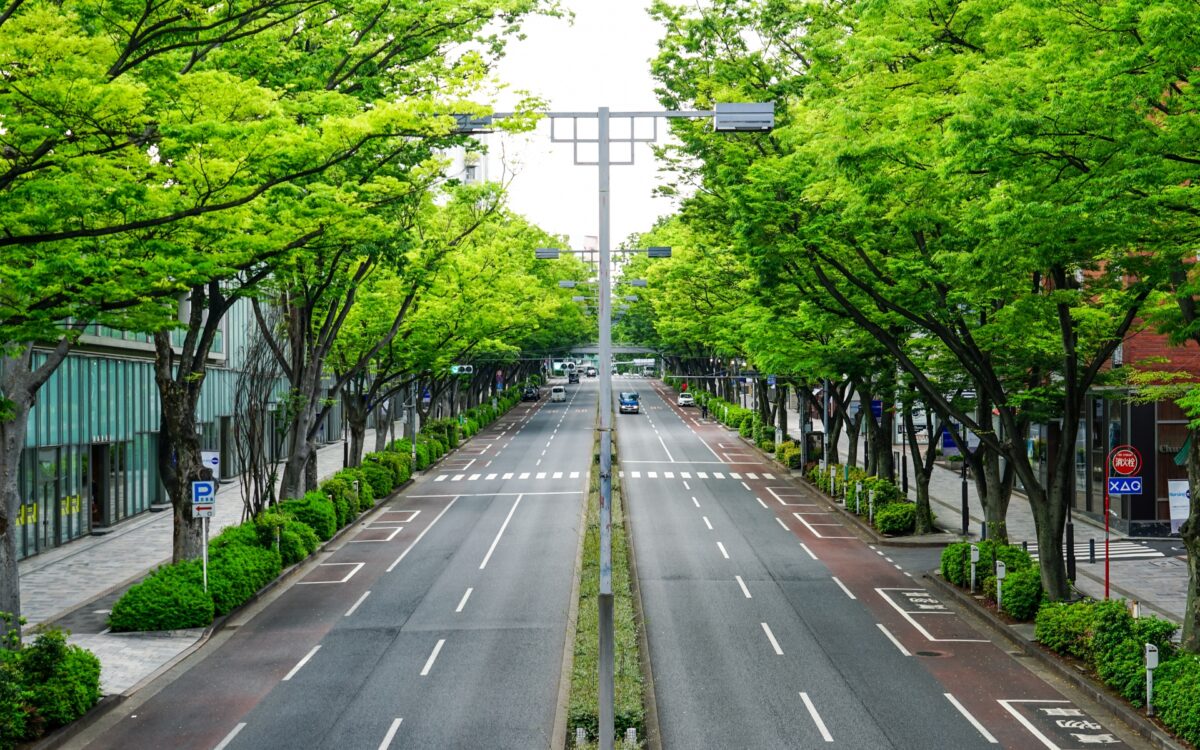
Shopping is another reason why you should visit Japan, more so for the local brands than for the international ones. Tokyo and other major cities have world-class shopping centers as well as traditional markets where you can shop for local handicrafts and souvenirs. Often cities, small or big, have their own local shopping street.
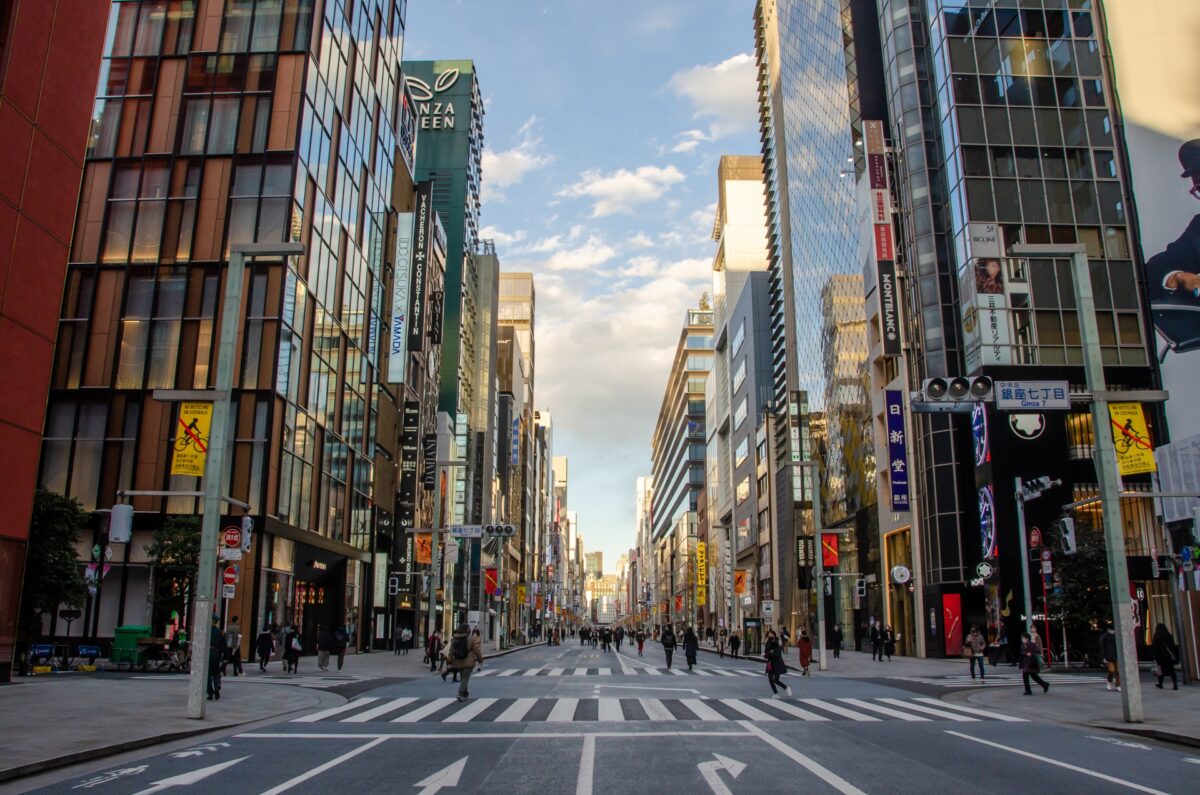
These shopping streets full of small stalls and local vendors are known as a Shotengai. If you are travelling to Tokyo, then you should visit the popular areas in Harajuku, Ginza and Akihabara. If you go to Osaka, Umeda and Shinsaibashi are also popular shopping destinations. For gaming and anime lovers, shopping in Tokyo will be an unforgettable experience, Nakano would be the best destination for you .
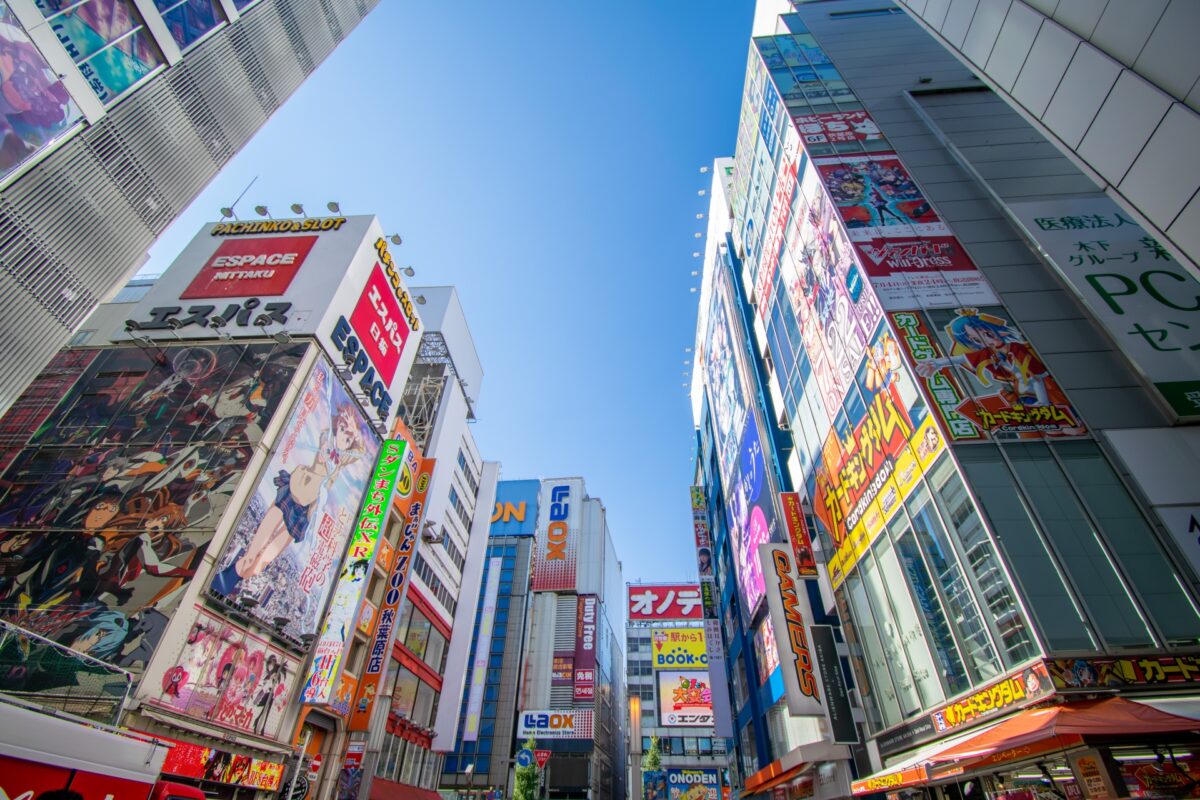
Square watermelons, washing toilets that blow-dry and play music, plastic food menus, cartoon versions and mascottes of everything, maid cafe etc, Japan has all kinds of unique things.
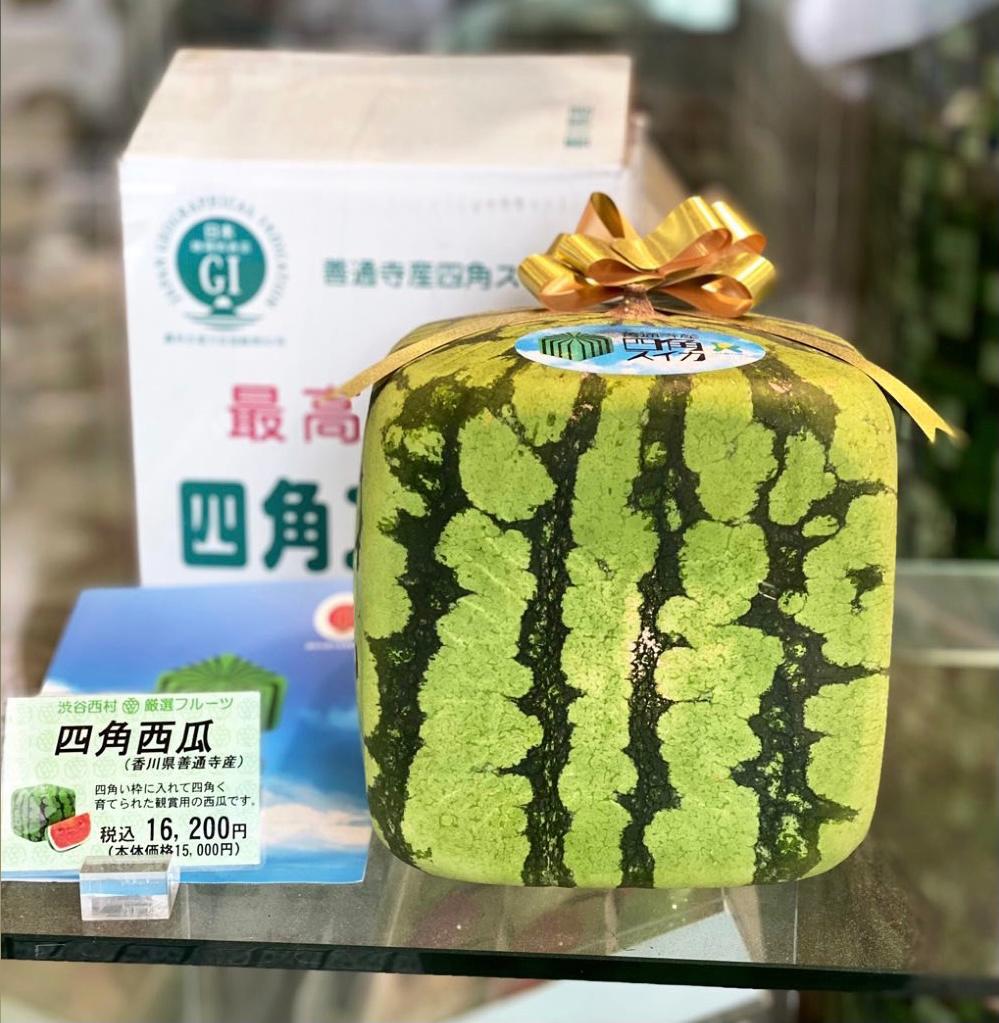
Walk around in Harajuku to experience the famous Japanese kawaii culture , it is literally everywhere! Cute girls, kawaii food, mascottes, the kawaiiness in Japan knows no limits! Another unique popular culture is Japan’s otaku or geek culture. Otaku refers to pop culture fans who are obsessed with manga or anime. Best places to experience some of Japan’s otaku culture are Akihabara and Nakano in Tokyo.
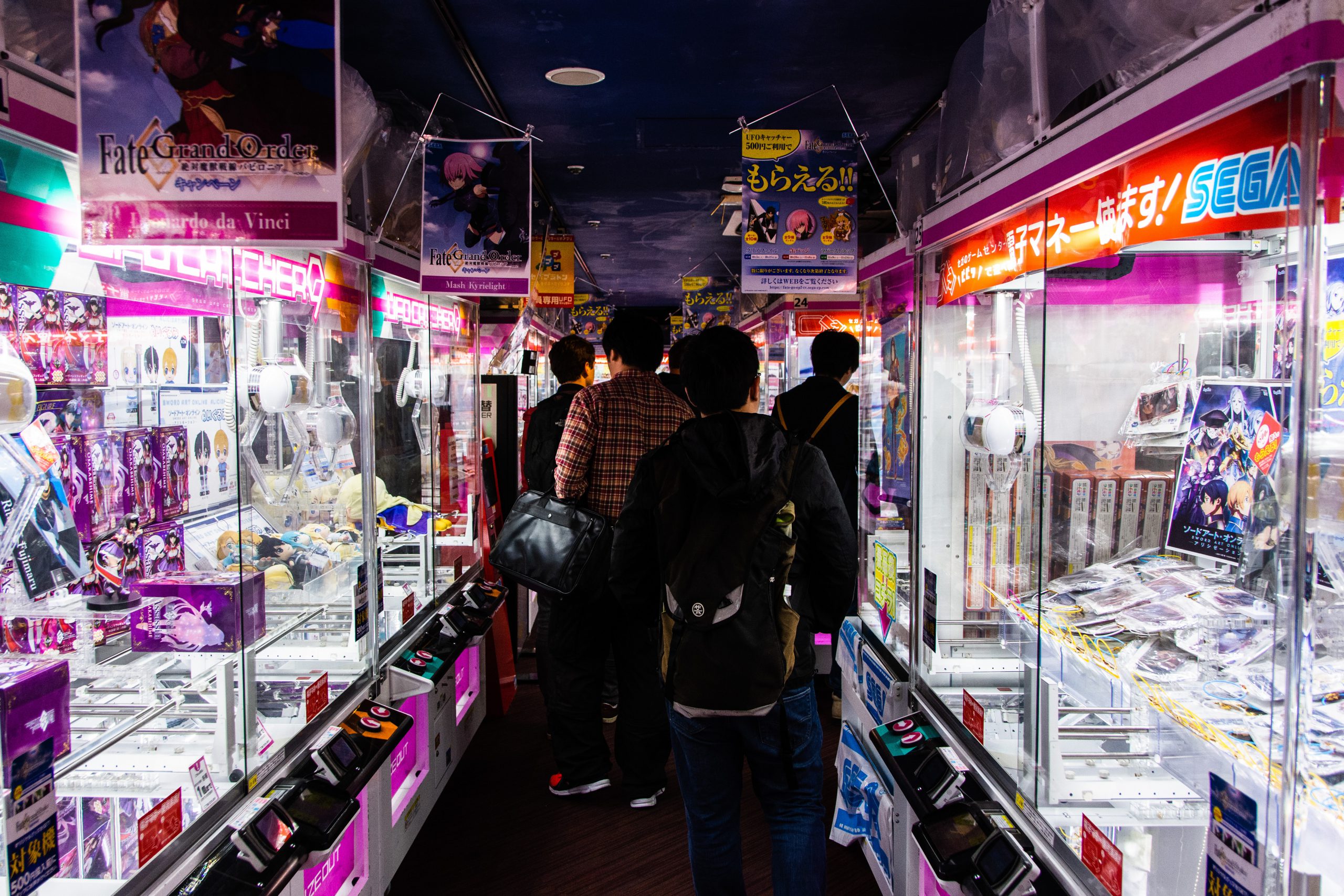
No visit to Japan in spring is complete without sakura. For two weeks, everyone and everything in the spirit of the beautiful flowers. Everyone wants to see this million dollar view and hanami (blossom viewing parties) are everywhere. Japan is very passionate about picnicking under the cherry trees in full blossom.

Sakura presents the arrival of spring, a time for renewal and optimism and because of the short blooming season (about two weeks), the cherry blossoms also symbolize the transience of life, a major theme in Buddhism. During the sakura season you will see limited edition sakura (flavoured) treats and souvenirs everywhere.
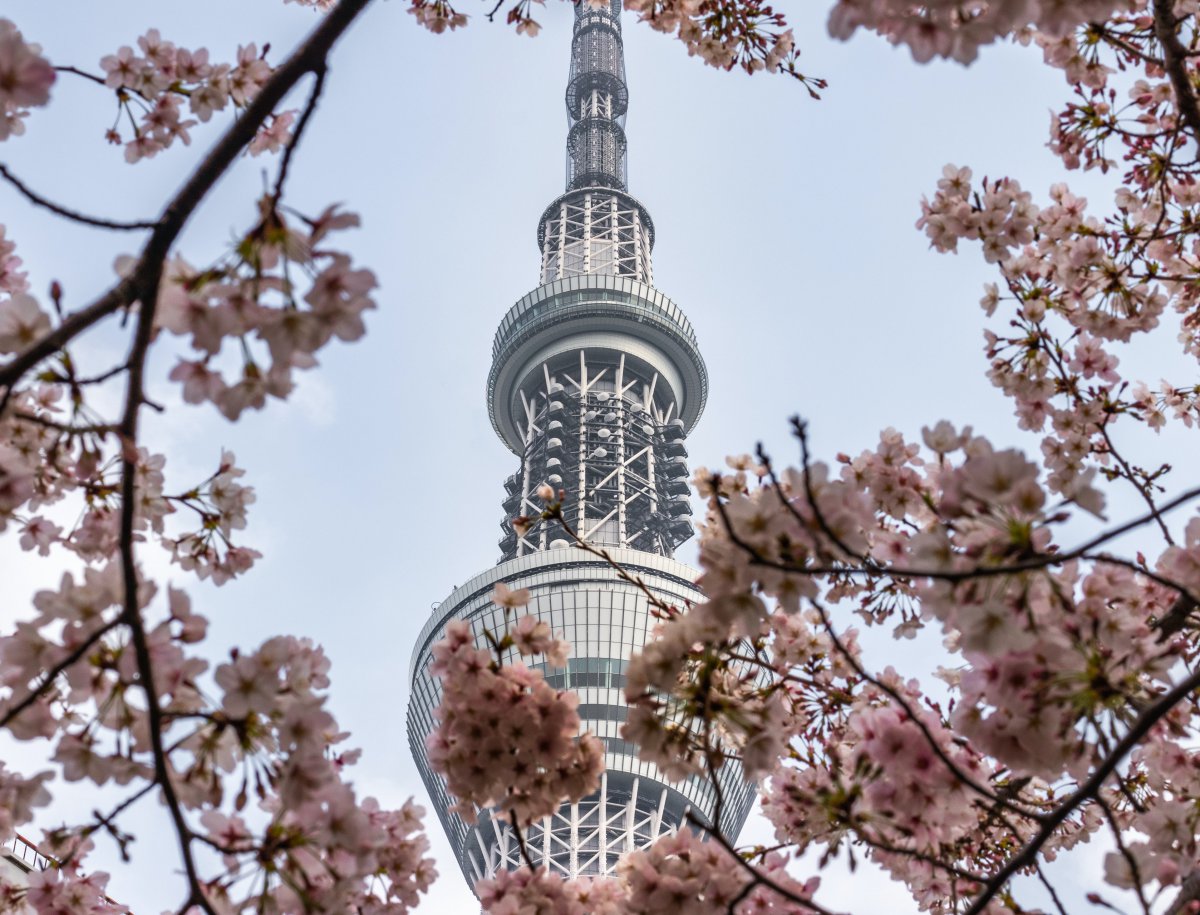
One of the biggest contributors to Japan’s famous anime culture is the Ghibli movies. Have you ever seen My Neighbor Totoro or Spirited Away? They are some of the world’s most famous anime movies produced by the renowned Studio Ghibli, the animation and art producer founded by Hayao Miyazaki. In Tokyo, you can visit the Ghibli Museum , home to drawings of Studio Ghibli movies, models of how animations are made, and a small theater showing a special short film. Also, Japan opened the Ghibli-themed park in Aichi prefecture in 2022. A must visit if you are a Ghibli fan! If you want something extra, you may want to visit some of the locations which were used in Ghibli movies !
When asked about their favourite thing in Japan, many people will (amongst others) answer onsen. Taking an onsen, a hot spring filled with mineral-rich spring water heated by geothermal forces that contains several minerals beneficial to the body, is a must-try activity for tourists as it is completely different from taking a bath in other countries around the world. It is also a big part of the Japanese culture and the ultimate activity to relax after a day filled with discovering the nature and culture of Japan. There are several written and unwritten rules to respect when taking an onsen, a ritual that dates back to at least the 8th century. Famous onsen destinations are Kusatsu Onsen, Hakone Onsen and Beppu Onsen .
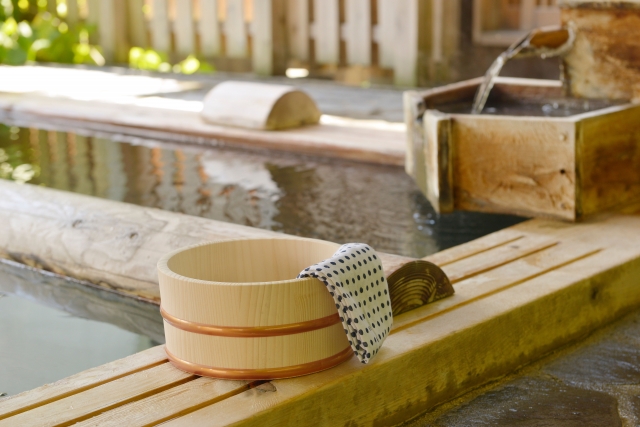
Sento are communal bath houses where people pay for their entrance. These bath houses were traditionally used by households that did not have their own bath and could be found in big cities and small villages. Today, the number of sento is decreasing as the number of houses with bathing facilities is increasing.
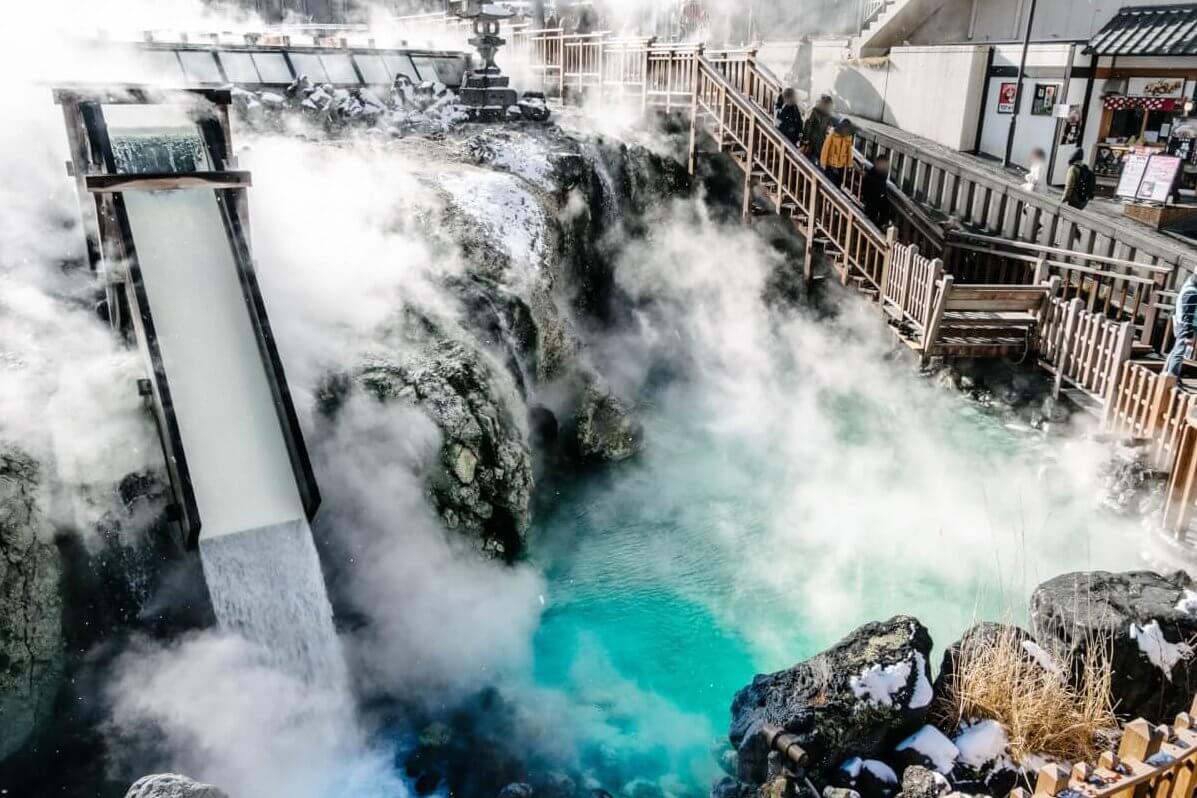
By now you should know Japan is home to some of the world’s most picturesque places, a rich culture and a long history. Indeed, Japan is home to no less than 23 UNESCO World Heritage Sites ; 19 Cultural Heritage Sites and 4 Natural Heritage Sites. Ranging from historically important shrines like Itsukushima Shinto Shrine on Miyajima to unique natural ecological treasures like Mount Fuji or Shiretoko National Park.
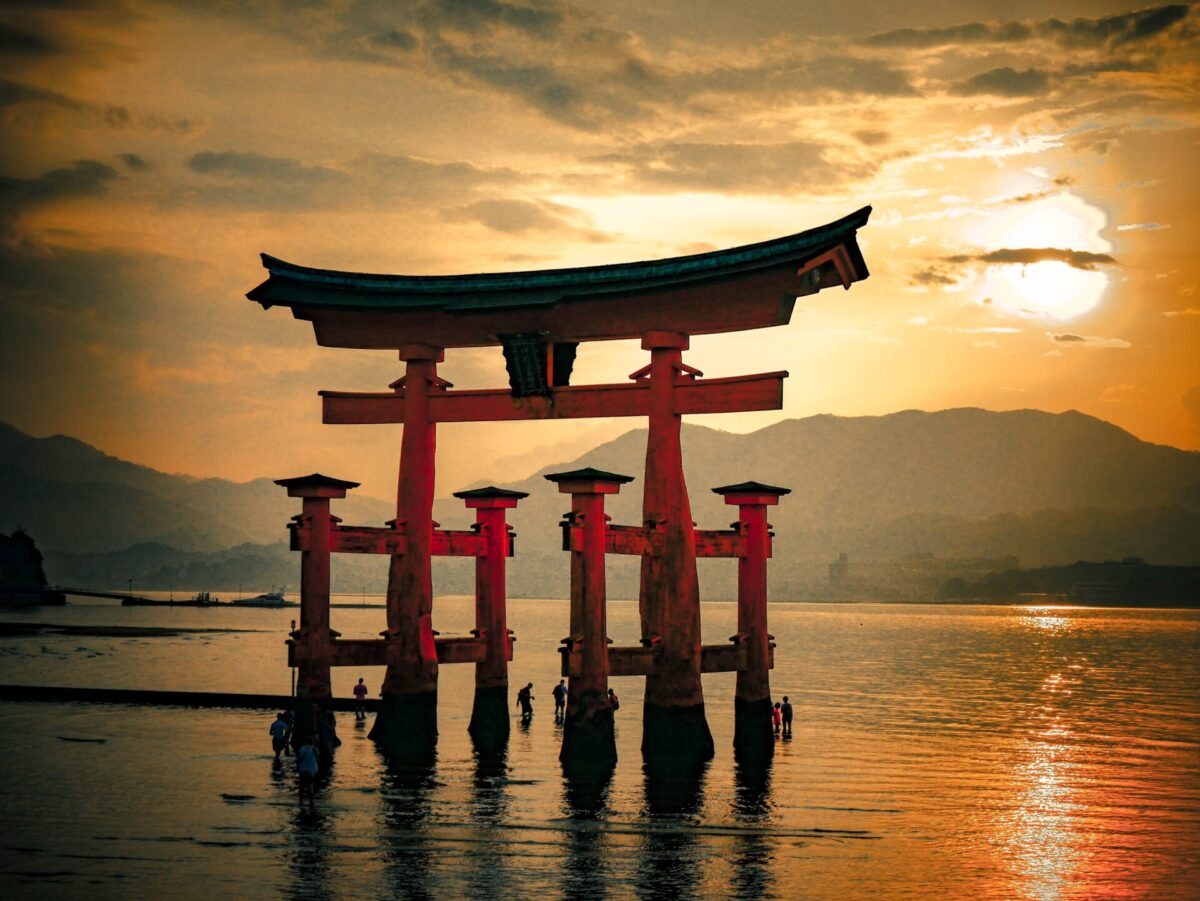
In the history of Japan, a large number of castles were built, many of which were destroyed during the many battles or natural disasters like earthquakes. But there are some beautiful castles in Japan that still exist and can be visited, some of which are also designated UNESCO sites. A total number of 12 original castles , meaning they have a castle tower (or main keep) that was built during the Edo period or earlier, are located around the country.
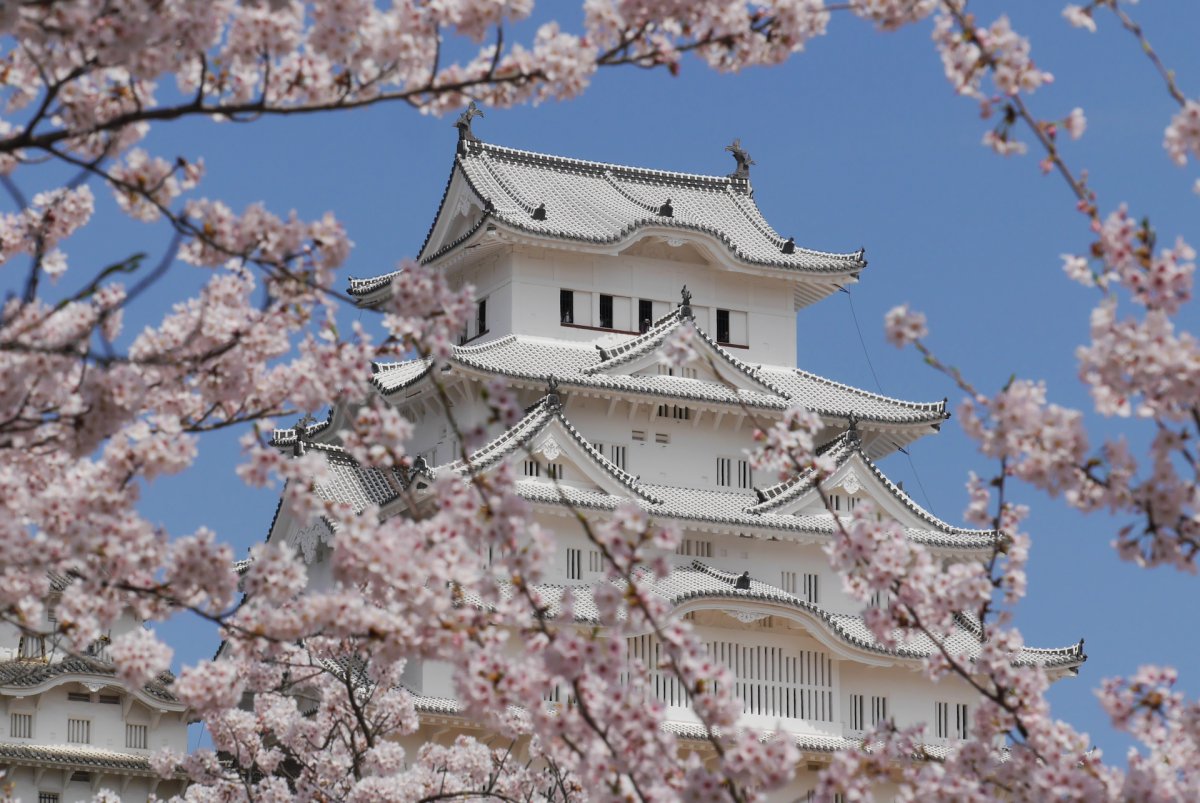
Another type of unique cultural event are the Grand Sumo Tournaments that take place at each odd-numbered month and last for two weeks. Sumo is Japan’s national sport, but not just a sport. In act, sumo is full of shinto rituals and watching a sumo match with a guide will help you to understand this ancient sport even better. Watching a sumo game is definitely an experience you should have at least once in your life!
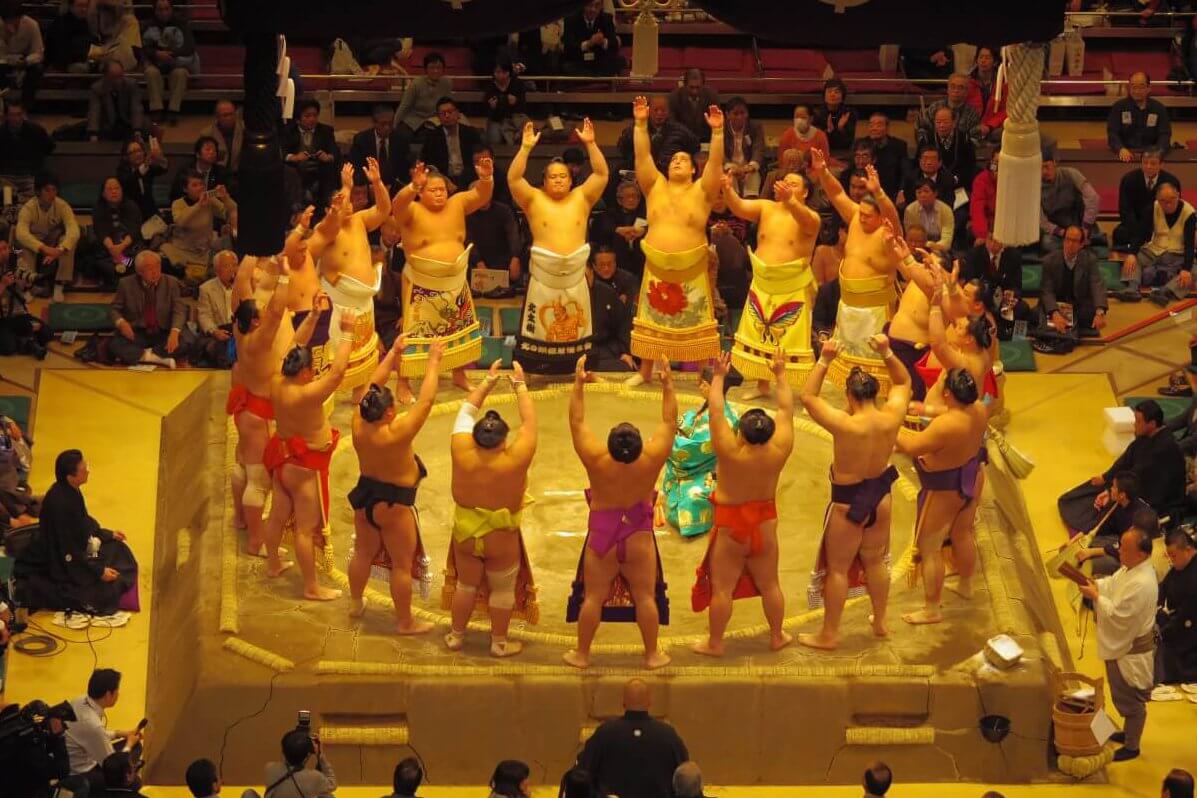
Baseball is Japan’s most popular sport, first introduced in 1872 by an American college professor. Whether you are a baseball fan or not, watching a baseball game will be an exciting experience for anyone ! It is good fun to join the Japanese baseball spectators and cheer on the teams. The games usually start from 2pm or 6pm and last for about 3.5 hrs.
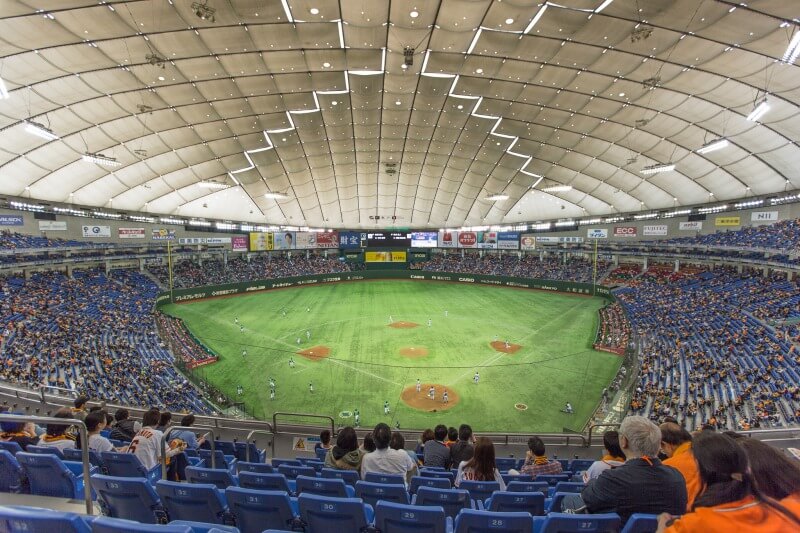
Craft in Japan has a long history and has played an important role in the Japanese culture. From the more famous ones such as knives, pottery, kimono, yukata, and tatami, to lesser-known ones such as kokeshi dolls, fireworks, kendama, origami, daruma dolls , Woodblock Prints , Nambu Ironware, and rounded and folding fans, there is a large list of traditional japanese crafts. Each region has its own local specialties. Some of the craft and art is more valuable in price since they are handmade by professional craftsmen but all make for a great souvenir to take home ! There are many places that offer craft and art experiences like pottery workshops and tea ceremonies.
Purchase your own beautiful Japanese crafts here!
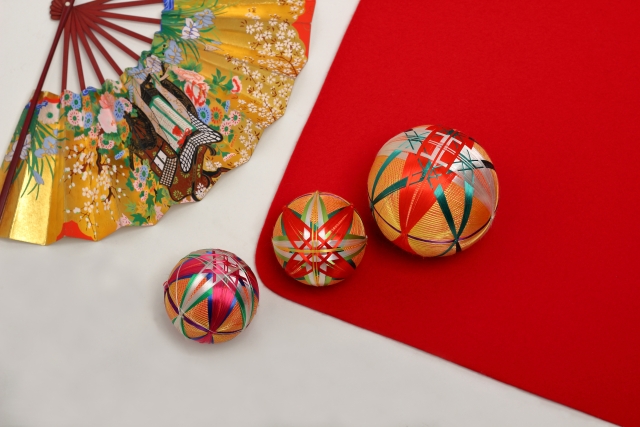
Japan is home to a large number of Western-style hotels, but something that you should not miss out on is staying at the traditional Japanese ryokan. A ryokan is a type of Japanese inn that has been around since the 8th century. It often features tatami-floor rooms, onsen, and other public areas where visitors wear yukata, the traditional more casual kimono. Often an overnight stay comes with a delicious, large, Japanese dinner and breakfast made from seasonal and locally produced products. Staying at a ryokan is a great place to enjoy onsen (privately) and experience some of the traditional elements of Japanese culture.
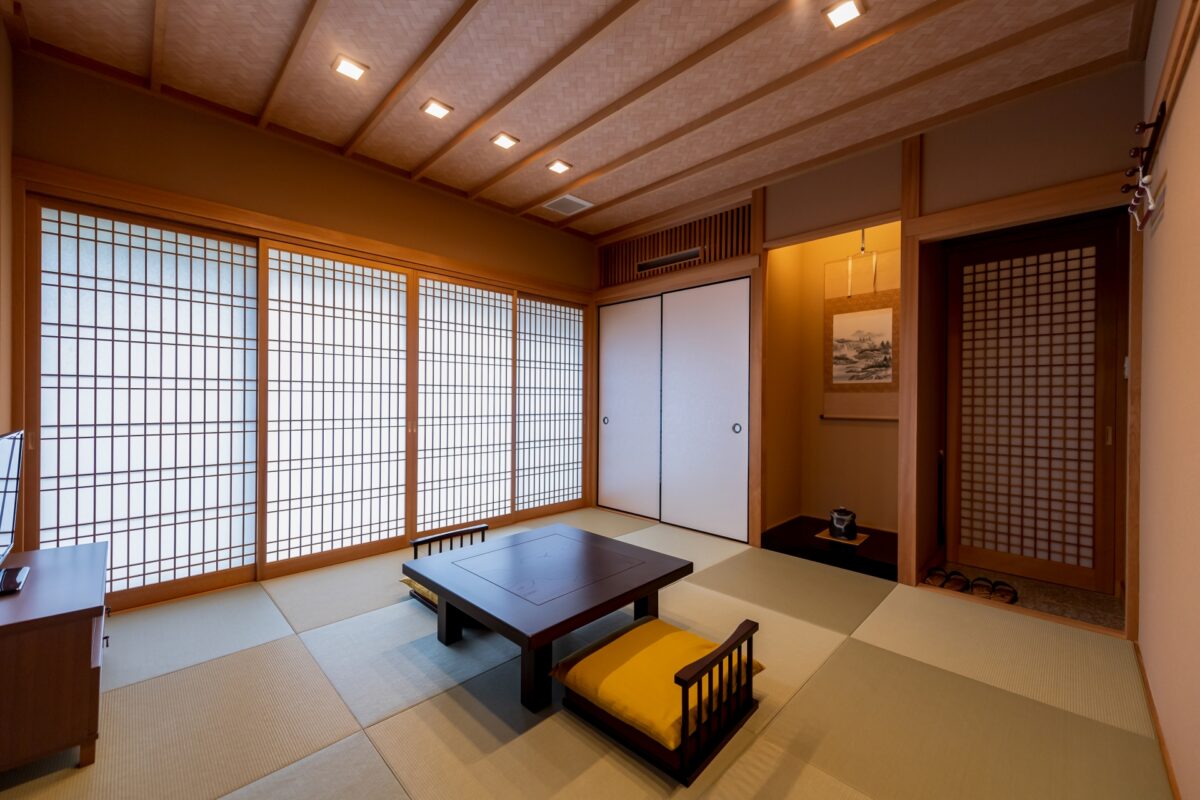
If you are interested in experiencing the simple and traditional lifestyle of Buddhist monks, temple lodging known as shukubo is an excellent option. Shukubo literally means “sleeping with the monks” and besides a great night’s rest and delicious shojin-ryori, the Buddhist vegan cuisine, you can join the monks for morning prayers.
Originating in Osaka, capsule hotels have made their advance in Japan. These hotels, usually found in the larger cities, originally targeted individuals looking for a cheaper alternative for single nights stay. Recently there are also more luxurious alternatives of the pod hotel that are more comfortable, though not as cheap as you might think.

These are just 20 reasons why you should visit Japan, but the list is endless. We haven’t even talked about the beautiful autumn colors, the cute deers, animal cafes, and love hotels amongst other things. Nowhere else on earth will you find a country like Japan, with its unique blend of long standing traditions and modern rituals, century old buildings and peaceful gardens sandwiched between the city’s modern highrises. Incredible fresh food, domestic drinks, sake and local specialties that you can get from any hole in the wall spot. Friendly people that will go out of their way to make you comfortable and require as much as a simple thank you. Reliable and punctual public transportation in a country that is among the safest in the world. The list of reasons for you to come to Japan is simply endless. Conclusion: plan your trip to Japan as soon as possible, you are in for a treat!
Japan Wonder Travel is a travel agency that offers guided tours throughout Japan. From private walking tours to delicious Food and Drink tours, we can help you organize the best tours just for you! If you want to explore Japan and learn more about the history and backstories of each area you are visiting, our knowledgeable and friendly English speaking guides will happily take you to the best spots! In addition, we can provide you with any assistance you may need for your upcoming trip to Japan, so please feel free to contact us if yu have any questions or need some help!
▶ Tokyo Tsukiji Fish Market Food and Drink Tour Explore the most lively and popular fish market in Tokyo and try some of the local’s favorite street foods and sake with one of our friendly and knowledgeable English speaking guides!

▶ Tokyo 1–Day Highlights Private Walking Tour (8 Hours) There’s no better way to explore an area than taking a tour with a knowledgeable local guide. You will have the chance to learn about the history and interesting background stories of Tokyo, as well as discover some hidden gems which can be hard to do without a guide.

▶ Mt. Fuji Day Trip Bus Tour from Tokyo Experience the breathtaking views of Mt. Fuji by visiting the highlights of the area on our guided sightseeing bus tour! Departing from Shinjuku in central Tokyo, you can travel comfortably to all of the best spots in the area by bus.

Kimono Rental is Available at Popular Tourist Attractions in Japan! Discover Japan with a traditional Kimono from Kimono Rental Wargo! Explore cities or join festivals effortlessly starting from just ¥3,300. Our shops are conveniently located in Tokyo, Kyoto, Osaka, Kawagoe, and Kanazawa. Elevate your adventures with the elegance of the kimono and create unforgettable memories in Japan!
These are just 20 reasons why you should visit Japan, but the list is endless. We haven’t even talked about the beautiful autumn colors, the cute deers, animal cafes, and love hotels amongst other things. Nowhere else on earth you will find a country like Japan, the unique blend of long standing traditions and modern rituals, century old buildings and peaceful gardens sandwiched between the city’s present-time highrise. Incredible fresh food, domestic drinks, sake and local specialties that you can get from any hole in the wall place. Friendly people that will go out of their way to make you comfortable and require as much as a simple thank you. Reliable and punctual public transportation in a country that is among the safest in the world. The list of reasons for you to come to Japan is simply endless. Conclusion: plan your trip to Japan as soon as possible, you are in for a treat!
Follow us on Instagram , Facebook and Twitter for more travel inspiration. Or tag us to get featured!
Happy traveling!
Stay informed of the best travel tips to Japan, the most exciting things to do and see, and the top experiences to have with the Japan Wonder Travel Newsletter. Every week we will introduce you to our latest content.

- Popular destinations
- Hidden places in Japan
- Tours and workshop
- Food and drink in Japan
- Itinerary in Japan
- Places to visit in Tokyo
- Food and drink in Tokyo
- Seasonal events
- Tours & workshops
- Tokyo This Week
- Day trip from Tokyo
- Itinerary in Tokyo
- Places to visit in Kyoto
- Food and drink in Kyoto
- Itinerary in Kyoto
- Day trip from Kyoto
- Travel tips
- Accommodation
- Cultural tips
- Transportation
- Tokyo Tours
- Kyoto Tours
- Kimono Rental
- Fukushima Tours
- Mount Fuji Tours
- Tour Package
- Travel Concierge Service
- Media Kit(English/日本語)
What’s It Really Like to Travel Japan?
Adventurous Kate contains affiliate links. If you make a purchase through these links, I will earn a commission at no extra cost to you. Thanks!

How do I even begin to describe what it’s like to travel in Japan?
It is an experience . It surrounds you. Every moment of every day is filled with new discoveries and cultural difference and utter delights. I can’t describe it beyond that, but everyone who has been knows exactly what I’m talking about.
If there were a word to describe Japan as a whole, it would be reverent. This is a nation where every action displays a culture of deference, respect and obedience. It encompasses daily life.
Some examples?
Reverence of food. The food here is prepared and delivered with such deep respect and meticulous care, even in fast food joints. Anything else would be anti-Japanese. I didn’t have a single bad meal in Japan.
Reverence of manners. Japan has a longstanding reputation of politeness. One place where this was most evident was on trains. Whenever a conductor entered a car, he would enter and exit the car with an energetic yet crisp bow before attending to passengers.
Reverence of nature. Nature receives the utmost respect here, and you’ll often find that everything from architecture to food plays into an overall respect of the natural environment of Japan.
Reverence of rules. Japan is a rules-based culture. There are lots of written and unwritten rules – the Japanese wouldn’t dream of throwing recyclables in the trash, or acting rude to a stranger, or dressing like a slob. The list of taboos here is extensive.
Yes, most than anything else, it’s reverence that defines Japan. But beyond that, here are a few of the idiosyncrasies I noticed in the Land of the Rising Sun:

English is used for style, not function.
See English lettering somewhere? Chances are it’s not used for the purpose of communicating with non-Japanese speakers. Again and again, I noticed that English was used for little more than decoration.
On my first night in Tokyo, I was looking for a restaurant in a mall and I was delighted to find a pamphlet emblazoned with Mall Directory in ornate script. I opened it up…and it was all in Japanese. The English was just used for stylistic purposes.
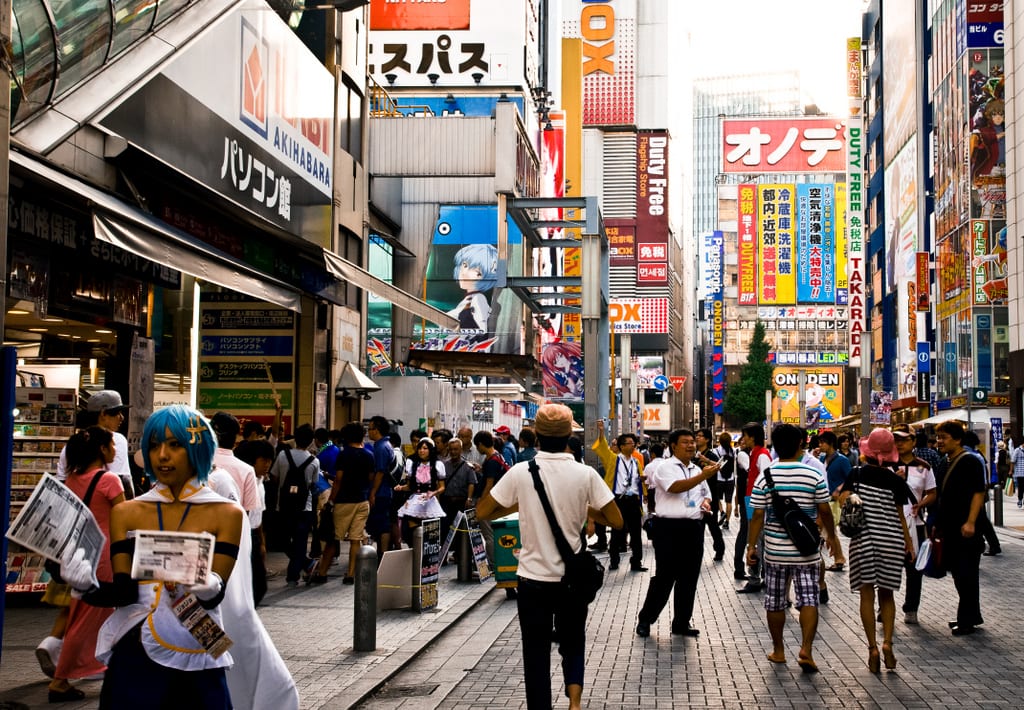
Sex is overt — except when it’s not.
If there’s any neighborhood you must visit in Tokyo, make it Akihabara. I planned to check out the electronics stores, seeing the newest innovations years before they hit the western market.
Instead, I found myself in the center for otaku (super-geek) culture. Electronics stores held court next to porn shops, crammed with sex toys and hentai (anime porn) comic books. Arcades were filled with nipple-baring figurines in sexual poses as prizes. Throughout the neighborhood, girls dressed as sexy maids advertised their cafes.
Now — the strange thing is that actual sex is kept under lock and key. While seeing men reading porn on the subway is a common occurrence, you wouldn’t see a couple making out and borderline dry humping in Tokyo. You barely saw people even holding hands. As I mentioned in my geisha post , there are clear boundaries between actual, consensual, conventional, relationship-based sex and just about everything else.

It’s not as expensive as you think.
Japan has long held a reputation as being one of the most expensive countries in the world to visit, with Tokyo holding the crown as one of the world’s most expensive cities.
After my visit, I think that reputation is a bit undeserved . Two things in Japan are quite expensive: lodging and long-distance transportation. But beyond that, prices aren’t that bad. I’d compare them to prices in London, Paris or New York.
Food, in particular, can be done on the cheap. Almost all of our meals cost less than 1000 yen ($10). My splurge meals actually weren’t that painful – I had a seafood feast in Kyoto for 3500 yen each ($35), a Kobe beef lunch in Kobe for 2950 yen each ($29.50), and a selection of sushi at a nice sushi bar in the pricey Tokyo neighborhood of Ginza – plus sake – for about 2100 yen ($21).
Subway rides in Tokyo cost 100-200 yen each ($1-2). Vending machine beverages cost 80-200 yen ($0.80-2). I even bought a Kindle Paperwhite from a discount camera shop in Shibuya for 8200 yen ($82) when it currently retails on Amazon for $139 !
I found Japan to be much cheaper overall than Australia or Switzerland, countries where everything is expensive.

Food is theater.
One night in Kyoto, my new friends Michael from the Deep Kyoto blog and his girlfriend Miu took me out for a seafood feast at a fun, wild and cheap seafood restaurant called Asahi Suisan . Halfway through our meal, a badass fishmonger (and the most muscular Japanese guy I’ve ever seen) brought out an enormous bluefin tuna and butchered it with gusto to cheers throughout the restaurant and squeals from a table of nearby girls.
And while he did it, video played in the background of the same fishmonger on a reality show in Japan, competing for his region in the field of tuna butchering!
It was a fabulous night of entertainment and it was another side of seeing how reverent the Japanese are toward the preparation of food.
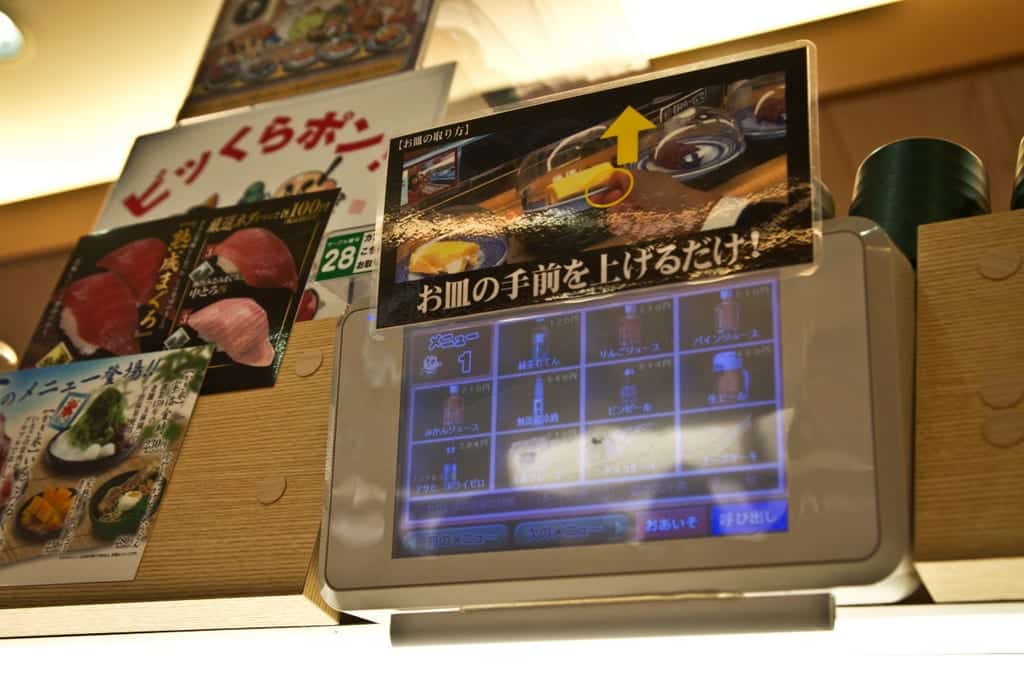
Everything is marvelously efficient.
One of the greatest performances was when my nozomi train to Kyoto pulled in. A fleet of women dressed in salmon uniforms, down to matching sneakers (!), entered the car and performed identical movements, taking out the trash bags and turning the seats around to face the other way, preparing them for the next influx of passengers.
In Japan, I would constantly think to myself, Oh. That makes sense . In the West, when presented with a more efficient solution, people would give reasons why not to implement it — that doing so would cost too much time or money that could be spent elsewhere. In Japan, they just do it, no questions asked.

The best-dressed women in the world live in Tokyo.
Sure, Italian and Parisian women dress beautifully, and London and New York women have a lot of style, but it’s nothing like the women in Tokyo. From perfectly tailored short dresses to their understated but highly functional designer flats, I gawked at the fashion in Tokyo.
Where to Stay in Tokyo: Best Areas and Accommodation

Kimonos are still very much worn.
I had the idea that Japanese women only wore kimonos for special occasions or times when traditional wear was best. Well, that’s not the case — I saw plenty of kimono-clad women (and men wearing the more plain yakuta ) throughout Tokyo and Kyoto!
In Kyoto, some temples allow women in for free if they’re wearing a kimono. That will actually save you a fair amount of cash, as most Kyoto temples charge around 400-600 yen ($4-6) entry. But in other cases, they’re simply what is worn for formalwear. I would love to get a formal kimono of my own someday.

Japan is HOT!
I thought August would be the perfect time to travel through Japan, with nice summer sunshine – no way, Jose! It gets unbearably hot with very high humidity. People in Kyoto actually walked around with towels around their necks to mop up their ever-dripping brows.
It’s too bad, because the heat put a damper on a lot of our sightseeing in Kyoto in particular, when I was visiting lots of outdoor temples.
While I was in Tokyo, the mercury actually hit 42 C (106 F), breaking records. People told me again and again that I was traveling at the worst time possible. My advice to you? Visit Japan in the spring or fall if you can.

Japanese toilets really are that amazing.
Believe it or not, those fancy Japanese toilets with all the push buttons aren’t only found in luxury establishments. You’ll even find fancy Japanese toilets at cheap ramen joints and Starbucks. Once you figure out which button performs the “rear cleansing”, you’ll never go back.
Incidentally, Japanese women take longer in the bathroom than anyone I’ve ever met.
These facts may or may not be related.

Cute rules.
You know all about Hello Kitty — but there’s so much cutesiness throughout Japan! Mascots for everything from companies to products often involve little furry cartoon characters holding hands and playing together. Cute little tunes, the kind you’d expect on a children’s show, play throughout Japan as well.
One might start thinking about the psychological implications of that – the Japanese work so hard that they enjoy their childhood wherever they can — but I just found it fun to bop along with the little animals.
Everyone is incredibly helpful.
Do you look lost? You won’t be for long. Japanese people are exceedingly helpful and even if they don’t speak English, they will drop everything to help you find your way.
I first noticed the exceptional level of helpfulness when I entered an electronics store. I asked about Kindles and the man replied that they didn’t have any, but another store might, and he’d be happy to give them a call and check.
This wasn’t another branch of their stores – this was a competitor. And he offered to call them for me. In the US, the most I would get from a salesperson would be, “You could try Best Buy.”

Japanese people love to photobomb.
Do they EVER love to photobomb!
But what is the single most shocking aspect of all?

You turn into a Japanese tourist.
Ah, Japanese tourists. The older ladies are decked out in visors and Keds, the teenagers with cameras worth thousands of dollars, the groups being led around by an umbrella. I squeezed through huge Japanese crowds on my way to class in Florence each morning, as they took up entire piazzas on their own.
And the Japanese tourists take pictures of absolutely everything .
Well. You know what I took pictures of in Japan? Toilets. Trash cans. Vending machines.
Yes, I became a Japanese tourist myself – because everything here really is so different and I couldn’t stop marveling at it all.
I get it now, Japanese tourists. I’m sorry I’ve made fun of you.
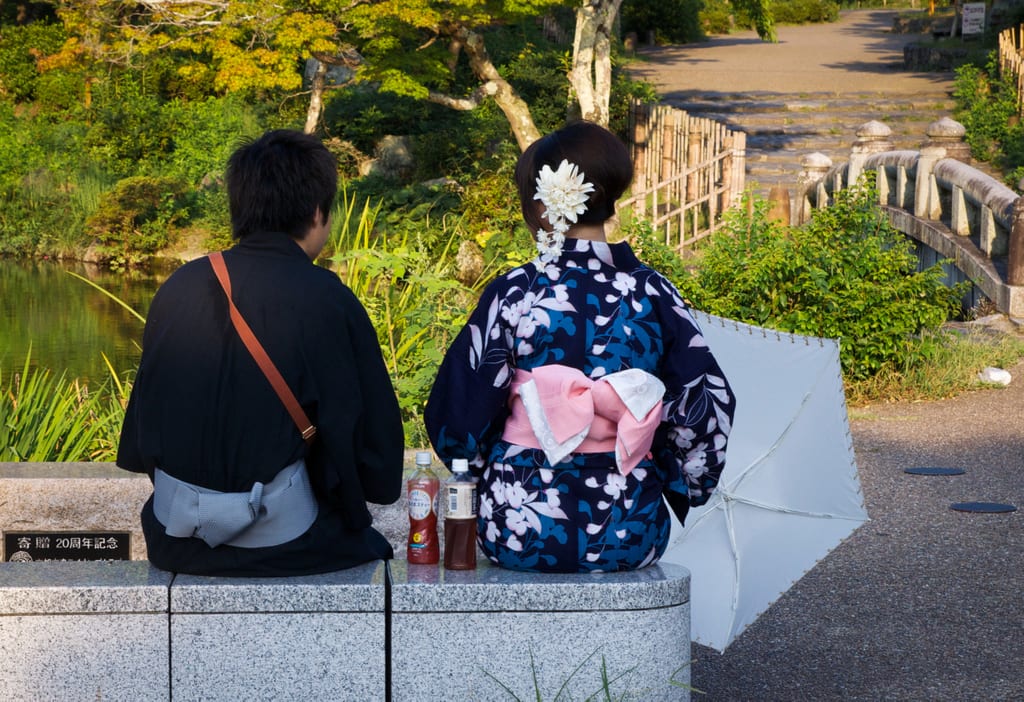
Japan is all-encompassing.
Even though Japan is on the pricier side, I consider it an extremely high value destination. Like Paris and New York, just walking down the street is a fascinating experience in Japan. Every moment, you will be stunned and amazed at the world that surrounds you.
Japan is delicious. Japan is kind. Japan is ridiculously clean. Japan is freaky and cute.
More than anywhere else I’ve been, I feel like Japan is the kind of destination that every traveler must experience at least once in his or her lifetime. I loved my two weeks there and I can’t wait to return.
Just one thing – don’t forget to buy travel insurance before you travel to Japan! I never travel without it and always use World Nomads.
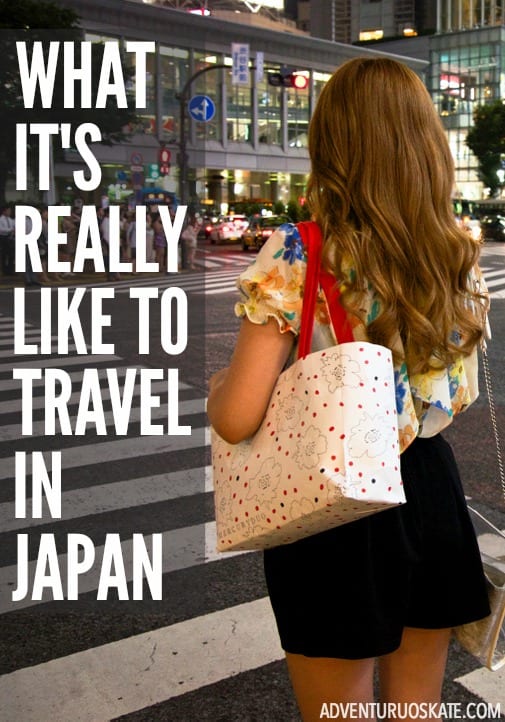
What’s it Like to Travel in Japan?
I thought I had finished writing about Japan, but it turns out I was wrong.
My posts about Japan have quickly become my most-read of all time and I’m now starting to receive a hell of a lot of questions about how to make the most of a trip to this wonderful country. I’m diving back into my time in the Land of the Rising Sun , then, and planning on sharing a ton of resources over the next couple of weeks.
Up first: what it’s like to travel in Japan! These are my favourite type of blog posts to write — you can browse my growing collection of them on my What’s It Like to Travel In? page — as they allow me to blend a detailed travel guide with random observations, fun stories, and first impressions.
Let’s get stuck in!
It’s Going to Be Overwhelming for the First Few Days
Does that photo make you feel like having a panic attack and hiding away from the world? Me too.
Most people kick off their Japan adventure in Tokyo or Osaka, both of which are large cities full of bright lights, flashing signs, loud noises, unfamiliar smells, crowds of people, and plenty of chaos. When you throw a hefty case of jetlag into the mix, visitors often end up feeling as though they’re walking around in a bubble, unable to process what on earth is going on.
Arriving in Japan is culture shock to the extreme. I’ve been to 80-odd countries and I’ve never experienced it to the extent that I did here.
But the good news is that the sensory overload doesn’t last for long.
While you’ll never fully understand what’s happening as you travel around the country, the differences become less overwhelming and you quickly learn to embrace Japan’s unique mix of order and chaos.
But it Really Wasn’t That Weird?
Now, I don’t know about you, but when I first started planning my trip to Japan, I prepared myself to see things . Strange things. Unexplainable things. Extraordinary things.
And… I didn’t.
I arrived in Tokyo, fully expecting to hit the ground and start taking photos of a thousand peculiar sights. I planned on barely sleeping during my trip, because I thought there’d be so much unfamiliarity to absorb.
Nope.
I landed in Tokyo and it felt like a big city. A regular city. A familiar city.
Which isn’t to say it wasn’t special — I adored Tokyo — but just that it felt like a normal city filled with normal people. I didn’t run into people cosplaying on the streets, I wasn’t served by robots in restaurants, I wasn’t surrounded by outlandish fashion choices, I didn’t spot vending machines filled with used underwear on every street.
My preconceived notions of Japan were based on bad stereotypes that have been perpetuated by Western society and I felt like a dumbass for buying into them.
Japan was no more “weird” than any other country I’ve been to. It has its quirks, sure, but what country doesn’t?
The Food is Going to Blow Your Mind
I’m still talking about the incredible meals I devoured in Japan!
Whether it was the pork rib ramen in Osaka, the crispy takoyaki in Tokyo, or the fresh as hell sushi in Kyoto, I couldn’t get enough of the food in Japan. There was plenty of interesting foods to try for the first time, like pufferfish jerky and pickled quail eggs, and experiencing my first kaiseki (a traditional multi-course Japanese meal) was one of the highlights of my entire trip.
After visiting Japan, I can easily place Japanese food in my top 5 cuisines in the world, along with Mexican, Vietnamese, Greek, and Spanish. I even wrote a blog post about my favourite meals in Japan because I was so enamoured with the food.
Train is the Best Way to See the Country
If you’re planning a trip to Japan, the first thing you should be doing is buying a Japan Rail Pass .
While the rail passes seem like a fairly large expense to pay up-front (I paid $420 for my two-week pass), they’ll more than likely save you money on your trip.
I’ll confess I was skeptical the passes would be as much of a necessity as people said, so picked one up then made a note of the cost of every train we took in the country. It turned out that my 14-day JR pass saved me a whopping ¥19,000/$175! That’s a huge amount of money, so I’m firmly of the belief that this is an investment you’ll want to make.
Travelling by train across Japan is such an iconic experience, too. The trains are incredibly fast and punctual, the rail network is extensive, and it’s altogether a comfortable and convenient way to get around. It’s a huge expense if you’re going to be travelling in Japan on a budget, but I think it’s a cultural experience that’s worth splurging for.
Confession: I Was Baffled by Tokyo’s Metro
On our first day in Japan, my partner tweeted: “If you think you’re a competent traveller and would like to be very humbled, can I suggest trying to figure out the Tokyo metro?”
I’ve muddled my way around a hell of a lot of subway systems around the world, but Tokyo’s was the first to leave me well and truly flummoxed.
To start with, the stations are enormous. I was staying beside Shibuya station and it would regularly take me a solid 30-60 minutes to figure out where on earth my platform was even located. It was just as complicated trying to find the right exit!
The stations are hyper-busy, too. The top 20 busiest train stations in the world are all found in Japan. Shinjuku station — the busiest — sees 3.6 million people transiting through it every single day . I can’t even comprehend that many people passing through a single building, let alone every day!
Oh, and here’s a map of the Tokyo metro and train lines:
For some reason, buying the correct ticket seemed to be impossible for us to do correctly! The Tokyo subway system is operated by three separate companies, and you’ll need different tickets for the lines that each company owns.
If our route required us to change stations, we simply could not buy the right ticket. I don’t think we succeeded even once! Even when we were convinced we finally understood where we were going, our ticket would invariably fail in the machines when we went to change lines and we’d need to find help from a member of staff. It’s probably no great surprise that we ended up walking around Tokyo for most of our time there and only used the subway three times.
What we should have done, however, was buy a SUICA card, rather than bothering with single tickets. It’s a rechargeable travel card that’s valid on all of the metro and train lines across Japan, and it would have saved us a hell of a lot of time, confusion, and hassle.
It’s Worth Getting Out of the Main Cities While You’re There
A lot of people devise an itinerary that’ll take them to the three big hitters in Japan tourism: Tokyo, Kyoto, and Osaka. And while those cities are undoubtedly most popular for a reason, I found myself really enjoying the lesser-known spots just as much.
Wandering around the town of Yamanouchi in freshly-fallen snow was a wonderful experience, Takayama was the perfect place to learn about traditional Japanese architecture, and beautiful Miyajima Island was the most relaxing stop on my trip.
Even if you don’t have a huge amount of time in Japan, I’d still recommend jumping on a day trip or two to explore outside of the huge cities. Hit up Nara as a day trip from Kyoto, head to Hakone to see Mount Fuji as a day trip from Tokyo, or set off for Myajima Island for some respite on a day trip from Hiroshima.
During my next visit to Japan, I’d like to get further away from the beaten track and explore a bunch of places I haven’t even heard of right now. Which, yes, is essentially me admitting to being too lazy to research lesser-known places in Japan to include here.
There’s a Lot of Animal Attractions… Most of Which Exhibit Dubious Ethics
Japan is the land of animals being treated badly, unfortunately.
As you travel across the country, you’ll be struck by how many animal cafes you can visit. There’s hedgehog cafes, otter cafes, owl cafes, alpaca cafes, ferret cafes, penguin bars, and the vast majority of them are not doing great things for the animals’ health.
In Japan, owl cafes offer the chance to sit beside a tethered owl that’s been forcibly domesticated and will never be allowed the opportunity to fly. In 2016, a cat cafe in Tokyo was shut down after it was discovered owners were keeping 60 cats within a 30 square metre rom. The penguin bar in Tokyo keeps four penguins captive in a tiny enclosure at the back of a smoky bar.
I went to a hedgehog cafe in Tokyo and came away feeling conflicted by the ethics of me having done so, and decided I wouldn’t repeat the experience.
Even the snow monkeys ended up being a disappointment for me. The animals were herded towards tourists by staff, fed in order to keep them from leaving the hot springs, encouraged to fight with each other, and generally seemed to be distressed that they couldn’t get away.
And this was just what I personally experienced. Japan has also experienced international condemnation for a whole host of animal welfare violations, from whaling to the Taiji dolphin hunt.
If in doubt, steer clear of any animal-based attractions in Japan.
Japan’s Vending Machines are the Bomb
I loved the vending machines in Japan! They’re everywhere, sometimes dozens of them in a row, and they’re standing on practically every street. There’s over 5 million of them — one for every 23 people in the country — and they’ll be one of the first things you notice when you first arrive.
The vast majority of them sell drinks — hundreds of varieties, from the delicious-but-gross-sounding electrolyte-filled Pocari Sweat to hot coffee in a can — and they’re a fantastic way to stay refreshed while you’re exploring
And, of course, there’s a whole bunch of unusual stuff you can buy from them, too, like actual puppies, live lobsters and beetles, a Coke that freezes into a slushy when you open it, umbrellas, surgical masks, mystery boxes, pizzas, ties, wigs for dogs, origami, and yes, used women’s underwear. I even ordered several meals from a vending machine in Japan!
And You’ll Probably Get Weirdly Excited Over the Toilets
Everybody falls in love with Japanese toilets! I feel like such a predictable beast for even including this in my post, but let’s face it: Japan’s toilets are in a whole other league.
So what’s so life-changing about them? They have so many features! As someone who visited the country during winter, I loved that there was a seat warmer. On top of that, there’s a built-in bidet that self-cleans between each use and a blow-dryer for afterwards. You can adjust where the water sprays, the temperature of it, and the amount of pressure it applies. You can even play music from the toilet if you don’t want anybody to hear what you’re doing in there, and some feature a deodoriser, too.
The buttons on the toilet are fairly self-explanatory, but every one I used had a slightly different design and set of features, which kept things fun. Mystery toilet!
As I begin contemplating buying a house within the next couple of years, let me tell you that I’m already thinking about how I’m going to get myself a Japanese toilet for it!
Why Are There So Many Ugly Cars?
Why are the cars in Japan so squished and blocky?!
One of the first things I noticed after arriving in the country was how many odd-looking cars there were. There were so many that looked like this photo: like they’d been plopped into a car crusher for a second, then removed and placed on the streets.
Yeah, It’s Fairly Expensive, But Also Not That Expensive
I put off travelling to Japan for years due to one simple reason: I didn’t think I could afford it.
To my great surprise, it ended up being much more affordable than I expected! In total, I paid just under $100 a day while travelling as part of a couple on a mid-range budget. That included my rail pass, accommodation in hotels and guesthouses, entrance tickets to temples and attractions, food and drink, and travel insurance. I’ve definitely visited more expensive countries in the world.
For more information on my expenses, check out my detailed guide on how much it costs to travel in Japan .
There Are So Many Different Types of Accommodation
One aspect I loved about Japan travel is how many different types of accommodation there are to stay in. I tried to check out as many of them as possible.
I stayed in a capsule hotel, spent a night in a ryokan, slept on a tatami mat floor, hung out in family-run guesthouses, and checked out some pretty hipster hostels.
My biggest surprise was learning that sleeping on a tatami mat was so comfortable! I often opted for the tatami mat rooms over Western-style bedrooms, as they’re usually a couple of dollars cheaper, and they worked out to be just as comfortable. I actually found it super cool to be staying in a minimalist room without any furniture! My only complaint was the smell of the tatami mats — most people love it, but I just couldn’t get used to it.
Staying in a ryokan was another exciting accommodation experience. These Japanese inns are generally known for being super-expensive, giving you the opportunity to experience a traditional local lifestyle. You’ll stay in a tatami mat room, bathe in a communal onsen, and tuck into a kaiseki with the other guests during dinner and breakfast. It was one of the coolest experiences I had in the country.
My final accommodation standout was a capsule hotel. I stayed here more for the novelty than the comfort levels, but it ended up being surprisingly cosy. My room had around 20 beds in small pods, all packed in together, but you still had a lot of privacy. I had my own little light in my capsule, my own power sockets, temperature control, and a curtain to close to keep people from peering in. These are a great way to save money in Japan, so I’d recommend trying them out if you’re going to be visiting on a budget.
I Felt Super-Safe in Japan
Japan has a reputation for being one of the safest countries in the world, and I certainly never felt in any danger while I was there. I felt perfectly safe exploring the country alone, walking around at night on my own, sleeping on the train with my bags at my feet, and carrying my expensive camera in the open. I felt safer in Japan than anywhere else I’ve been in the world.
Still, that doesn’t mean that you should grow complacent and let your guard down. As with any country in the world, you should still keep watch over your belongings, be wary of complete strangers that are taking a sudden interest in you, and be careful with your alcohol consumption. All that good stuff.
Oh, and you should probably refresh your knowledge on what to do if there’s an earthquake before you get there. I experienced my first earthquake in Taiwan and because I grew up in the U.K., had no idea what to do. I remember feeling my bunkbed rattle beneath me as I frantically googled what to do in an earthquake. I should have been better prepared.
My fellow female travellers out there may want to utilise the women-only train carriages during peak travel times to ensure you’re away from any wandering hands — this is likely the only safety issue you’ll encounter in the country.
Keep your wits about you, take common sense safety measures, and you’ll have a wonderful time.
Winter is Going to Be Cold
Japan gets freezing in the winter and scorching in the summer.
I visited in December and was so cold. So much colder than I thought I would be. Although I confess to having little tolerance to the cold, so you’ll probably think I was being pathetic. Temperatures hovered around the freezing mark, and it snowed in Hiroshima and Yamanouchi. I regularly wore five layers of clothing and still spent most of my time shivering.
Visiting during summer takes you to the other end of the temperature spectrum. It gets super-hot in the summer months, with temperatures hitting as much 40 degrees (100°F) some years.
This is a destination that’s best visited in the spring or autumn.
But the Bonus with that is the Onsens!
One of the huge bonuses to visiting in the winter is getting to dive into Japan’s onsen culture. Onsen is the Japanese word for hot spring, and you’ll find them scattered all over this volcanic country. Some are outdoors, some are inside, some are found in guesthouses, ryokans, and hotels, some are in public bathhouses, some are public, some are private, some are same sex, some are mixed gender. The only rule is that you have to be naked.
I jumped in an onsen almost every night of my trip and it was so relaxing and comforting to do so. I highly recommend looking for accommodation with on-site onsens, as it allows you a little more privacy. At my hostel in Hakone and my ryokan in Yamanouchi, I got to jump in the private couples onsen with my boyfriend, which was so much fun!
In theory, you’re not supposed to use the onsens in Japan if you have tattoos, although the rules have relaxed in recent years. If you have one that can’t be covered up with a bandaid, I’d recommend checking out Tattoo Friendly , which lists hundreds of Japanese onsens you can visit if you’re inked.
And that was Japan!
This post was so much fun to write! If I’m being honest, I think I could have sat down and written another 3,000 words about my time in Japan — there’s just so much to learn from this country.
I can’t wait to return.
Have you been to Japan? If not, do you dream of visiting one day?
Related Articles on Japan 🏯 How to Spend Two Weeks in Japan: An Itinerary for First-Time Visitors 💴 The Cost of Travel in Japan: My Budget Breakdown 🍣 15 Weird and Wonderful Things to Eat in Japan 🎌 23 Incredible Things to Do in Osaka, Japan 😎 Hipster Harajuku: The Coolest Neighbourhood in Tokyo 🦔 Should You Go to a Hedgehog Cafe? My Experience in Japan 🐒 Why Seeing the Snow Monkeys in Japan Sucked
Lauren Juliff
Lauren Juliff is a published author and travel expert who founded Never Ending Footsteps in 2011. She has spent over 12 years travelling the world, sharing in-depth advice from more than 100 countries across six continents. Lauren's travel advice has been featured in publications like the BBC, Wall Street Journal, USA Today, and Cosmopolitan, and her work is read by 200,000 readers each month. Her travel memoir can be found in bookstores across the planet.
Related Posts
The Cost of Travel in South Korea: My 2024 Budget Breakdown
What’s it Like to Travel in Liechtenstein?
In-Depth Namibia Travel Guide: What’s it Like to Travel in Namibia?
How to Spend Three Perfect Days in Delhi: An In-Depth Itinerary
Pushkar Travel Guide: 11 Things to Do in Pushkar
The Ultimate Guide to Visiting the Taj Mahal
25 comments.
Japan sounds fascinating on so many levels. I think I would feel overwhelmed at first, but reading your post has made me think that going here is still achievable for us. I would love to experience a capsule hotel and their crazy vending machines as well as the cultural side of the country
This is a very useful post, Lauren! Elliot and I are most likely going to go to Japan next year (we’re thinking autumn), and I’m already overwhelmed thinking about planning it. So hearing helpful tips about trains (and that SUICA card!) and tattoo-friendly onsens is great!
I went to Japan last year for the first time and I feel like we barely scratched the surface! My favourite dish was pork ramen, it was the first meal I had in Kyoto and it was absolutely delicious. I can’t wait to go back!
Good point about being prepared for earthquakes. I’ve never experienced one, but if I continue traveling the way I do now, then maybe it’s just a matter of time. It makes me kind of nervous. You wrote it was your first earthquake, have you experienced many? And in that case, where? In Asia?
I never been drawn to Japan but as usual after reading your blog posts about a destination I feel an urge to go there NOW. You’re such a good writer!
Cool post Lauren. Did you take any of the high-speed trains while you were there? One of the best parts of my trip to Japan was experiencing the fast bullet trains. They go 320 km/h!
I’ve been staring at that metro map for the last 5 minutes trying to figure it out! :D Thank you for sharing this. I’m planning on heading to Japan soon, hopefully in a few months, and this definitely helps get me prepared for it, at least mentally :)
It’s true that Japan is not as expensive as everyone seems to think. Of course it’s a country with a high standard of living, but there are many ways for the budget traveler to get around that. For instance, most supermarkets have a cook preparing fresh food to sell. It’s usually quite good and way cheaper than restaurants. Plus, if you come 1 hour or so before they close, they’ll offer big discounts on the last meals available!
When is the best time to travel to Japan? You would say April/May or September/October? Which is the perfect month in your opinion?
This post really reminds me of the one have years I spent living in Japan. Japan is such a unique and special country in so many ways but it was difficult to live there.
I used to always hate Shibuya station. I don’t was trying avoid getting off there are changing there because I would inevitably get lost. One thing that I did live about Japan now is that sometimes you could find Beer vending machines I found that so cool.
Oh and then the small cars are called K cars. They have cheaper insurance. I think people like them because of the limited parking space, you even have to pay extra to park your car outside your apartment.
I really love Japan! I always make sure to eat my fave Japanese Food when I’m there and yes, the Metro gave me a headache too!
The map of local trains actually scared me haha. Surely I’d get lost in this mess. Off great post as always ;)
This is not appropriate for school children in the beginning It said a very naughty word in the very beginning I’m Offended. and It also said Dumba**
Why on earth would you think my site was written for kids?
Wow! I’m a lazy person Lauren, but you make travel seem so awesome! I love your writing- your words are clear and your voice is really articulate. You’re an image for women all around the world- follow your dreams!
The key to the Tokyo subway system is to focus on the Yamanote Line, which is the main loop around central Tokyo. From there, you can connect to other lines to take you where you want to go.
We love Tokyo and my daughter and I have even done a 72 hours in Tokyo trip! She still talks about Tokyo and a recent trip to Hong Kong was a good comparison for her, but she still likes Tokyo better.
Piss Alley was a blast – mostly Yakitori stands are what is mostly there now – but there is a good little Ramen joint, and another we really liked is gone now.
There are also a ton (no kidding!) of great sushi places – web search for cheap sushi in Tokyo for lots of options.
Another great place we loved to eat at was Pepper Lunch – they serve the food to you on a flat-iron cooker that comes straight out of the oven – and you cook your food and eat it!
Tokyo is not intimidating – it’s a great place to visit and signs are in English (mostly) and the city is pretty easy to navigate.
Thanks so much for sharing, Brent!
The picture telling people to not poke the face of Sarubobo is so typically Japan, I love it!! I recently moved to Tokyo to take a break from backpacking and I have to pinch myself every day that I get to live in this hectic and beautiful city. You’ve captured Tokyo and Japan’s quirks really well!
Good article. Visited Japan last year for ten days and absolutely loved it. Like many people, I also postponed visiting due to fears about very high cost, but once there I realize it is not that bad- how much you spend is really dependant on your tastes and how much luxury you require. It is very possible to do Japan on a budget, you just have to know ways to save money. Fore example, many corner stores sell packaged, relatively inexpensive meals that tasty and healthy for only a fraction of the price of what you would pay in a restaurant.
Hi, I enjoyed reading your article. The pics are beautiful, especially the one with the train on the bridge. I have to mention a few things that stuck with me. First…OMG! I got vertigo just by looking at the metro map. Used women’s underwear!? Really??? I laughed when I read your description of the cars “squished and blocky”. Yup! I will go to Japan just to use the toilets. LOL! Great post. Can’t wait to go there.
Hope you have a wonderful time there! :-)
I am going to Japan at the end of december, 1. I really tought it wasnt going to be that cold, but you now scare me a little :P. I live in Medellin now (70F all year) but I use to live in upstate NY, how come I can get so scare about cold? ehehe 2. I really wanted to see the snow money park. In the pictures, the mokeys look so Zen :(. But after reading your post, I am for sure not going. I love animals, but I dont want to see them being misstreated or in distress
Oh, don’t be scared of the cold in Japan! I’m super sensitive to it after spending seven-odd years travelling in mostly tropical places.
Really appreciated this post! I can’t wait to get to Japan :)
One of the best articles I’ve read on Japan that shows me exactly what to expect as a traveler.
I highly recommend using google maps while riding public transportation in Japan. With Tokyo’s subway systems, it offers detailed instruction for transferring plus giving you the exact exit numbers to use to reach your destination. One warning, Japanese people walk about twice faster than me, the estimated transfer time is usually not enough for me. However, the next one is usually minutes away. I have used it successfully in other parts of Japan with public transportation systems that will link all options in Osaka, Nara, Fukuoka and Kanazawa. I am not 100% sure about very rural area which I usually get to by car.
Leave a reply Cancel reply
Your email address will not be published. Required fields are marked *
- Privacy Policy
- Work with us

- Who are we?
- Personal Blog
- New South Wales
- Northern Territory
- Western Australia
- Philippines
- The Netherlands
- Accommodation
- Budget Travel
- Couples Travel
- Ethical Travel
- Solo Travel
- Travel Books
- Travel Gift Guides
- Travel Gadgets and Packing Tips
30 Reasons to visit Japan – Why you should visit Japan once in your life

Are you still not sure why you should visit Japan at least once in your life? In this post you can find 30 reasons to visit Japan! It’s one of our favourite destinations in Asia. Probably because it has the perfect mix of culture, history and modern comfort. And lets not forget the amazing food they have! Japan is a unique country, and even though you might have an image of how it will be, this beautiful country will definitely still surprise you!
Below you can read 30 reasons why you should visit Japan. If you’ve been persuaded already, be sure to check our other articles of Japan and keep your eyes peeled for more on this blog!

30 Reasons to visit Japan at least once in your life
1. japan has some of the most beautiful places.

Japan offers a lot of beautiful places. There are a lot of popular and unique, of the beaten track destinations that you should include in your itinerary. This means there is so much to explore and there really is something for anybody! From nature, such as beautiful blue ponds, waterfalls and bamboo forests to culture, with amazing temples and shrines.
Read more of our Japan blogs! 25 Most Beautiful Places in Japan to include in your itinerary A Day Trip to Mount Fuji from Tokyo 8 Fun things to do in Osaka
2. japan is a very safe country.

Japan is one of the safest countries to travel in the world. According to Worldatlas.com, Japan was in the top 10 of the World’s Safest Countries in 2017 . What makes Japan so safe? For one thing, Japan puts a strong focus on crime prevention, with measurements such as ATM’s inside buildings or banks and the fact that firearms aren’t readily available.
During our time in Japan we also felt incredibly safe and didn’t have any problems whatsoever.

3. There is a lot of history to discover in Japan

The ancient Japanese culture is really interesting, and it has been around for thousands of years. Even now the culture and heritage is very prominent in the country. During your visit in Japan you can learn a lot about the history by visiting castles, temples, shrines and more. Especially Kyoto is a perfect destination if you want to experience the ancient Japanese culture.
4. There are countless of beautiful temples and shrines in Japan

Japan offers countless of beautiful Buddhist temples and Shinto shrines throughout the country. The above photo was taken at the Fushimi Inari shrine and is a gorgeous spot in Kyoto. But also in Osaka, Tokyo, Mount Fuji and almost every city and town in Japan you can find temples and shrines that are worth a visit.
5. Japan is also very modern

Like I’ve mentioned before, Japan is a perfect mix culture, history and modern comfort. There are skyscrapers, modern restaurants and everything else you can come across in the modern world. But, Japan does have it’s own unique, modern style and can’t be compared with any other modern country.
6. It’s very easy to travel around Japan

The public transport in Japan is very efficient! It’s so easy to travel from one destination to another in this country. In just a few days time you can see a lot! Plus, the trains in Japan are super punctual. It’s almost not possible for them to have a delay.
7. Japan is a super clean country

Everything in Japan is super, super clean. You’ll never find any litter on the streets anywhere for that matter. Every hotel and accommodation we stayed at always smelled rosy clean and every restaurant table is efficiently cleaned before we sit down.
8. Everything is so kawaii in Japan

How can everything in Japan be so freakin’ cute?! You’ll be surprised to see the biggest companies having advertising with the most cute characters. It’s just part of the Japanese culture that everything should be adorable. If you’re a sucker for kawaii, then you just have to visit Japan!
9. Japan has some of the most amazing food

Japan has more amazing food than only ramen or sushi! For instance, try the Okonomiyaki pancakes, made with cabbage and topped with a variety of options. This can be anything from meat to seafood! Other food to try in Japan are Soba noodles, Yakiniku barbecue, Tempura, Sukiyaki, Yakitori and much, much more…
10. Eat all the Matcha in Japan!

One thing we absolutely love is matcha-flavoured sweets. And in Japan you can really eat anything in matcha flavour: chocolate, cookies, ice-cream and even in burgers. For those of you that don’t know: matcha is green tea, made from the finest tea leafs. The leafs are steamed, dried and made into a powder. It’s super healthy and delicious!
11. The KitKats in Japan come in countless of flavours

Lets keep talking about food a bit longer… Because, well, I love food and Japan is an excellent place for foodies. KitKats are available in all kinds of flavours in Japan. Strawberry, pear, citrus golden blend, cinnamon cookie, strawberry cheesecake, wasabi and many more! Yes, also matcha! Really try out some of those crazy flavours!
12. It’s easier to stick to your budget in Japan than you would think!

We expected Japan to be very expensive and compared to most Asian countries, it is. Luckily, we still found that Japan can easily be explored on a budget! Of course, it really depends what your budget is… But we managed with a budget of approximately 30 euros per person a day. For accomodation, we stayed in an Airbnb, mostly ate a lot of ramen (and even sushi!) and still did a lot of activities. Many touristic attractions in Japan are free!
We found the transport in Japan to be the most expensive. We eventually decided to travel by train and always looked for the most affordable train ticket.
13. There is definitely a weird, but cool, side to Japan

To us Japan was a bit weird at times. We can’t ignore the fact that it’s a bit different than, let’s say, Western Europe. All those big blown up signs and other 3D models in the streets, maid cafes and grown ups in game halls. But all this actually makes Japan so cool!
14. Japan offers the most beautiful cherry blossoms

Yoshinoyama, Nara, Japan in spring season.
One of the most popular times to visit Japan is during spring. This is, of course, because of the amazing pink cherry blossoms that cover the streets. But not only the trees start to blossom when spring approaches, everything else in Japan turns into “sakura” mode. Think fake cherry blossom flowers in stores, cherry blossom drinks and even food.
15. You can enjoy nature in Japan

Although Japan has big, heavily urbanised cities such as Tokyo, Kyoto and Osaka, there is also a lot of nature to explore. In fact, two thirds of Japan is actually covered by forested mountains and hills ! But in Japan you also have waterfalls, volcanoes, mountains and more.
16. It’s possible to visit the incredible Mount Fuji

One of our favourite places in Japan is Mount Fuji. It’s such an iconic landmark and an Cultural Site on the UNESCO’s World Heritage List. It’s possible to enjoy the beauty of Mount Fuji from different places, and you can also climb Mount Fuji.
17. Japan has some of the most amazing architecture
Are you a sucker for architecture? Well, in Japan you can find beautiful architecture. Especially the traditional Japanese style is unique and very aesthetically pleasing. You’ll definitely enjoy the castles, temples and shrines.
18. You can encounter beautiful wildlife

In Nara Park you can find deer roaming the streets freely and in the forest of Jigokudani valley you can find the Snow Monkeys. But there is a lot more wild life in Japan, such as tanuki (sort of raccoon), wild boars, squirrels and more!
19. In Japan you can feel like a kid in Disney World

The last time I felt the same way as in Japan was when I was a little kid in Disney World. Not only are there toys everywhere, just walking around on the streets you won’t know where to look! There is something to see anywhere. One day we were walking around in Osaka and suddenly saw people driving around in Mario Kart cars on the streets. Adult people feeling like kids again!
20. Japan is perfect if you’re an anime lover…

Book your ticket to Japan right now if you’re an anime fan. Japan is the birthplace of anime, manga and video games. Some of the best places to enjoy anime in Japan are the Tokyo Anime Center, Akihabara, J-World Tokyo and Pokémon Mega Center Tokyo.
21. … And if you still love toys, no matter what age

Don’t be embarrassed.. Just buy that Pokémon toy, no matter what age you are. Like I said before, Japan makes you feel like a kid again. Enjoy it!
Read more of our Japan blogs! 14 Fun things to do in Kyoto 10 Fun things to do in Tokyo
22. you can play videogames in cool game arcades in japan.

We went to Kawasaki Warehouse Arcade in Tokyo and had a lot of fun. It was really one of the coolest places ever. And in Japan you can find a lot more game arcades and other places where you can play games.
23. Have some karaoke fun in Japan!
The fun doesn’t stop at toys and game arcades, you can also have karaoke fun in Japan! Karaoke actually originated in Japan and is enjoyed by people of all ages in the country.
24. Japanese fashion is trendsetting

The fashion in Japan is really better than the clothes in this photo, I promise.
Of course the traditional clothing in Japan is absolutely beautiful. Just think of the details of the Geisha outfit or all the beautiful fabrics they use for kimono’s. But in Japanese big cities, such as Tokyo, there is a lot of trendsetting fashion. In areas such as Harajuku or Shibuya you can see many locals walking around in great styles.
25. You can try on a kimono and other Japanese traditional clothing

Dress up as a geisha or buy your own kimono or yukata. One of the best places to dress up in Japanese traditional clothing is Kyoto. You rent a beautiful kimono and walk around in the city.
26. Experience the most busy intersection in the world at Shibuya

Shibuya Crossing in Tokyo is a very cool, exciting place. It’s actually claimed to be one of the busiest intersection in the world. It’s really cool to see thousand people crossing the streets at once.
27. There are many themed restaurants in Japan

There are very adorable themed restaurants in Japan, such as Pompompurin Café that you can see on the photo above. In addition, there are themed restaurants that are a bit weird or crazy. For instance, the Robot restaurant in Tokyo or Kawaii Monster Café Harajuku (cute and crazy!).
28. There are 21 World Heritage Sites in Japan

Himeji, Japan at Himeji Castle in spring season.
There are 21 World Heritage Sites in Japan, with 17 cultural sites and four natural sites. Plus, there are actually eight more sites that might become World Heritage Sites. The photo above is of the gorgeous Himeji castle that is also a World Heritage Site.
29. In Japan there are vending machines for anything

Japan has the highest density of vending machines in the whole world. The country has about 5.52 million vending machines! And you can get almost anything from them: coffee, tea, candy, soup, hot food, and much more.
30. It’s probably one of the most awesome countries in the world

This list can go on and on. There is so much to see, so much to do and it’s such a unique country. Trust me, Japan really should be on your list!
That were 30 reasons why you should visit Japan at least once in your life! Have you ever been to Japan? Let us know in the comments!
You may also like
This is an awesome post! I had already thought about visiting Japan and now I reaaally want to go! Beautiful photos!
I absolutely loved Japan for many of these reasons! If I had the time, I would definitely go back there. I also have many ice cream photos too! Haha!
Leave a Reply Cancel reply
Your email address will not be published. Required fields are marked *
This site uses Akismet to reduce spam. Learn how your comment data is processed .
Follow our adventures!
- Itineraries
- Tours and Activities
- Travel Guides
- Best of Japan
JRailPass.com » Japan Travel Blog » Why travel to Japan? 20 best reasons to visit it
Why travel to Japan? 20 best reasons to visit it
June 15, 2022
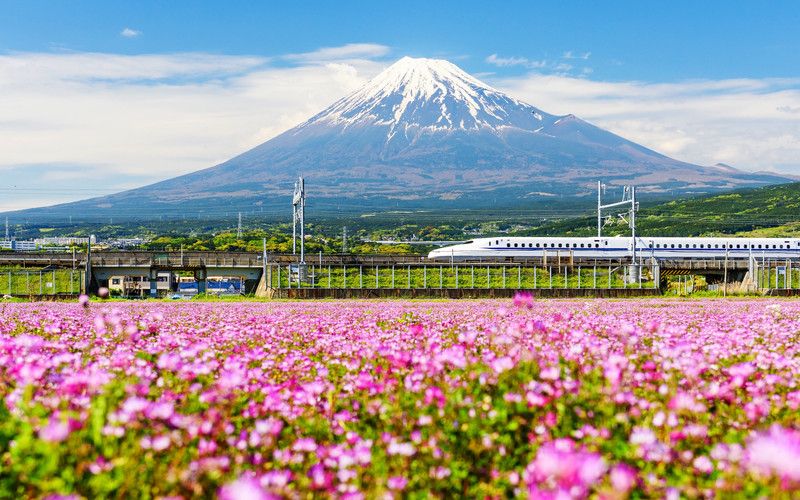
There are a endless number of reasons to visit Japan , as the country has something to entice almost every kind of traveler.
Whether you’re dying to explore Japanese history and culture at the variety of UNESCO World Heritage Sites in the country, indulge in diverse Japanese cuisine, or experience a ride on the lighting-fast Shinkansen trains, a trip to Japanese promises adventure around every corner.
From the chance to visit some of the many impressive temples and castles around the country, to the opportunity to take a dip in an Onsen hot spring, below you’ll find the 20 best reasons why you should visit Japan .
It’s easy to get around on public transportation
Japan has one of the most efficient and reliable public transport systems in the world, with a wide range of travel options including bus, train, and subway services across the country.
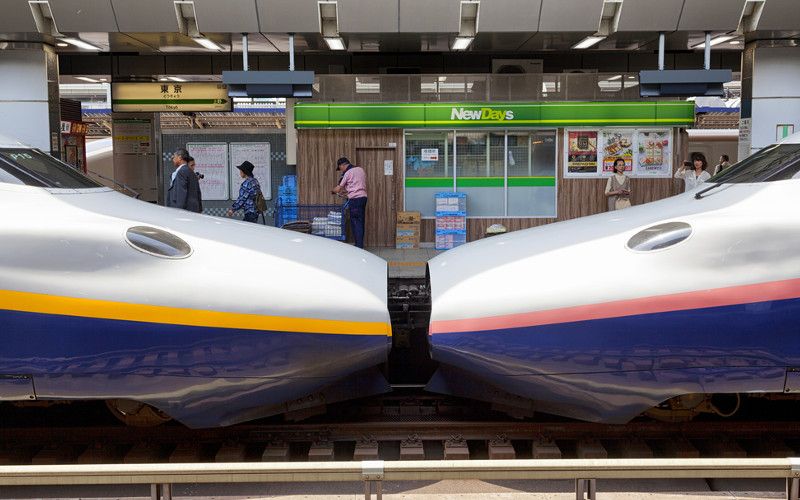
One of the best ways to get between cities is to ride the Shinkansen bullet trains , which can reach a speed of up to 300 km/h and boast a range of luxury services onboard. The most cost-efficient way to travel by Shinkansen is to buy a JR Pass online before traveling to Japan.
Book your Japan Rail Pass now
Japan is very clean
The Japanese really pride themselves on their cleanliness , and upon first arrival in the country you may be surprised by how sparkling clean the streets are.
Hotels and restaurants tend to be absolutely spotless , filled with pleasant smells, and regularly and efficiently cleaned. One downside is that there tends to be a total absence of trash cans in public spaces. However, you can just follow the Japanese example and carry garbage with you until you find a place to get rid of it later on.
Japanese people are polite and friendly
The Japanese have a worldwide reputation for being uncommonly polite, friendly, and welcoming. Although the language barrier may prove a challenge at times, people in Japan usually try to be as helpful as possible if you ask anything of them.
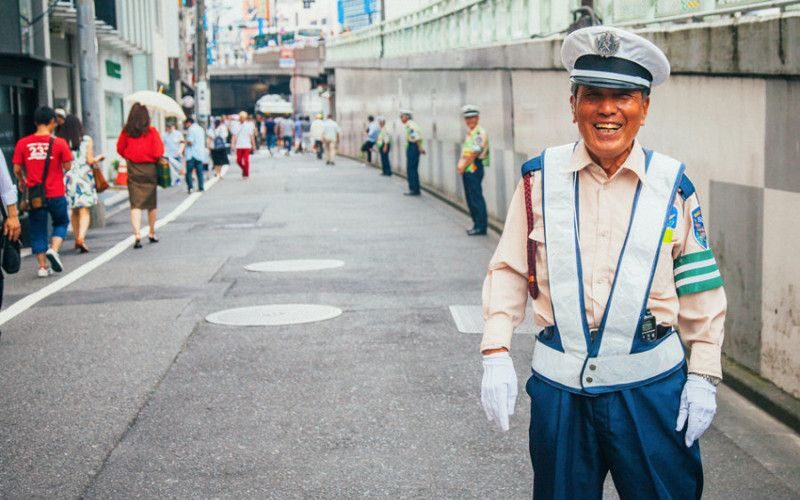
It’s a good idea to brush up on Japanese etiquette tips before traveling: locals will appreciate your efforts to respect local customs!
The incredible natural landscapes
Although Japan is perhaps best known internationally for its technologically advanced cities, the majority of the country is actually taken up by a vast expanse of forested hills and mountains , and there is lots of nature to explore.
One of the most obvious beauty spots to visit is the iconic Mount Fuji , but you shouldn’t rule out a visit to lesser known natural gems such as the Arashiyama bamboo forest or the Ritsurin landscape gardens on Shikoku Island .
The large number of UNESCO sites
Japan boasts a total of 21 World Heritage Sites , including 17 cultural monuments and 4 natural landscapes, and there are currently 8 more sites pending UNESCO classification.
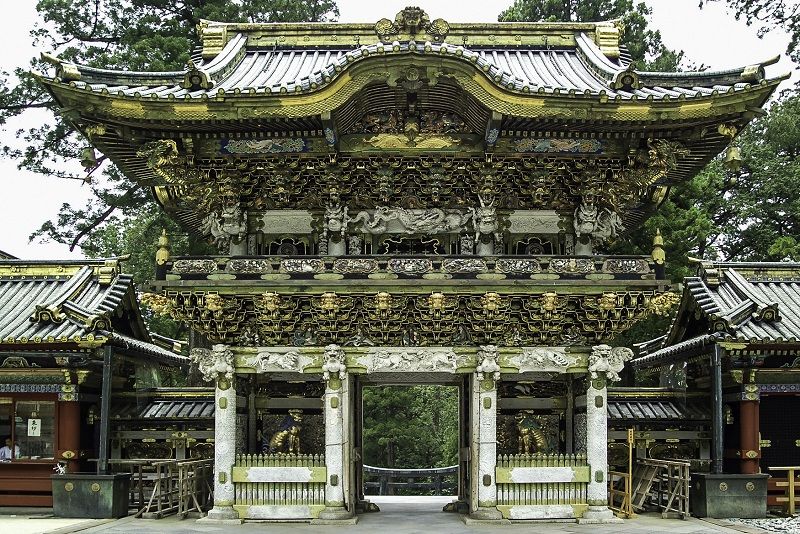
Travelers interested in Japanese history should definitely pay a visit to the Hiroshima Peace Memorial , which commemorates the victims of the 1945 atomic bomb, as well as Shirakawago and Gokayama , historic villages which feature unique thatched-roof dwellings.
The majestic temples in Japan
There are number of stunning historic temples and shrines in almost every town and city in Japan, while larger cultural centers can have up to 1,000 temples within their municipality.
One of the most impressive temples in Japan is the Byodoin Buddhist temple in Uji, a UNESCO World Heritage Site that dates back over a thousand years. The Toji temple in Kyoto , which boasts the tallest wooden pagoda in Japan and an extensive garden full of cherry trees, is also well worth visiting.
The unique castles
Visitors to Japan can dig deep into the country’s history by exploring the elegant architecture and fascinating family legacies of Japanese castles.
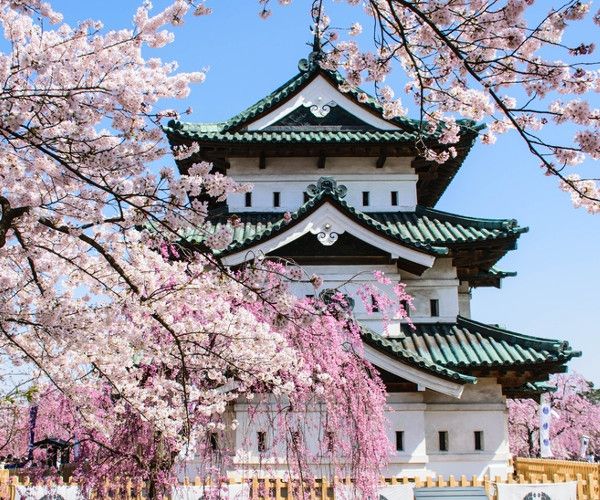
Primarily serving as the homes for local feudal lords and their family during the Sengoku period of Japanese history, the castles in Japan are defined by their elegant façades and interiors, as well as extensive defensive features.
Some of the most impressive castles in Japan include the well-preserved Hikone castle , which dates back to 1622, and the castle in Himeji .
The spectacular cherry blossom season
Japan is one of the best places in the world to view the spring cherry blossom and attend a Cherry blossom festival.
Once the cherry blossom season peaks in April , locals and visitors alike flock to Japanese parks and gardens to engage in hanami (picnics beneath the cherry trees). Some of the best places to experience the blooming flowers include Hirosaki Castle Park and Shinjuku Gyoen, located in the heart of Tokyo.
The exciting summer festivals
If you’re visiting Japan during the summer months, you should plan to experience some of the colourful Matsuri festivals which take place all over the country.
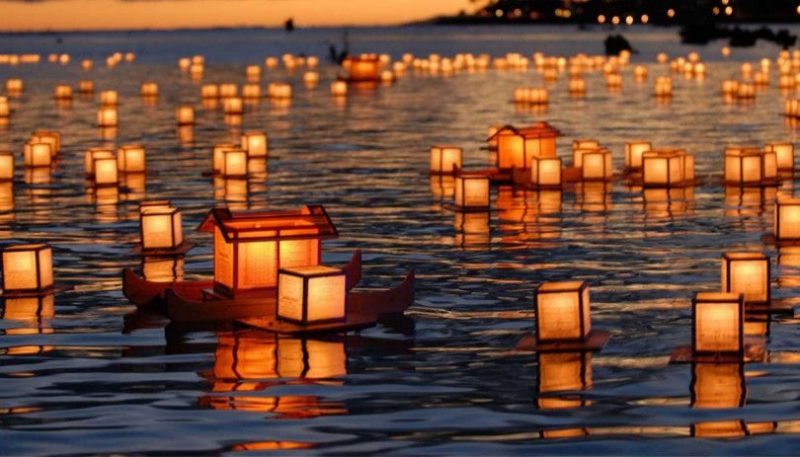
These traditional celebrations pay tribute to legendary historical events and different deities connected to an individual shrine in the towns where they take place. Many Matsuri festivals feature processions of enormous floats , colorful parades, and spectacular fireworks shows.
Christmas in Japan is magical
Spending in Christmas in Japan is worth the effort just to experience the range of extravagant winter illuminations that saturate the city streets during the festive period.
Those planning to spend winter in Japan are also advised to visit the Sapporo snow festival in Hokkaido, where you can see a range of incredible ice sculptures , many based on well-known pop culture characters.
The world-class powder snow
Winter sports enthusiasts shouldn’t miss the chance to go snowboarding and skiing in Japan at one of the many resorts across the country, as Japanese powder snow is considered some of the best in the world.
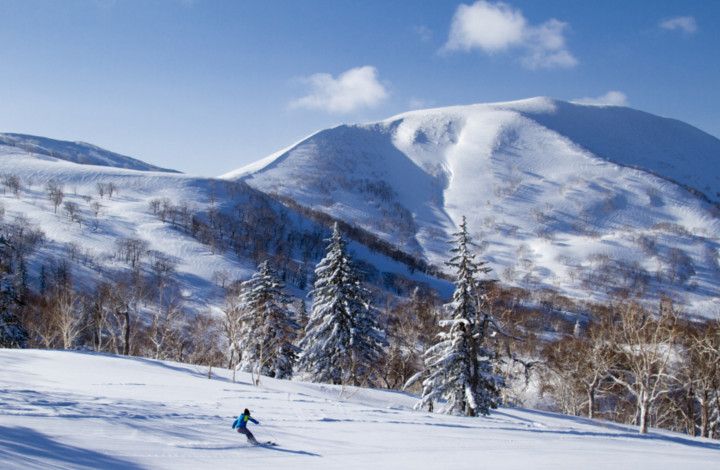
Many of the best ski resorts in Japan are located on the northernmost island of Hokkaido, such as Furano, Rusutsu, and Niseko, as well as in the Japanese Alps on Honshu.
The chance to bathe in a natural hot spring
Onsens are Japanese hot spring baths filled with mineral-rich spring water heated by geothermal forces , somewhat like a natural Jacuzzi.
Onsen baths have been present all over Japan since at least the 8th Century , when the belief that hot springs had curative and rejuvenating powers was at its height. Taking a bath in an onsen is an incredibly relaxing experience , and popular with both Japanese locals and tourists.
The superb Japanese cuisine
Food is incredibly important in Japanese culture , and while in the country you’ll be able to sample a huge range of the many delicious dishes that make up Japanese cuisine.
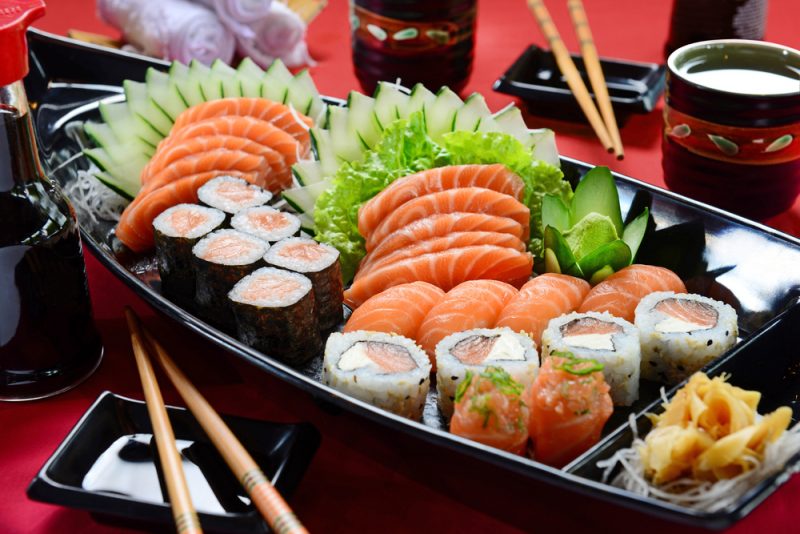
From worldwide favorites like sushi and ramen , to Sukiyaki (beef hot pot) and Yakiniku (Japanese barbeque), there are an endless number of dishes in Japan guaranteed to make your mouth water.
Japan is also the country with the most 3-star Michelin restaurants in the world , and there are are also a number of Matsuri food and drink festivals you can experience during your trip.
The fantastic architecture
You’ll be able to take in some incredible modern architecture while in the major Japanese cities, such as the Tokyo Skytree , the tallest building in the capital.
You can also find some exquisite examples of traditional Japanese architecture all over the country, such as the majestic Ise shrines on the Shima Peninsula.
The advanced technology
From futuristic capsule hotels with complimentary tablets, to high-tech public toilets , advanced technology is in full display in every corner of Japan’s cities.
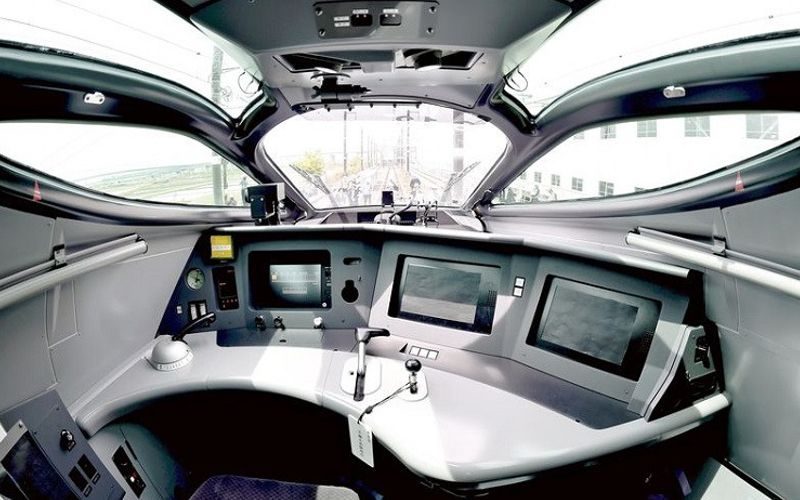
If you feel like getting an inside look at technological advancements in Japan, pay a visit to the permanent robotics exhibitions at Miraikan – The National Museum of Emerging Science and Innovation in Tokyo’s Odaiba district .
Japan is a Mecca for manga and anime lovers
If you first fell in love with Japan through manga and anime , you’re bound to be in heaven during a visit to Tokyo, which boasts a number of anime-themed experiences .
Visit J-World Tokyo , an indoor amusement park based around popular manga characters, the One Piece Tower, or the Pokémon Mega Center Tokyo , a huge store which offers a range of Pokémon merchandise exclusive to Japan.
It’s the home of Studio Ghibli
Fans of classic Japanese animation films like Princess Mononoke (1997) and Spirited Away (2001) shouldn’t miss the chance to see some of celebrated director Hayao Miyazaki’s creations at the Studio Ghibli museum in Mitaka .
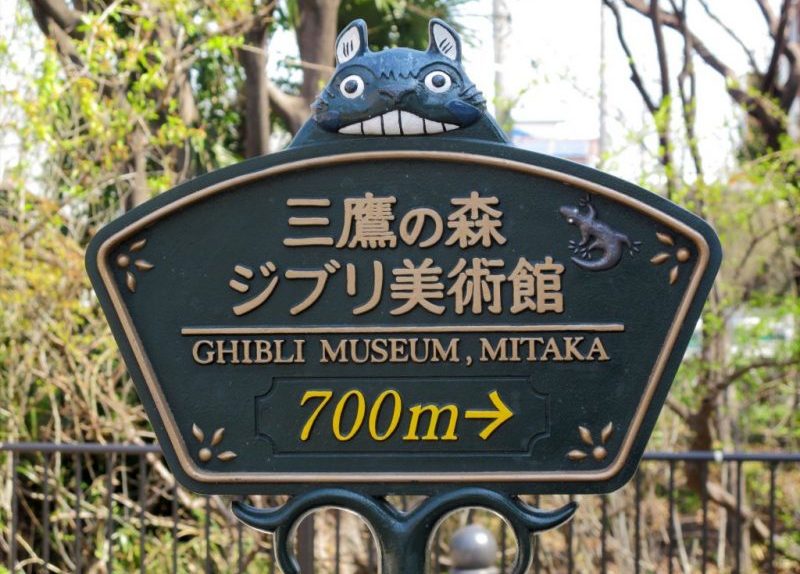
Children can play on a huge replica of the Catbus from My Neighbor Totoro (1988) and watch animated shorts exclusive to the museum. There is also an ever-changing range of exhibitions exploring Ghibli’s creative process.
Japan is the birthplace of karaoke
If you love belting out your favorite songs, whether in front of a small group of friends or a crowd of random strangers, then you’ll want to take advantage of the huge karaoke culture while in Japan.
You might not be aware that Karaoke actually originated in Japan and continues to be incredibly popular: there are currently around 100,000 karaoke boxes and bars across the country.
The fashion
Fashion lovers arriving in Japan should head directly to Tokyo’s most stylish area , Harajuku , where most of the biggest Japanese trendsetters set up shop.
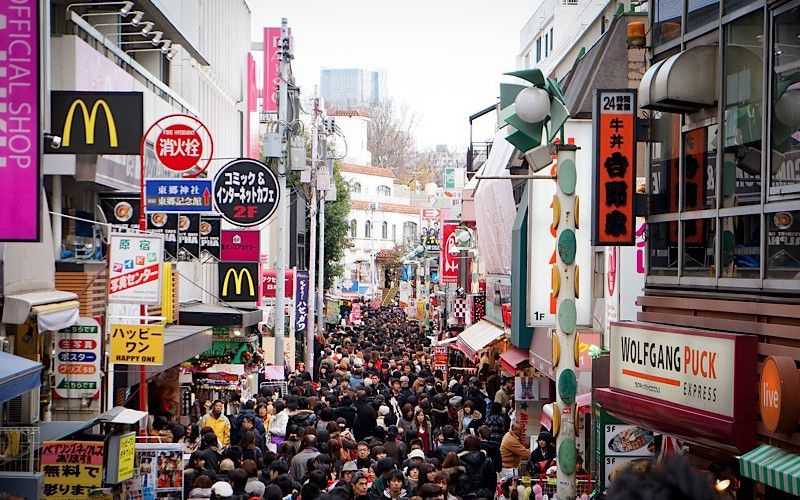
Those more interested in traditional Japanese fashion may want to pay a visit to Kyoto and try on one of the elegant kimonos or yukatas the city is famous for.
Japan is very safe
Japan is considered to be one of the safest countries in the world, and has one of the lowest global crime rates .
Japanese people often leave their doors unlocked, children are perfectly safe traveling on the subway by themselves , and visitors are able to walk around the cities at night without having to worry.
Nevertheless,as when traveling to any foreign destination, visitors to Japan should still exercise caution in crowded places and use common sense.
Related posts
Related tours & activities.
- Meetings & Events
- Newsletter Sign-up
- Coronavirus (COVID-19) Advisory Information
- Select Language 简体中文 繁體中文(香港) 繁體中文(臺灣) India (English) Bahasa Indonesia 한국어 ภาษาไทย Tiếng Việt Singapore (English) Philippines (English) Malaysia (English) Australia/New Zealand (English) Français Deutsch Italiano Español United Kingdom (English) Nordic countries(English) Canada (English) Canada (Français) United States (English) Mexico (español) Português العربية Japan(日本語) Global (English)
- India (English)
- Bahasa Indonesia
- Singapore (English)
- Philippines (English)
- Malaysia (English)
- Australia/New Zealand (English)
- United Kingdom (English)
- Nordic countries(English)
- Canada (English)
- Canada (Français)
- United States (English)
- Mexico (español)
- Global (English)
- Fujiyoshida
- Shimonoseki
- Ishigaki Island
- Miyako Island
- Kerama Island
- Tokyo Island
- Koka & Shigaraki
- Hida Takayama
- Ginza, Nihonbashi
- Beppu & Yufuin (Onsen)
- Ginzan Onsen
- Nagasaki Islands

- Kumano Kodo
- Shikoku Karst
- Amami Oshima
- Hachimantai
- Omihachiman
- Aizuwakamatsu

- Diving in Japan
- Skiing in Japan
- Seasonal Flowers in Japan
- Sustainable Outdoors
- Off the Beaten Track in Japan
- Scenic Spots
- World Heritage
- Home Stays & Farm Stays

- Japanese Gardens
- Japanese Crafts
- Temple Stays
- Heritage Stays
- Festivals and Events
- Theater in Japan
- Japanese Tea Ceremony
- Cultural Experiences in Japan
- Culture in Japan

- Local Cuisine Eastern Japan
- Local Cuisine Western Japan
- Local Street Food
- Japan's Local Ekiben
- Japanese Whisky
- Vegetarian and Vegan Guide
- Sushi in Japan Guide
- Japanese Sake Breweries

- Art Museums
- Architecture
- Performing Arts
- Art Festivals
- Japanese Anime and Comics
- Japanese Ceramics
- Local Crafts

- Scenic Night Views
- Natural Wonders
- Theme Parks
- Samurai & Ninja
- Iconic Architecture

- Wellness Travel in Japan
- Japanese Ryokan Guide
- A Guide to Stargazing in Japan
- Relaxation in Japan
- Forest Bathing (Shinrin-yoku)

- Experiences in Japan
- Enjoy my Japan
- National Parks
- Japan's Local Treasures
- Japan Heritage
- Snow Like No Other
- Wonder Around Japan

- Visa Information
- Getting to Japan
- Airport Access
- COVID-19: Practical Information for Traveling to Japan
- Anime Tourism
- Countryside Stays
- Accessible Tourism
- Hokkaido Great Outdoors
- Scenic World Heritage in Tohoku
- Shikoku’s Nature and Traditions
- Southern Kyushu by Rail

- Traveling by Rail
- How to Travel by Train and Bus
- JR Rail Passes
- Scenic Railways
- Renting a Car
- Sustainable Travel in Japan
- Travel Brochures
- Useful Apps
- Online Reservation Sites
- Eco-friendly Accommodation
- Luxury Accommodations
- Traveling With a Disability
- Hands-free Travel
- How to Book a Certified Tour Guide
- Volunteer Guides
- Tourist Information Center

- Japanese Manners
- Spring in Japan
- Summer in Japan
- Autumn in Japan
- Winter in Japan
- Cherry Blossom Forecast
- Autumn Leaves Forecast

- Japan Visitor Hotline
- Travel Insurance in Japan
- Japan Safe Travel Information
- Accessibility in Japan
- Vegetarian Guide
- Muslim Travelers
- Safety Tips

- News from JNTO
- US Partner News
- Interesting Articles
- Press Release
- Newsletter Archives
- Trade Newsletter
- Tender Notice

My Favorites
${v.desc | trunc(25)}
Planning a Trip to Japan?
Share your travel photos with us by hashtagging your images with #visitjapanjp
Unforgettable experiences and breathtaking moments
Explore the heart and soul of Japan through curated experiences
Let us guide you deeper into the heart of Japan. Meet apprentice geisha, stay overnight in a temple, raft through an epic gorge, take a private cooking lesson, rock out at a music festival or just relax on a hidden beach; Japan is yours to discover.
Explore by Interest

Destinations
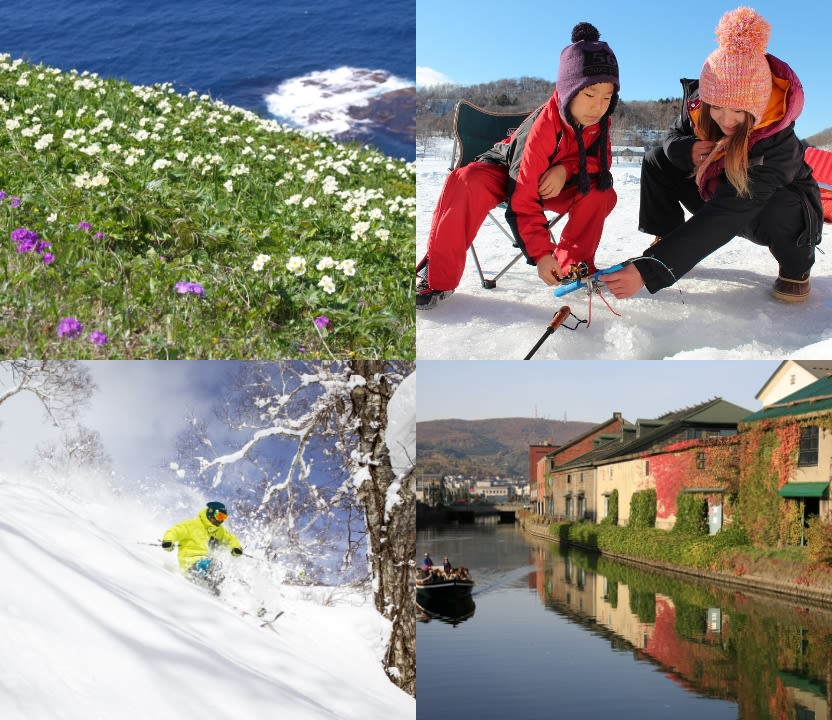
Inspiring Articles
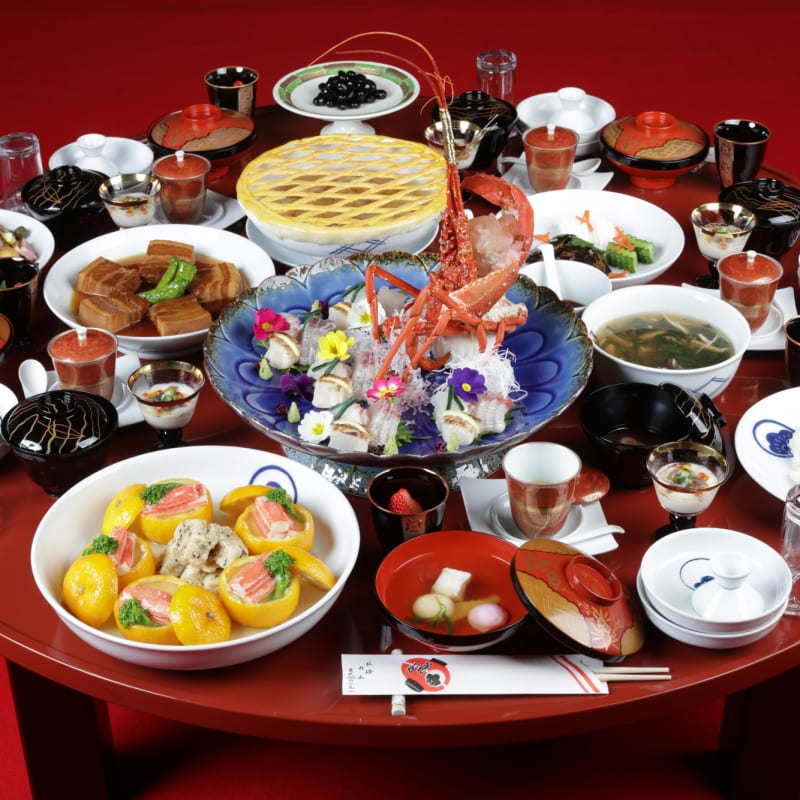
Sake, Craft Beers, and Gastronomy Tourism: Five Extraordinary Explorations into Japan’s Culinary Culture
Japan offers exceptional culinary experiences. It has a rich culinary history and diverse ingredients. Explore these five destinations for a flavorful adventure.
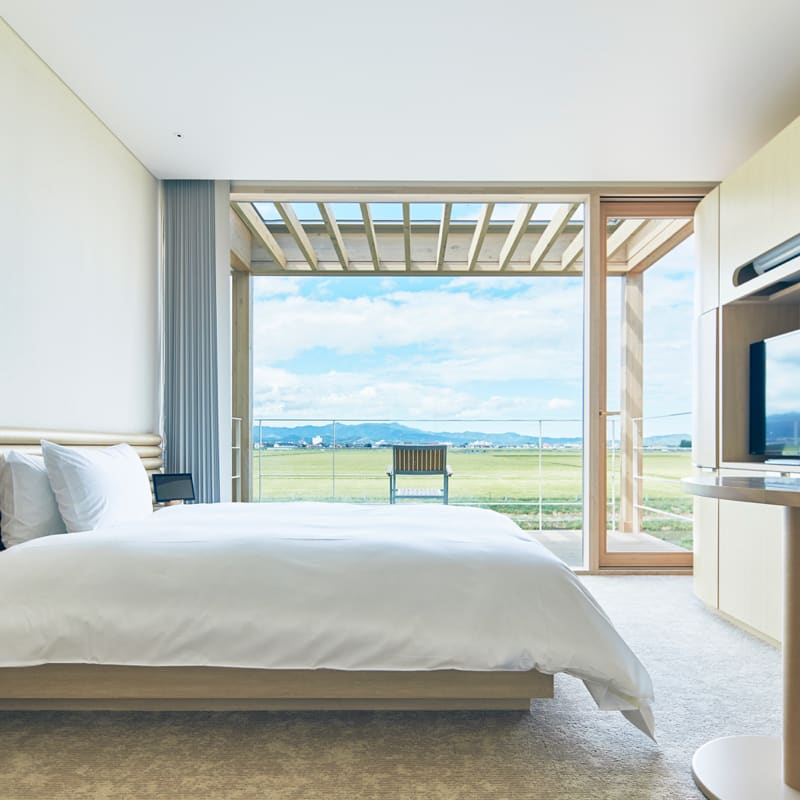
Sustainable Stays: Enhance Your Japan Experience and Have a Positive Impact with Incredible Accommodations
Think globally and act locally while traveling in Japan by booking accommodations supporting cultural heritage, environmental preservation, and sustainable agriculture.
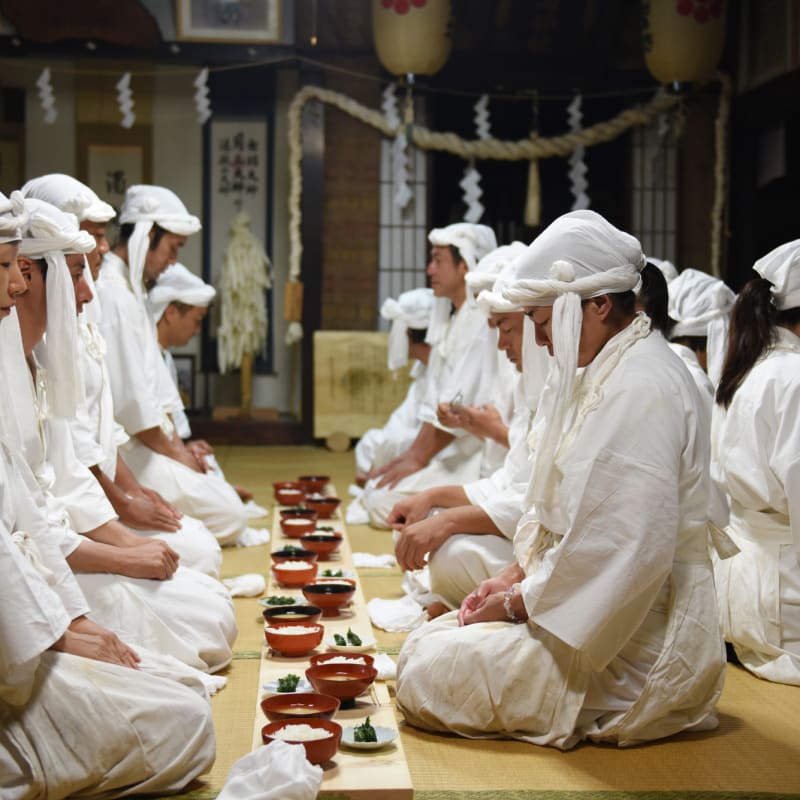
Let Japan’s Spirituality Heal Both Your Body and Soul
Boasting a history of over 2,000 years, Japan is replete with ancient spirits. Take a tour to heal both your body and soul while touching upon this unparalleled culture.
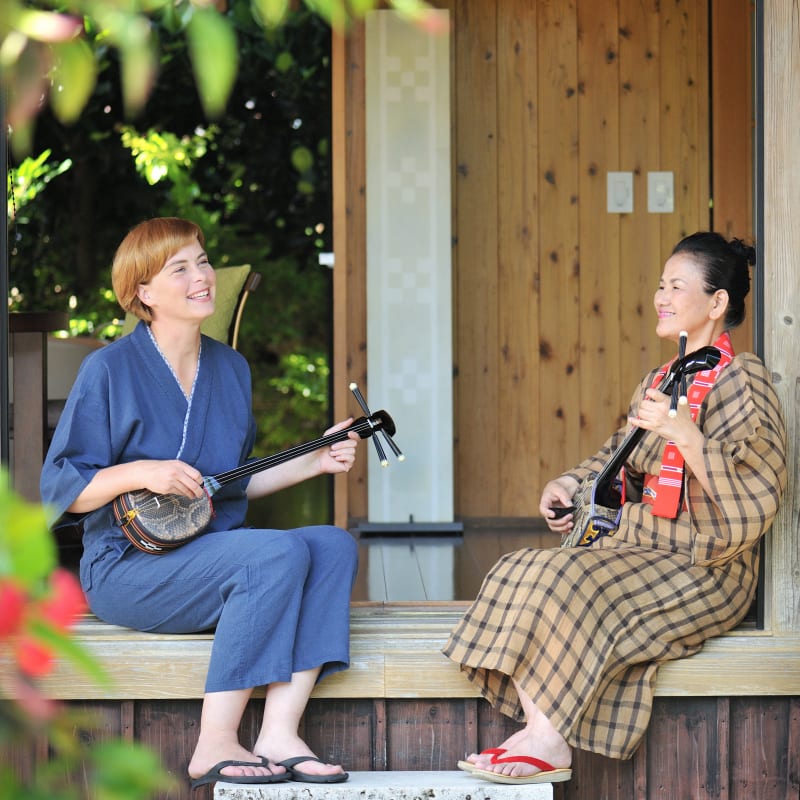
Be Healed by the Warmth and Beauty of Okinawa and its Culture
Whether it’s diving with tropical fish in the deep blue sea, watching a waterfall while dining on local delicacies, or exploring natural habitats housing protected forms of plant and animal life, the archipelago of Okinawa offers travelers a multitude of ways to relax and slow down.
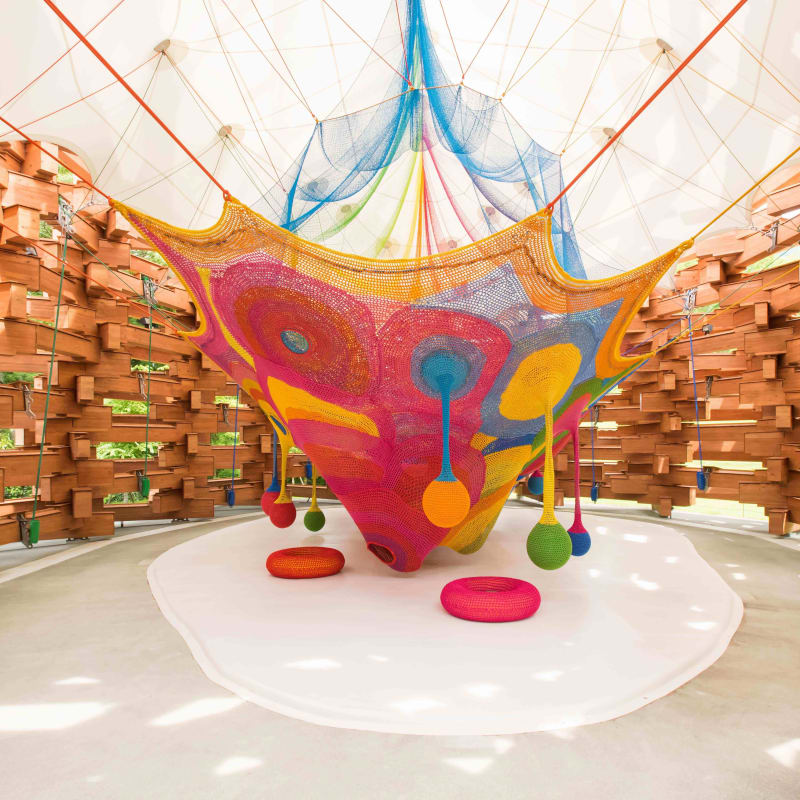
Inspiration Awaits You at Every Turn: Discover the Indelible Art of Japan
The artworks introduced in this article have been curated from all over the world, including Japan, with art enthusiasts in mind. You may find some fresh ideas to enjoy the amazing international art as well as the nature of Japan.
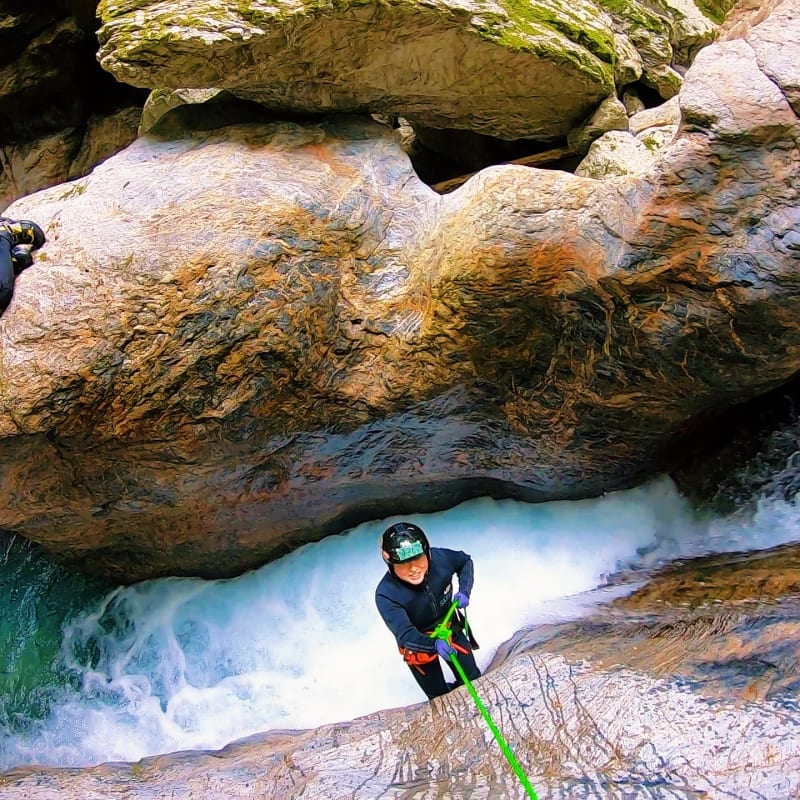
Adventure in Japan’s Great Outdoors and Explore Japanese Culture with 5 Unforgettable Summer Activities
Our Recommendations
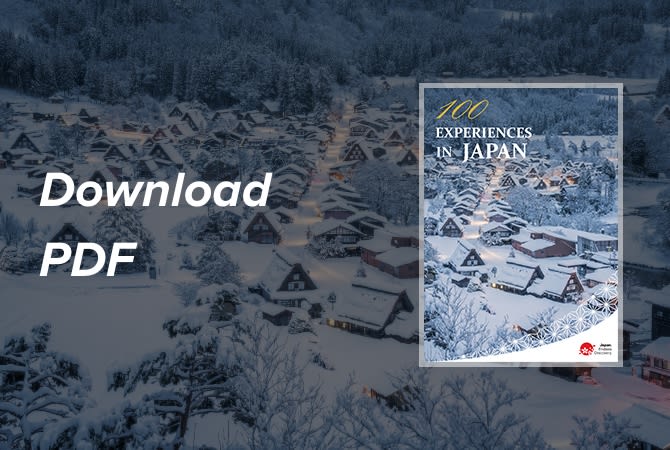
Please Choose Your Language
Browse the JNTO site in one of multiple languages
Tourism In Japan: History and Today's Situation
The sample paper on Tourism In Japan familiarizes the reader with the topic-related facts, theories, and approaches. Scroll down to read the entire paper.
Tourism is a major foreign exchange earner for many countries. Most of them are keen on creating an environment that is conducive and attractive for tourists. Governments and the private sector the world over market the tourist attractions within their jurisdictions to ensure they get a share of international travelers. Local tourist destinations are also increasingly becoming popular with citizens of the country which the attractions are located being charged lower prices by the relevant entities to encourage them to visit and promote their tourism sites.
People are usually interested in visiting new places, beautiful landscapes, sunny beaches, primitive societies and historical monuments among others. Asia as a continent prides itself in being the home to a significant proportion of international tourists. Japan is one of the biggest beneficiaries. The country is home to about nineteen world heritage sites.
Japan has managed to keep intact key aspects of its culture, a factor that has for years ensured it continuously attract tourists who are interested in learning more about the way of life of its people (McDowell 2015). Japan’s tourism industry is headed for great growth with current trends and future the government future targets set to see inbound visitors making sector become the country’s main source of employment.
.The country’s tourism sector is recording steady growth. The number of tourists in Japan has been increasing in the recent years.

Proficient in: Asia
“ Really polite, and a great writer! Task done as described and better, responded to all my questions promptly too! ”
The year 2016 has seen the number of foreign tourists visiting Japan rise to 2.3 million in the month of July alone (Japan National Tourism Organization 2016). The figure represents a 19.7 percent increase in terms of proportion compared to July of 2015. The figure surpassed that recorded in the month of April 2016 that initially had the highest figures for the year 2016 with the excess figure standing at 215000 visitors. The government had placed its estimates on inbound visitors at 20 million visitors by the year 2020 with last year missing the target by less than half a million with the figure standing at 19.7 million. The figure represents a 47.1% rise compared to that of the year 2014. The growth rate for the year 2016 is the highest since 1964 when the country’s national tourism organization started collecting data. Given the momentum with which the tourism sector is growing, the country is set to not only achieve the year 2020 target but also surpass it by a huge margin. The success has got the government to start considering reviewing the target and setting a higher one.
History Of Tourism In Japan
The composition of inbound visitors has also changed. Chinese visitors constituted the largest proportion of the visitors for the first time Japan’s tourism history. Such an event was unexpected. There are several factors that can explain the change. One of them is the growing middle-class in China. The economic growth in China has been accompanied by an increase in the number of people joining the country’s middle-class category who have greater amounts of disposable income that they can spend on luxury. Another reason for the large number of Chinese visiting is the weakening of Yen (Japan’s currency) against the Chinese currency (World Travel & Tourism Council 2015). The depreciation of the Yen makes inbound visitors find the cost of visiting Japan as holiday destination cheaper than before. The third factor in growth is relaxing of Japan’s visa requirement. The Chinese tourists were also the largest spenders. Their total expenditure accounted for about 40.8% of the 3.5 trillion Yen spent by tourists in 2015. The spending was so much and popular that it resulted in the coining of the term ‘bakugai’ which means explosive buying, to refer to the shopping sprees associated with the Chinese tourists.
Even though China ranks at the top in terms of inbound tourist to Japan, factoring in the population shows a lot of potential for growth (Research & Co 2016). For instance, even though Taiwan and Hong Kong are much smaller in comparison to China their proportionate tourist numbers are far much than those of China. In view of the growth potential, Japan can look forward to a greater number of inbound Chinese tourists than before.Japan also still has more room for deregulation, a factor that is bound to lead to a surge in the number of tourists from its three biggest inbound tourists that include Chinese, Taiwanese and Koreans. However, a reversal in the weakening of the Yen may lead to a counter effect that may see the numbers become more unpredictable.
Inbound tourism is one of the most promising businesses in Japan. Holiday and travel is the new employment platform and economic driver for the population. Its contribution currently rivals that of the auto industry that is a major employer. The sector currently employs more than 3% of the country’s total population (Japan Macro Advisors 2016). After the winning the bid to host the 2020 Olympics, the government intensified its efforts aimed at promoting tourism. The private sector was not let behind. Various stakeholders began taking advantage of the measures set in place by the government in promoting tourism to offer complementary services that would help create enabling conditions. One of such initiatives was by NTT Docomo Inc that launched a wireless internet service to cater for foreign tourist some of whom had initially complained about the lack of wifi in the country (Kodera 2014). Such kinds of initiatives by both the government and the private have created more employment opportunities especially in the service industry.
Clearly, Japan’s tourism industry is headed for great growth given the current trends and future the government future targets that might see the inbound visitors become the main source of employment. The country’s tourism sector is recording steady growth. Inbound tourist numbers in Japan have been increasing at an unprecedented rate in the recent years, helping it set new records in its tourism sector (Business Monitor International Ltd. 2016). The composition of inbound visitors has also changed. This year, Chinese visitors constituted the largest proportion of the visitors for the first time in Japan’s tourism history. Factors such as deregulation, a weakening Yen and a surge in the middle-class are the main contributors to this new trend. Despite the fact that China ranks at the top in terms of inbound tourist to Japan, factoring in the population size shows a lot of potential for growth. Japan can take advantage of the opportunity to do more in terms of deregulation and creating a more conducive environment for tourists.Inbound tourism is one of the most promising businesses and the various stakeholders in Japan’s tourism industry should do their best to maximize their income.
Bibliography
Business Monitor International Ltd. (2016). Japan tourism report . London, Business Monitor International.
Japan Macro Advisors, (2016). Number of Visitors to Japan|Foreign visitors|Tourism . [online] japanmacroadvisors.com. Available at: https://www.japanmacroadvisors.com/page/category/economic-indicators/gdp-and-business-activity/number-of-visitors-to-japan/ [Accessed 19 Sep.
Japan National Tourism Organization (2016) Welcome to the Japan national tourism organization website . Available at: http://www.seejapan.co.uk/jnto_consumer/index (Accessed: 19 September 2016).
Kodera, A. (2014) Tourism emerges as new economic driver for Japan | the Japan times . Available at: http://www.japantimes.co.jp/news/2014/08/25/reference/tourism-emerges-new-economic-driver-japan/#.V-AIjTVJR-8 (Accessed: 19 September 2016).
McDowell, P. (2015). Japan , Sage, London
Research, J.T. and Co, C. (2016) Japan tourism marketing Co . Available at: http://www.tourism.jp/en/statistics/ (Accessed: 19 September 2016).
World Travel & Tourism Council (2015) Economic Impact 2015 Japan . Available at: https://www.wttc.org/-/media/files/reports/economic%20impact%20research/countries%202015/japan2015.pdf (Accessed: 19 September 2016).
Cite this page
Tourism In Japan: History and Today's Situation. (2019, Dec 06). Retrieved from https://paperap.com/tourism-in-japan-history-and-todays-situation/
"Tourism In Japan: History and Today's Situation." PaperAp.com , 6 Dec 2019, https://paperap.com/tourism-in-japan-history-and-todays-situation/
PaperAp.com. (2019). Tourism In Japan: History and Today's Situation . [Online]. Available at: https://paperap.com/tourism-in-japan-history-and-todays-situation/ [Accessed: 11 Aug. 2024]
"Tourism In Japan: History and Today's Situation." PaperAp.com, Dec 06, 2019. Accessed August 11, 2024. https://paperap.com/tourism-in-japan-history-and-todays-situation/
"Tourism In Japan: History and Today's Situation," PaperAp.com , 06-Dec-2019. [Online]. Available: https://paperap.com/tourism-in-japan-history-and-todays-situation/. [Accessed: 11-Aug-2024]
PaperAp.com. (2019). Tourism In Japan: History and Today's Situation . [Online]. Available at: https://paperap.com/tourism-in-japan-history-and-todays-situation/ [Accessed: 11-Aug-2024]
- The Fall of Japan Imperial Nation And Mobilization in Japan Pages: 4 (1072 words)
- The Origin and History of Manga in Japan Pages: 4 (1006 words)
- Japan Art History Pages: 13 (3898 words)
- A History of the Tokugawa Shogunate in Japan Pages: 2 (415 words)
- The Carnival Cruise Lines Today Tourism Essay Pages: 18 (5275 words)
- Noise Pollution Under Stop and Go Situation Pages: 11 (3049 words)
- Burger King - Customer and Market situation of the industry Pages: 8 (2177 words)
- Connection Between Starkfield’s Nature and the Protagonist’s Bleak Situation Pages: 2 (591 words)
- Advantages And Disadvantages Of The Impacts Of Tourism Tourism Essay Pages: 3 (853 words)
- Push And Pull Factor In Tourism Tourism Essay Pages: 12 (3433 words)
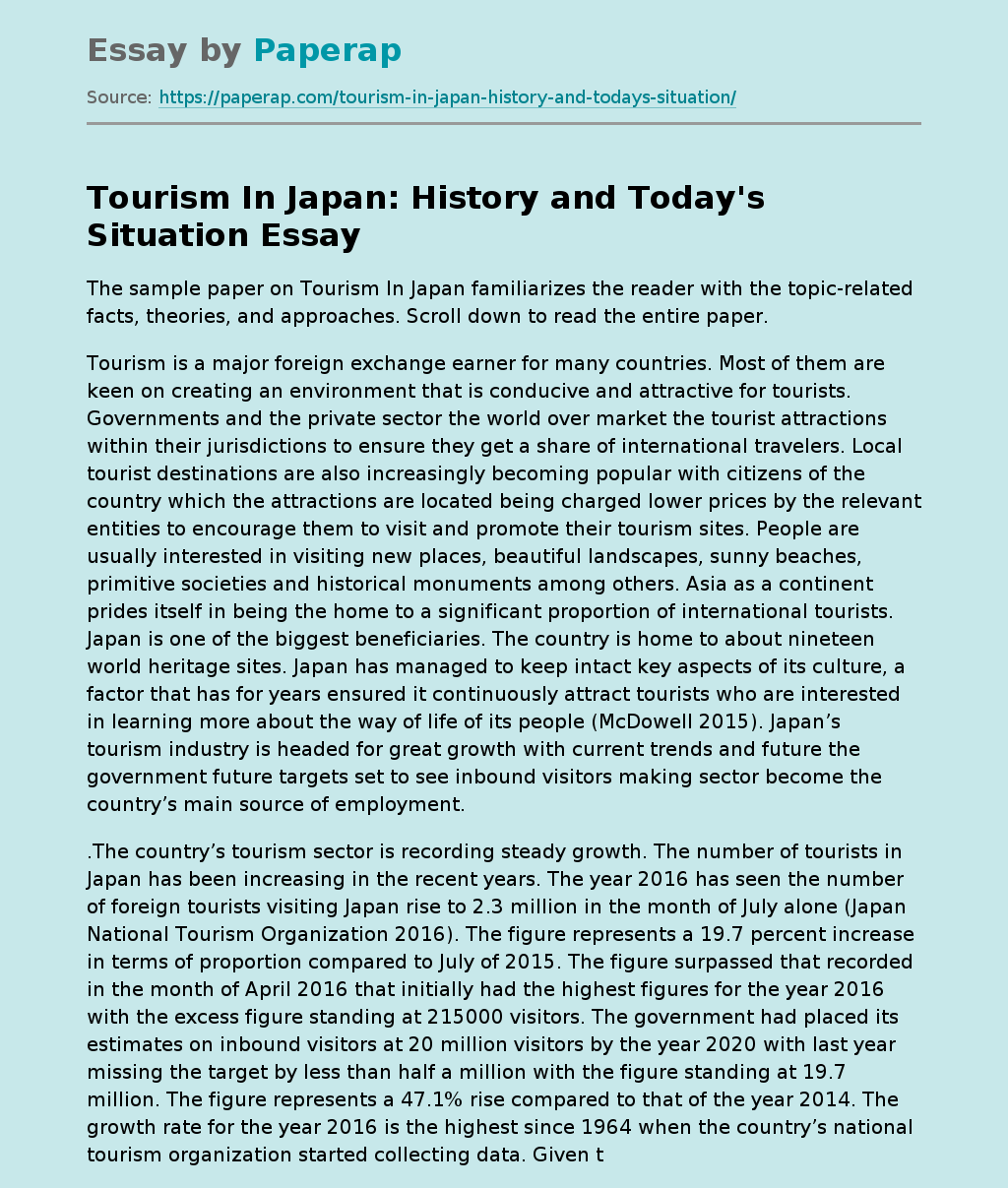
- Share full article
Advertisement
Supported by
Japan Likes Tourists, Just Not This Many
The country has politely handled travelers for years, but as international visitors spill into previously untouristed spots, some residents are frustrated.

By Yan Zhuang
The writer spent several days elbowing through crowds in Kyoto and Fuji City, Japan.
On two recent occasions, a foreign tourist walked into Shoji Matsumoto’s barbershop, through a front door that grates loudly when opened more than halfway, wanting a haircut.
One was Italian, the other British. Mr. Matsumoto, who is 75 and speaks neither of their languages, didn’t know what to tell them. He picked up his scissors and began to cut, hoping that his decades of experience would carry him through the stilted encounters.
Tourists, propelled in part by a weak yen that makes their money go further in Japan, have been pouring into the country ever since it eased its coronavirus-related entry restrictions in 2022. Some officials, including Prime Minister Fumio Kishida, have raised concerns about overtourism. In March, there were more than three million international arrivals, a monthly record, and a more than 10 percent jump compared with March 2019.
Nearly two thirds of international visitors tend to be from South Korea, Taiwan and China. Last year, spending from foreign tourists made up about 9 percent of Japan’s gross domestic product.
Popular sites in cities like Kyoto, Japan’s ancient royal capital, feel increasingly unmanageable. Visitors are spilling into previously untouristed places, like small towns near Mount Fuji or the commercial district of Kyoto where Mr. Matsumoto cuts hair.
We are having trouble retrieving the article content.
Please enable JavaScript in your browser settings.
Thank you for your patience while we verify access. If you are in Reader mode please exit and log into your Times account, or subscribe for all of The Times.
Thank you for your patience while we verify access.
Already a subscriber? Log in .
Want all of The Times? Subscribe .
SPECIAL COLLECTIONS

COURSE READERS
Our course readers are essay compilations designed to make it easier for teachers and students to use the Asia-Pacific Journal: Japan Focus archive.
SPECIALS ARCHIVE

EXPLORE BY VOLUME
SUPPORT THE JOURNAL
Our ability to publish depends on the generous support of our readers. Please consider making a donation.
- Course Readers
- Submissions
Introduction
March 15, 2019

Volume 17 | Issue 6 | Number 1
Article ID 5262
https://apjjf.org/wp-content/uploads/2023/11/article-1586.pdf
I. Why study “dark tourism”?
A sidebar controversy to the intense debate of 2015 on how Japan’s leaders would mark the 70 th anniversary of the end of World War II sparked my interest in the phenomenon of “dark tourism,” defined in brief as touristic interest in sites associated with death, disaster and atrocity. The practice of dark tourism, with focus mainly on the creation of dark tourist sites and the messages they convey (or fail to convey), is the concern of the three papers to follow.
The main controversy in and around Japan that year was not dark tourism, but rather, the stance the Japanese government — Prime Minister Abe Shinzo, in particular — would take in a public statement expected to be issued on the August 2015 anniversary of Japan’s surrender. Abe’s base in the Diet and beyond, and most notably in the organization known as the Japan Conference (Nippon Kaigi), was well-known for denying both the atrocities in Nanjing and the wartime government’s responsibility for recruiting, transporting and confining Korean and other women in the so-called “comfort stations. 1 In line with this stance, in the run-up to the 70 th anniversary, Prime Minister Abe made no secret of his desire to break with the 50 th and 60 th anniversary statements, notable for relatively forthright apologies for wartime aggression and the colonization of Japan’s neighbors. From late 2014 through the summer of 2015, a fraught context of anticipation and criticism from the South Korean and Chinese governments, as well as from activists and scholars in Asia and the West, put a chill on Japan’s relations with its neighbors.
In the 2015 statement Abe issued on behalf of the government on the anniversary of Japan’s surrender, his pragmatism narrowly outweighed his nationalism. He effectively finessed the apology question. By including the four key words of his predecessors’ statements of 1995 and 2005—“heartfelt apology,” “deep remorse,” “colonial rule” and “aggression”—he limited the ongoing recriminations from abroad. At the same time, his grammar offered a subtle gesture toward his nationalist base. He affirmed the apology of predecessors without apologizing in his own voice. He stressed Japan’s peaceful global posture since 1945, and sought to exempt his successors from further apology: “We must not let our children, grandchildren, and even further generations to come, who have nothing to do with that war, be predestined to apologize.” He concluded that “even so, we Japanese, across generations, must squarely face the history of the past.” 2
That same summer, a related controversy surrounded Japan’s petition to UNESCO to recognize a number of shipyards, iron mills, and coal mines as “World Heritage Sites,” notable as the locales for the first non-Western industrial revolution. This suggested Abe’s government was hardly facing history squarely. The South Korean government threatened to veto Japan’s application because it focused only on the Meiji era, with no mention of the brutal treatment of drafted wartime laborers transported against their will from the Asian continent to work in Japan. Eventually, the two sides agreed that coercion was part of the story. For a time, they argued over the precise wording to describe it. Would it be kyōsei rōdō (“forced labor”) or the slightly softer kyōsei sareta rōdō (“labor that was forced”)? In the end, the Japanese government acknowledged that Chinese and Korean labor “was forced” to work at these sites during the war, and the UNESCO committee voted to designate these facilities as World Heritage Sites.
|
|
The framing of this issue in terms of a Japanese-told story of “a good Meiji” versus a Korean or colonized story of a “bad empire” was almost inevitable in the context of the contested politics of history and memory in Japan, as well as around the world, that played out on the main stage in 2015. Even so, it struck me as very odd. Odd, although not surprising, firstly because the Japanese government application to UNESCO made no mention whatsoever of the difficult conditions experienced by the many thousands of Japanese men and women, including prison laborers, who had worked in these same mines and shipyards from the time of their founding. Odd, secondly, because few of those who jumped into the debate did so by questioning the “good Meiji” narrative.
Alternative ways to view the history of Japan’s industrial revolution were, after all, well known, and easily accessible. I had written at length about sites of Japan’s industrial revolution in my doctoral dissertation and first book. I had learned from earlier generations of historians in Japan of the dangerous conditions, frequent accidents, and harsh supervision endured by workers in mines in particular, but also in steel mills and shipyards. For years, I had been showing students in my courses an excerpt from a program on Meiji-era Japan, itself an hour-long segment in an eight-part documentary produced by Seattle Public Television in 1985, titled The Pacific Century . That several-minute excerpt described the dark side of Japan’s Meiji era modernization. The narrator and the camera zoom in on Hashima (or Gunkanjima: “Battleship Island”), probably the best-known of the locations proposed for World Heritage Status. The narrator calls it “a ghostly relic of the costs of Japan’s modernization.” The eminent economic historian Sumiya Mikio then elaborates:
“It was hell. This kind of mine work was true hell…Many people tried to escape but they couldn’t because it was an island. Records show that when people were caught trying to leave, they met a horrible end. Around 1890, there were newspaper accounts of miners who were murdered by their bosses when they were caught trying to escape from Battleship Island.”
Although I have no quarrel with the program’s general depiction of labor conditions in this or other mines of the time, I have not been able to find a newspaper account that matches Sumiya’s story exactly. Rather, I discovered a more complex and telling newspaper report of a murder on Battleship Island. The top story on the front page of the Tokyo Asahi Shinbun on April 17, 1897 ran the headline “Miners’ Strike and Murder.” It reported that striking miners murdered one Nakamura Jūhei, a labor boss at the mine. A subsequent article describes the context of the strike as concern for safety after a gas explosion, and a call for higher wages. 3
Clearly, then, this island offers opportunities to examine histories not only of economic development and technological achievement, but also of labor exploitation and resistance by the miners. I was disappointed (if hardly astonished) that Japan’s application to UNESCO focused exclusively on achievements in technology and management, with nary a whisper about the dark side of these places during the Meiji period itself. But knowing of the Pacific Century video, I was more disappointed and more surprised that almost none of the media coverage of this 2015 controversy, and so few of the responses of scholars—two notable exceptions being the fine pieces in this journal by Takashi Miyamoto and Hiromi Mizuno in 2017—placed the undeniably atrocious conditions imposed on wartime laborers from Asia (and some Allied POWs) in a longer context of coerced labor (prison labor) or harshly exploited “free” labor in these same locations. This history reached back to the very period the government hoped to celebrate. 4
These concerns most immediately led me, on the one hand, to look further into the history of labor at these UNESCO sites, and on the other hand, to examine the way these locations are being presented to the public in the years since they have been given “World Heritage” designation. But they also drew me into a broader inquiry into the global phenomenon of “dark tourism” and the academic literature that has defined the field, as well as into the varied ways in Japan that a wide array of “dark tourism” sites have been presented to the public and understood by visitors.
As a step in this inquiry, in the winter-spring semester of 2018, I taught a graduate seminar on dark tourism and public history in Japan. We began by reading some of the foundational works on these topics in English and Japanese. We then examined the 2015 controversy over the UNESCO designation of factories, shipyards, and mines founded in the Meiji era as “World Heritage Sites.” Finally, each participant chose a site of public history/memory and “dark tourism” for sustained analysis. The three articles that follow are revised versions of those seminar papers.
II. Themes in the Study of Dark Tourism and Public History 5
If tourism is associated with enjoyment, “dark tourism” is on first encounter an oxymoron, linking a typically pleasurable activity to extremely unpleasant events of the past. But the practice has a long history, with imprecise origins reaching at least as far back as the beginning of modern times. Touristic visits to the Waterloo battlefield began even before the fighting had ended. 6 From the 19 th century to the present, leisure-time travel to sites of death and disaster has been quite common. And if one more capaciously understands dark tourism (or thanatourism) to include religious pilgrimage to sites associated with death, it has even deeper roots. It reaches back to medieval Europe and places such as Canterbury Cathedral—the site of Thomas Beckett’s assassination and the destination of the pilgrims in The Canterbury Tales —and to premodern Japan, as Sara Kang’s essay reveals. 7
In contrast to touristic practice, the academic study of “dark tourism” has a precise time and place of origin: a 1996 special issue of the International Journal of Heritage Studies edited by John Lennon and Malcolm Foley. They argued in their opening editorial that “common threads could be drawn between sites and events of the last hundred years, which had either been the locations of death and disaster, or sites of interpretation of such events for visitors.” They chose the term “dark tourism” provisionally as a capacious one “encompassing the visitation to any site of this kind for remembrance, education or entertainment.” They expressed some surprise that their coinage seemed to have entered common usage. 8
Over the following two decades, it has been scholars in the field of tourism and heritage studies, rather than historians, who have produced the most significant body of Anglophone scholarship on this topic. Lennon and Foley themselves followed up their edited journal issue in 2000 with a book on Dark Tourism: The Attraction of Death and Disasters . 9 It ranged from an examination of Hitler’s death camps and memorial sites for the two World Wars, to a look at three locations connected to the assassination of American president John F. Kennedy, to a study of the island of Cyprus, where Turkish and Greek interpretations of the touristic value of the place differed dramatically. The chapter on Cyprus was unusual for its attention to international conflict in the interpretation of heritage sites, an aspect not foregrounded in the other cases Lennon and Foley examined.
These early studies of “dark tourism” directed attention variously to the supply and demand sides of the activity. Some primarily addressed questions of who designated “dark” places as tourist sites and why; others looked more at who visited these places and why. But they tended toward a relatively uniform understanding of these locations as unrelievedly dark places. Before long, however, scholars more usefully began to examine the complex hues of darkness, or the mixture of dark and light, that are in fact defining features of almost all the sites of dark tourism, including those in Japan and Asia. In 2003, Strange and Kempa, for example, looked at two former prisons, Alcatraz in the United States and Robben Island in South Africa, in a suggestive study of what they euphonically call “the sad and the bad and their touristic representations.” They identify an important emphasis at both places not only on the suffering of prisoners, or the magnitude of their crimes, but on admirable struggles for justice or democracy: the struggle against apartheid at Robben Island, and the 1969-1972 Native American occupation at Alcatraz. 10 We will see in the essay by Jesús Solís in this special issue that Japan’s Abashiri Prison is also the site of a multi-hued history, in which emphasis on one or another shade has changed over time. In 2006, Philip Stone surveyed a wide range of works to construct what he called a “dark tourism” spectrum from light to dark, although the issue for him was less the mix in the history itself, than the mix of invitations to sober reflections versus entertainment or titillation in the way various sites were presented. 11
It will not surprise readers of The Asia-Pacific Journal to learn that not only Lennon and Foley’s original work, but also the Anglophone scholarship on dark tourism was, for some time thereafter, quite Euro-America centered (the study of Robben Island in South Africa was one partial exception; this was a non-European site, but the issue was that of the legacies of European colonial rule). More recently, a fair number of studies of Asian tourist sites have appeared. Two notable works published in 2012 were an article on a North Korean resort, asking if it functions as a site of thanatourism or of peace education, and an article from the same year comparing tourism involving Hiroshima and Struthof (a German-run concentration camp in France). 12 Most recently, the question of dark tourism at sites of Japan’s 2011 compound disasters—both those devastated by the tsunami itself or those connected to the nuclear meltdown—has gathered considerable attention among journalists and a small number of social scientists. 13
In Japan, in addition to a spate of relatively shallow and celebratory publications on Hashima/Gunkanjima, some important work has been published in the past decade on the topic of dark tourism, in some cases using the term itself rendered in katakana as daaku tsūrizumu [ダークツーリズム.]. 14 Particularly rich and relevant for this set of papers is a book by Kimura Shisei, whose title can be translated as Representation and Memory of Industrial Heritage: The Politics of “Battleship Island.” Noting that media attention to industrial heritage sites has demonstrably surged in the 2010s, he thoughtfully explored the meaning of this phenomenon. His scope is both global and specific to Japan. He described the rise of movements in Europe from the late 18 th century to preserve “cultural heritage,” and then examined two specific early efforts to turn coal mines in Germany and Britain into heritage sites. He cast a critical eye on the appropriation of local efforts to memorialize mines and miners in the service of national narratives of the nation state. He argued that such appropriation effaced local complexity and hid from view the negative elements of these histories. Turning to Japan, he examined the case of the Miike mine before turning to that of Hashima/Battleship Island. Of particular value and importance is his attention to what he calls “rescaling,” by which he means the way local endeavors are raised to a national scale, in this case because of the entry of an international validating body (UNESCO).
The most prolific contributor in Japanese to the study of dark tourism is Ide Akira, a scholar in the field of tourism studies at Kanazawa University. In 2016, he edited an issue of the occasionally published magazine Dark Tourism Japan (ダークツーリズム・ジャパン). It focused on “the light and shadow of industrial heritage,” including both Hashima/Battleship Island and famous sites of industrial pollution. The latter ranged from a large museum in Yokkaichi, where air pollution from oil refineries caused a huge spike in cases of asthma, to a large number of sites in the vicinity of the Ashio copper mine. Most of these focus attention on the disastrous pollution resulting from the toxic run-off from the mine, but with some effort, one can also visit memorials to conscripted wartime laborers from Korea and China. In 2018, Ide published two books on the topic. One focuses on dark tourist sites in Japan, while the other looks at tourist sites ranging from Asia to Europe to the United States, most of which have some connection to Japanese history through the history of emigration or imperialism and war. 15
Ide’s approach is that of the travel guide. He examines both the supply and demand sides of the story. His writings richly annotate a tourist itinerary with information about the various dark histories that one can experience or understand. They also offer accounts of the process by which those histories have come to be presented to visitors. Perhaps the most important conclusion to be drawn from this work is that one finds in Japan—as elsewhere—a rich variety of perspectives and strategies for marking and promoting sites of difficult history. These include thoughtful and frank presentations of histories of suffering and sacrifice, of victimization, as well of victims. This conclusion, affirmed in the papers below, is an important counterpoint to the easily made criticism of the celebratory framing of most historical sites by the national government, which evades confronting the darker sides of Japan’s past. That criticism is justified, but it is only part of the story of dark tourism in Japan.
The vigorous scholarship on dark tourism both in the Anglophone world and in Japanese writing is part of a wider upsurge of academic interest in the field of public history. This field is sufficiently well developed that Oxford University Press has published one of its characteristically broad-ranging handbooks on the topic, the 550-page Oxford Handbook of Public History . 16 By my count, as many as 13 of the 28 essays touch in some measure on dark tourism, if we include multi-hued articles such as that on “Arts and Heritage in the Aftermath of Deindustrialization.” Part VI of the Handbook most directly addresses dark tourism, here termed “Difficult Public History,” with chapters on topics such as German wartime memory, slavery tourism in Ghana, and monuments in Indonesia celebrating the 1965 massacre of communists and lamenting terrorism in Bali in 2001.
The global range of the Oxford Handbook makes it clear that the study of both public history and dark tourism is evolving dynamically all around the world. As this work continues, historians and scholars of tourism need to focus more attention on at least two dimensions of these practices. First, we must examine further the way shifting global or regional contexts shape national and local understandings of “dark” events and locations. Second, we need to attend even more closely to the interplay of multiple hues, or shades of gray, in the practice of public history and the histories of publicly commemorated places. Plantation homes or slave markets invite consideration of dark histories of inhumane treatment, as well as inspiring histories of resistance or struggles for dignity and freedom. Coal mines or steel mills open windows to dark pasts of coercion and exploitation, and may also shed light on struggles for improved treatment and for the rights of working people.
III. Some themes in the study of dark tourism in Japan
The papers to follow address both these dimensions, offering considerable insight into the variety and complexity of dark tourism and public history in Japan. All three papers suggest that the curation of a site of dark tourism is inevitably contentious, generally offers multiple shades of dark and light, and very often engages global, as well as local and national, contexts. It is never possible to simply obscure a difficult history by presenting a prideful national narrative, although that is done with varying degrees of success in different places and cases. The lines of contention also vary from place to place. Certainly local, national, and international interests and contexts can be at odds with each other. But these levels can themselves be home to division and tensions. They must be examined with care in each case.
The Abashiri Prison and Museum, in Jesús Solís’ telling, offers a fine example of a local challenge by historians and citizens to a dominant narrative of the center and the state, where a relatively unified local position seems to have emerged in the 1970s. It is also a multi-hued story that has been told differently over time, with prisoners earlier having been stigmatized, but more recently recast in a sympathetic, at times heroic, light. The two memorials to Japanese settlers in Manchuria examined by Bohao Wu, one in Nagano Prefecture in Japan, the other in Heilongjiang Province in the PRC, were in some measure similar to the Abashiri case, in that one finds local interests and perspectives at odds with national ones. But the creation of both memorials also placed local actors in sharp conflict with each other, in Nagano notably over whether the term “pioneer” ( kaitaku ) was an appropriate one, given that its positive connotations obscured the history of the expropriation of land from Chinese farmers. The controversy over “ownership” of the Shikoku pilgrimage route is, at first glance, a story pitting local residents against each other, although there were national interests framing the issue as well. One must always, then, unpack the “local.” It is tempting to cast local perspectives in positive terms as more authentic and honest than national ones, but that oversimplifies these stories.
Global and national actors and influences enter these three histories in diverse fashion. The contemporary debate over who “owns” the Shikoku pilgrimage route ( henro ) offers the clearest case of a direct impact—as with the industrial heritage sights—from UNESCO. Sara Kang shows that the entry of UNESCO as a global arbiter of historical value does more than drive the narrative toward a simplified story of national pride. It leads religious devotion to be recast as a more universalized “cultural” activity, in some measure stripped of its meaning. It also pressures localities to spend scarce resources to restore an artificial “authenticity” to the pilgrimage route. The cases of the Abashiri Prison Museum or the memorials in Japan and China to emigrants to Manchuria differ from that of the Shikoku pilgrimage in that one finds no formal role played by an international body. Even so, it is clear that local and national actors are aware of a wider audience beyond the bounds of the nation.
All three cases highlight an aspect of dark tourism at the forefront of the field of tourism studies, which historians must also examine: the economic calculus, in particular the desire of local actors to create exhibits to draw visitors and generate revenue. This aspect of dark tourism might seem so obvious as to go without saying. But it plays out in interesting and different ways across these and other cases. The Abashiri Prison seems, at least in economic terms, to be the most straightforward. The prison museum is intended to bring domestic tourists to a region that could benefit greatly from their visits. The memorial in Heilongjiang may be the most complex. The context for its creation is not only the desire to sustain the economic benefits from Japanese visitors (who are not simply tourists, but often the descendants of the immigrants). It also includes the connections created by a significant flow of Chinese residents who work in Japan. The story of the Shikoku pilgrimage controversies presents another aspect: a tension between those who see themselves as guardians of a pure religious experience, and those who stress the commercial importance of the pilgrimage tour.
These papers also broaden the temporal and topical scope of histories of dark tourism and public history. The focus on wartime forced labor in the UNESCO controversy over designating shipyards, steel mills, and coal mines as World Heritage Sites, and the tensions around memorializing Japanese emigrants to Manchuria in both Nagano and Heilongjiang make it clear that issues of empire, war and its aftermath lie at the heart of the darkness of many locations of dark tourism. But closer attention to the industrial heritage sites, as well as the Abashiri Prison Museum and the Shikoku pilgrimage route, broadens the study of dark tourism to a longer modern history. The dark history of Abashiri centers squarely on treatment of prison laborers in the Meiji era (mainly the 1870s through 1890s), and the earliest efforts to mark that history came hardly a decade after deaths of the prisoners building the infamous Central Road. Controversy visited the Shikoku pilgrimage route in the Meiji period in the form of state suppression of Buddhism, and again in the interwar era in tensions setting secular and commercial interests against more purely religious understandings of the route, themselves anchored in practices reaching back centuries into the pre-modern past. In their seminal work on the topic, Lennon and Foley identify “dark tourism” as “an intimation of post-modernity.” By this, they mean that global communication technologies play key roles in creating touristic interest, that the sites of dark tourism reflect or induce anxiety over the rationality of modern progress, and that “educative elements…are accompanied by elements of commodification and a commercial ethic.” 17 The controversies over the marking of dark or difficult history examined in these papers suggest instead that such post-modern elements—anxiety over the modern project, tensions between education or faith and commercialization, and the impact of a succession of new technologies—have been ever-present in the modernizing project, and remain so in our post-modern times.
The Japan Conference claims about 40,000 members nationwide, including roughly 60 percent of the members in the House of Representatives (mainly from the LDP). Its agenda includes constitutional revision and aversion to apology for Japanese colonial rule or conduct of World War II. For more on this organization, see Tawara Yoshifumi “ What is the Aim of Nippon Kaigi, the Ultra-Right Organization that Supports Japan’s Abe Administration? ” Translated by Asia Policy Point, Senior Fellow William Brooks and Senior Research Assistant Lu Pengqiao. Introduction by Tomomi Yamaguchi. The Asia-Pacific Journal: Japan Focus Volume 15, Issue 21. Number. November 01, 2017.
For the text of the statement, see here .
“K ō fu no d ō mei hik ō to satsugai” Tokyo Asahi Shinbun , April 17, 1897, morning edition, p. 1. “Hashima tank ō no fuon,” Tokyo Asahi Shinbun , April 20, 1897, morning edition, p. 2.
Mizuno Hiromi, “ Rasa Island: What Industrialization to Remember and Forget ,” The Asia-Pacific Journal, Vol. 15, No. 2 (2017. Miyamoto Takashi, “ Convict Labor and Its Commemoration: the Mitsui Miike Coal Mine Experience ,” The Asia-Pacific Journal, Vol. 15, No. 3 (2017). Several other fine accounts of the 2015 controversy have appeared in The Asia-Pacific Journal with particular attention to the most famous mine, Hashima (or Gunkanjima, “Battleship Island”) . William Underwood and Mark Siemons, “ Island of Horror: Gunkanjima and Japan’s Quest for UNESCO World Heritage Status ,” The Asia-Pacific Journal , Vol. 13, No. 3 (2015). Takazane Yasunori, “Should “ Gunkanjima Be a World Heritage Site? The forgotten scars of Korean Forced Labor ,” The Asia-Pacific Journal , vol. 13, issue 28, No. 1, July 13, 2015. David Palmer, “ Gunkanjima / Battleship Island, Nagasaki: World Heritage Historical Site or Urban Ruins Tourist Attraction? ” The Asia-Pacific Journal , vol. 16, issue 1, No. 4, January 1, 2018. Understandably these articles generally focus on the responsibility for the curators of these sites to come clean on the wartime history. They do not discuss in any detail the fact of, or the relevance of, a longer dark history of labor (and an arguably “bright” history of resistance) at these places.
In preparing the summary of existing scholarship in this section, I benefited greatly from research assistance of Hirokazu Yoshie, now an Assistant Professor at the International Research Center for Japanese Studies in Kyoto.
A.V. Seaton, “War and Thanatourism: Waterloo 1815-1915,” Annals of Tourism Research , Vol. 26, No. 1 (1999) pp. 130-158.
A.V. Seaton, “Guided by the dark: From thanatopsis to thanatourism,” International Journal of Heritage Studies , Vol. 2, No. 4 (1996) pp. 234-244.
John Lennon and Malcolm Foley, “JFK and dark tourism: A fascination with assassination,” International Journal of Heritage Studies , Vol. 2, No. 4 (1996) pp. 198-211.
John Lennon and Malcolm Foley, Dark Tourism: The Attraction of Death and Disaster (Hampshire, UK: Cengage Learning, 2010).
Carolyn Strange and Michael Kempa, “Shades of Dark Tourism: Alcatraz and Robben Island,” Annals of Tourism Research , Vol. 30, No. 2 (2003) pp. 386-405.
Philip Stone, “A Dark Tourism Spectrum: Towards a Typology of Death and Macabre related Tourists Sites, Attractions, and Exhibitions,” Tourism , Vol. 54, No. 2 (2006) pp. 145-160.
Noureddine Selmi, et al., “To What Extent May Sites of Death be Tourism Destinations? The Cases of Hiroshima in Japan and Struthof in France,” Asian Business & Management (2012). C. K. Lee, et al., “Thanatourism or Peace Tourism: Perceived Value at a North Korean Resort from an Indigenous Perspective,” International Journal of Tourism Research (2012). See also, for examples, Lindsey Freeman, “Theme Parks and Station Plaques: Memory, Tourism and Forgetting in Post-Aum Japan,” in Death Tourism: Disaster Sites as Recreational Landscape (2014) and Eun-Jung Kang, et al., “Benefits of Visiting a ‘Dark Tourism’ Site: the Case of the Jeju April 3rd Peace Park, Korea,” Tourism Management (2012).
Shingo Ito, “‘Dark Tourism’ Grows at 3/11 sites,” The Japan Times , March 6, 2016.
木村至聖、 産業遺産の記憶と表象 − 「軍艦島」をめぐるポリティックス 、京都大学学術出版 (2014) 。 鈴木淳、編 ] 史跡で読む日本の歴史 : 近代の史跡 、 Vol 10, 吉川弘文館 (2010) 。 井出明、編「ダークツーリズム・ジャパン」。
井出明、編、「ダークツーリズム・ジャパン」 Vol. 2 (2016). 井出明、「ダークツーリズム:悲しみの記憶を巡る旅(東京:幻冬舎、2018)。井出明「ダークツーリズム拡張―近代の再構築」(東京:美術出版社、2018)。
James B. Gardner and Paula Hamilton, eds., The Oxford Handbook of Public History (New York: Oxford University Press, 2017).
Lennon and Foley, Dark Tourism, p. 11 .
Share with a colleague:
About the author:
Special feature dark tourism and the history of imperial and contemporary japan bohao wu, memorializing wartime emigration from japan to china: local narratives and state power in two countries sara kang, contested pilgrimage: shikoku henro and dark tourism jesús solís, from “convict” to “victim”: commemorating laborers on hokkaido’s central road andrew gordon is a professor of history at harvard university. his teaching and research focus primarily on modern japan. he has written, edited, or translated numerous books and has published articles in journals in the united states, japan, great britain, france, and germany. he has recently written several essays on the social and political history of japan’s “lost decades” of the 1990s and 2000s, including “new and enduring dual structures of employment in japan: the rise of non-regular labor, 1980s-2010s” social science japan journal 20, no. 1 (2017). a new edition of a modern history of japan, with added attention to the history of the environment, will be published in 2019., the asia-pacific journal: japan focus is a peer-reviewed publication, providing critical analysis of the forces shaping the asia-pacific and the world., join over 20,000 subscribers.
Our monthly newsletter provides readers with an in-depth analysis of forces shaping the Asia-Pacific and the world.

Asia Pacific Journal: Japan Focus has produced critical reporting on geopolitics, economics, history, environment, and international relations.

IMAGES
COMMENTS
Tourism in Japan According to Berger (2010, p. 3), tourism plays a major role in the economy of Japan as a country and the society in general. Japan benefits from both domestic and international tourists. For instance, schoolchildren like paying visits to Tokyo tower while those in high schools like visiting Hokkaido or Okinawa.
Here are some examples of essays about Japan. A developed country in Asia known as the "land of the rising sun," Japan has become a hot commodity for tourism and business. Japan is truly a sight to behold, from its beautiful cherry blossoms, efficient public transportation system, and delicious food.
Essay on Why I Want to Visit Japan. This essay sample was donated by a student to help the academic community. Papers provided by EduBirdie writers usually outdo students' samples. Japan is a fascinating and beautiful country in East Asia. Japan has lots of different traditions, festivals, landforms, and tourist attractions.
Here's our pick of the 10 best places to visit in Japan. 1. Tokyo. Best for contemporary culture. Tokyo is a city forever reaching into the future, pushing the boundaries of what's possible on densely populated, earthquake-prone land, and building ever taller, sleeker structures. It's Japan's top spot for contemporary art and architecture ...
What is your reason to travel? Here are the reasons you should visit Japan at least once in your lifetime.
Japan has long held a reputation as being one of the most expensive countries in the world to visit, with Tokyo holding the crown as one of the world's most expensive cities. After my visit, I think that reputation is a bit undeserved. Two things in Japan are quite expensive: lodging and long-distance transportation.
Up first: what it's like to travel in Japan! These are my favourite type of blog posts to write — you can browse my growing collection of them on my What's It Like to Travel In? page — as they allow me to blend a detailed travel guide with random observations, fun stories, and first impressions. Let's get stuck in!
30 Reasons to visit Japan at least once in your life. 1. Japan has some of the most beautiful places. Japan offers a lot of beautiful places. There are a lot of popular and unique, of the beaten track destinations that you should include in your itinerary. This means there is so much to explore and there really is something for anybody!
1. This paper reviews research publications related to tourism and Japan based on a literature survey of materials published in Japanese and English. Both reviews select academic books and refereed...
Several academic societies focus on tourism, but they consist of a mixture of academic researchers, consultants, think tanks of travel agencies and members of the tourism industry. The biggest society, the Japan Institute of Tourism Research, increased its membership from 209 in 1989 to 526 in 2000 and to 1006 in 2017; of these, only 7.9% gave ...
Why travel to Japan? From the 21 UNESCO sites including unique temples and castles, to the mouthwatering food, there are many reasons to visit the country.
Explore the heart and soul of Japan through curated experiences. Let us guide you deeper into the heart of Japan. Meet apprentice geisha, stay overnight in a temple, raft through an epic gorge, take a private cooking lesson, rock out at a music festival or just relax on a hidden beach; Japan is yours to discover.
Essay Sample: The sample paper on Tourism In Japan familiarizes the reader with the topic-related facts, theories, and approaches. Scroll down to read the entire paper.
Essay on Introduction to Japan tourism Japan is ranked as the 1 lath country that compare to the world to have one of the largest population with over 127 million people. Japan's capital Tokyo
Japan's capital and largest city. Tokyo (東京, Tōkyō) is Japan's capital and the world's most populous metropolis. It is also one of Japan's 47 prefectures, consisting of 23 central city wards and multiple cities, towns and villages west of the city center. The Izu and Ogasawara Islands are also part of Tokyo. Prior to 1868, Tokyo was ...
Japan's new initiatives to address overtourism demonstrate an openness to innovative and sustainable ideas, but balancing the economic benefits of tourism with community wellbeing requires continuous adaptation.
Japanese Tourism Impact. 833 Words4 Pages. Tourism has become one of the important economic factor for any nation today. With the increase in technology, the world is gradually changing and becoming closer and smaller day by day. The country known for its advanced technology, Japan is popular in terms of travel, commerce, technology, cuisine ...
Before the early-2020 COVID-19 bust in tourist arrival numbers set in, Japan's tourism industry had witnessed a boom in the number of international tourists over the previous decade (International Monetary Fund 2020a, 2020b). The number of arrivals almost tripled from 2013 to 2018 to a record 31 million.
Japan is scheduled to host several major international sporting events in the next four years including the 2020 Tokyo Olympics. Its sport tourism sector is therefore well positioned for expansion ...
The country has politely handled travelers for years, but as international visitors spill into previously untouristed spots, some residents are frustrated.
The practice of dark tourism, with focus mainly on the creation of dark tourist sites and the messages they convey (or fail to convey), is the concern of the three papers to follow.
Japan Tourism Case Study. Chapter1: Introduction. 1.1 BACKGROUND OF THE RESEARCH. The market development is important as it has implication for investments made in cities, workface locations, and tourism which can include upwards of many significant new expansion or relocation in a prefecture in each year with each creating jobs and value to ...
Japanese Tourism Essay. 1438 Words3 Pages. Japan is a country with countless attraction and points of interest, whether its heritage, food, popular culture or dark tourism, Japan as a tourism destination can offer many things. Because of the saturation of culture there are many types of tourism which apply (Berger 2010).